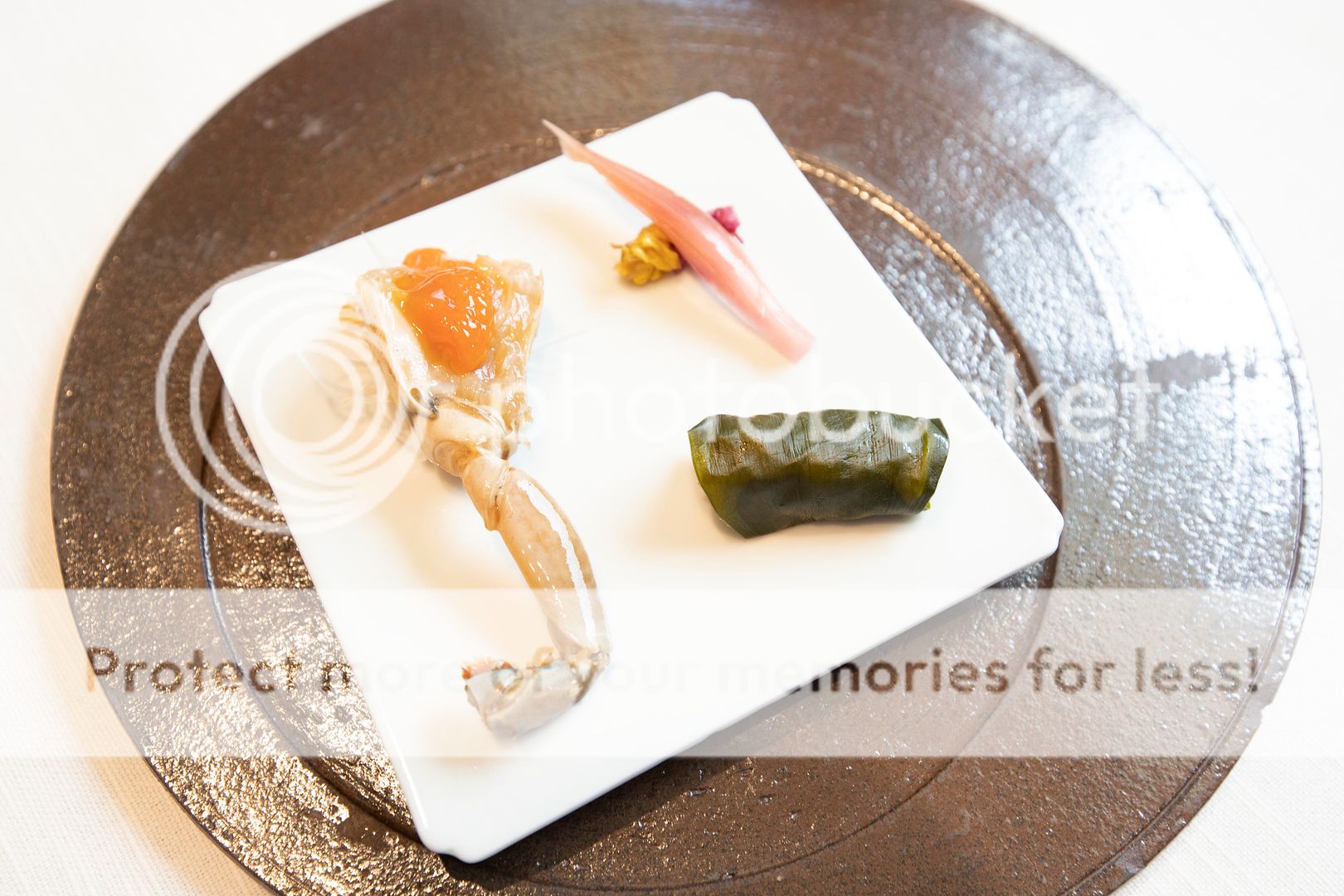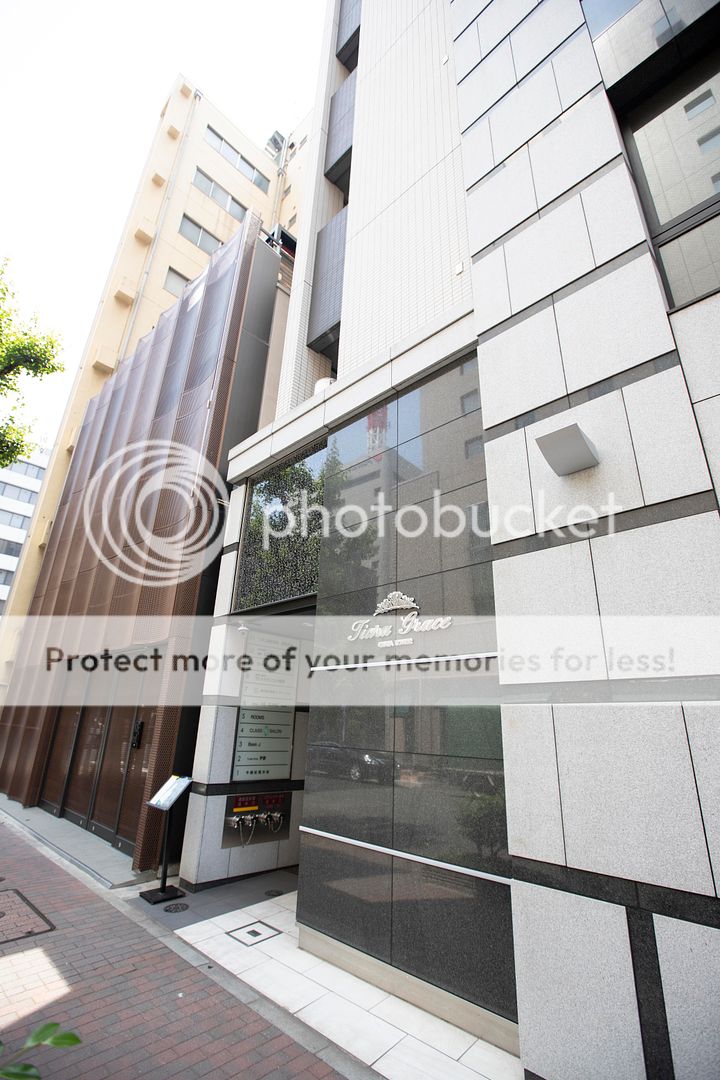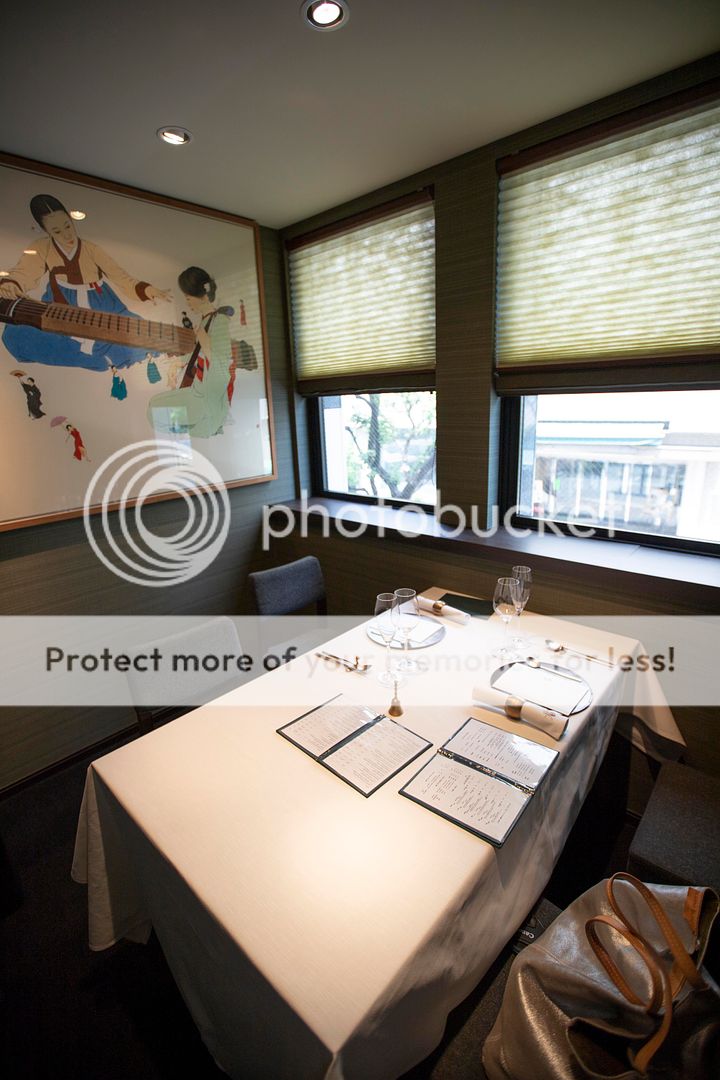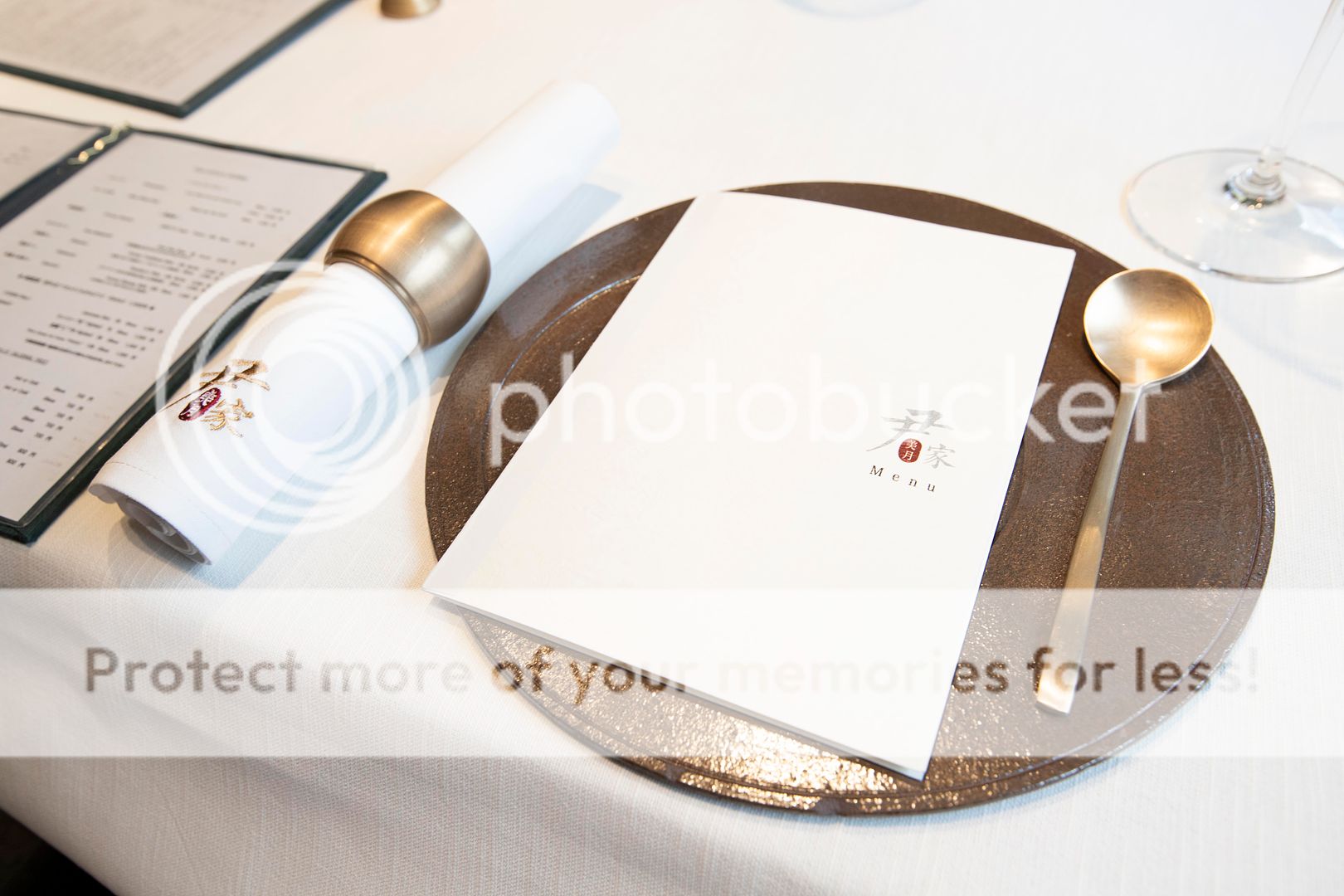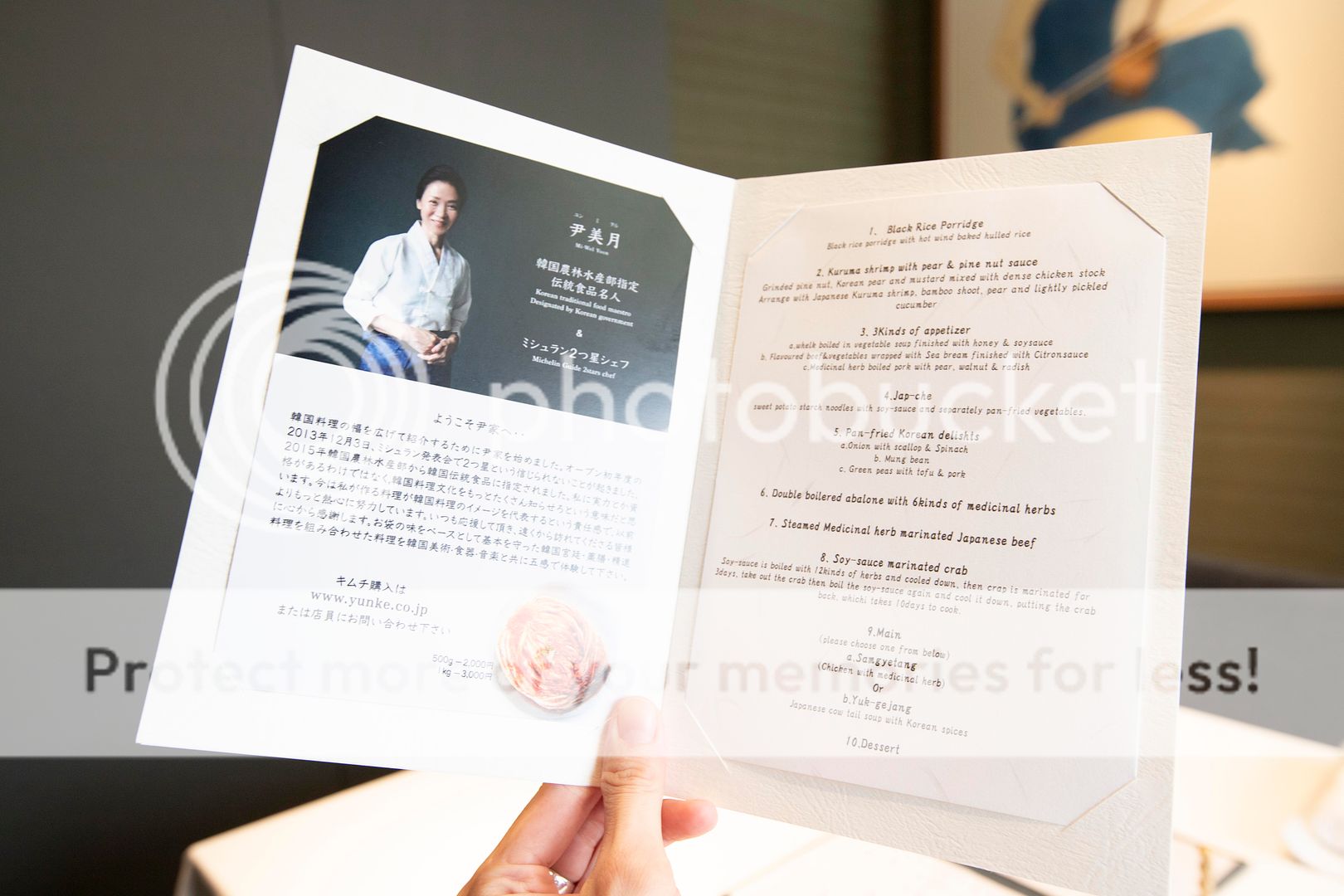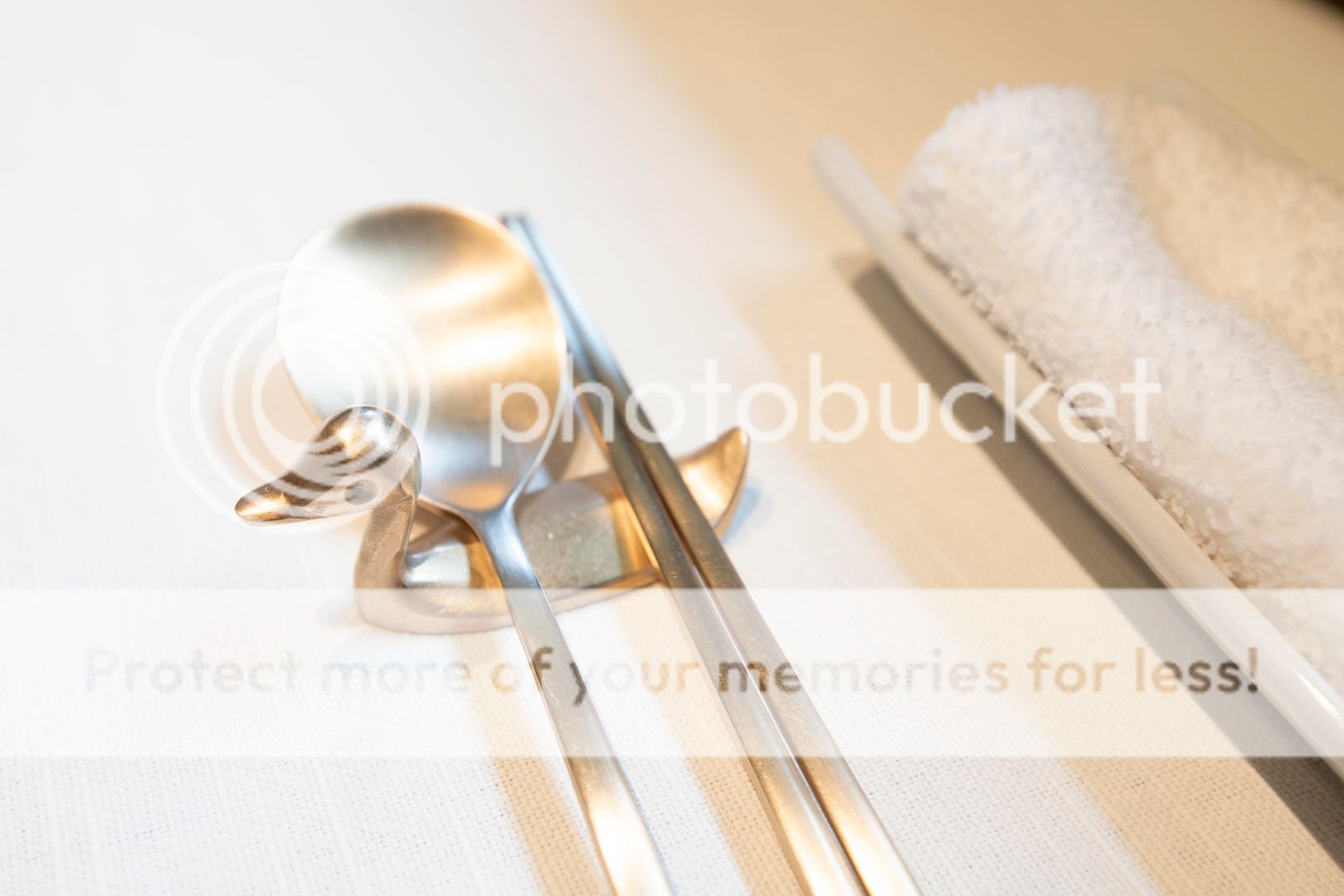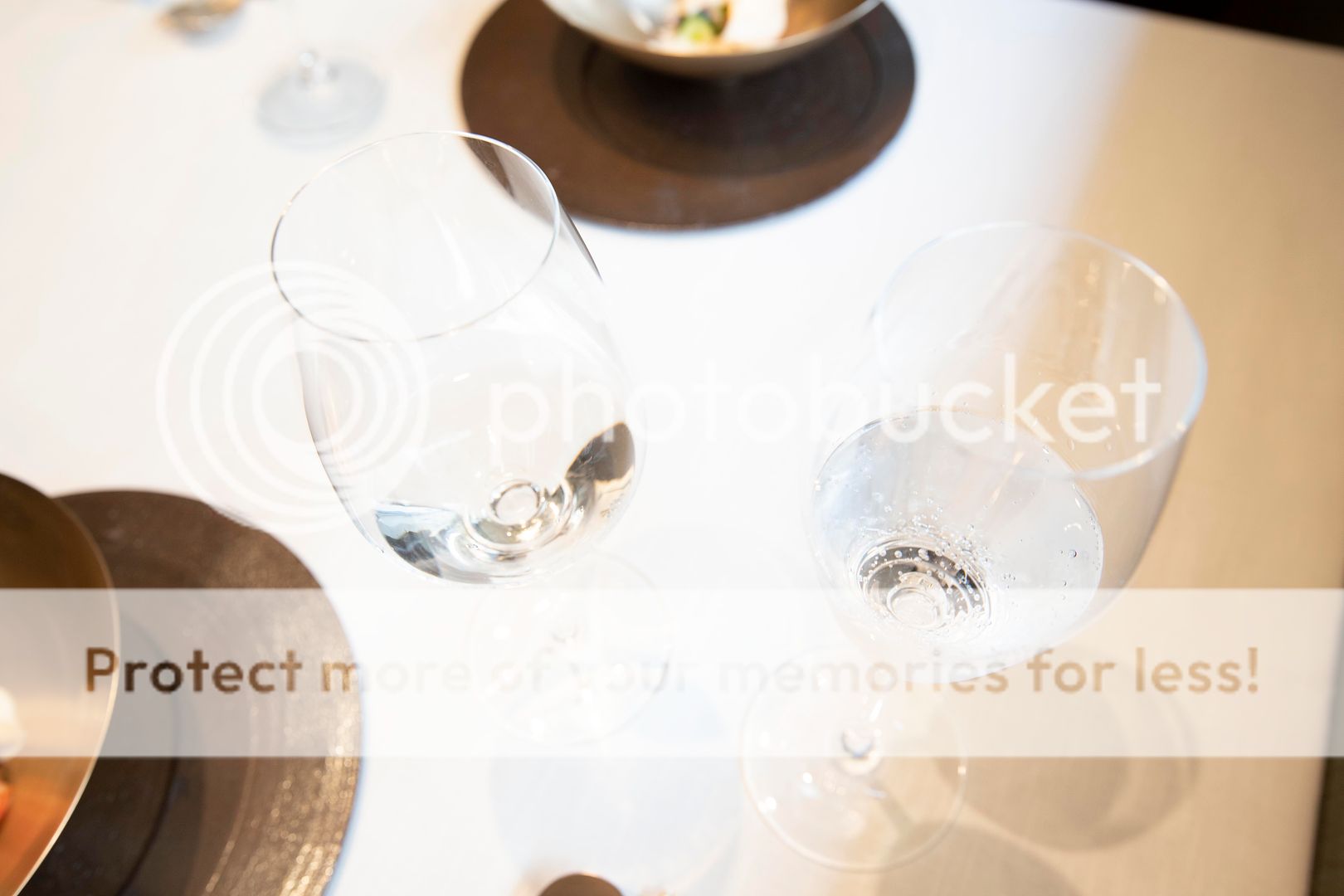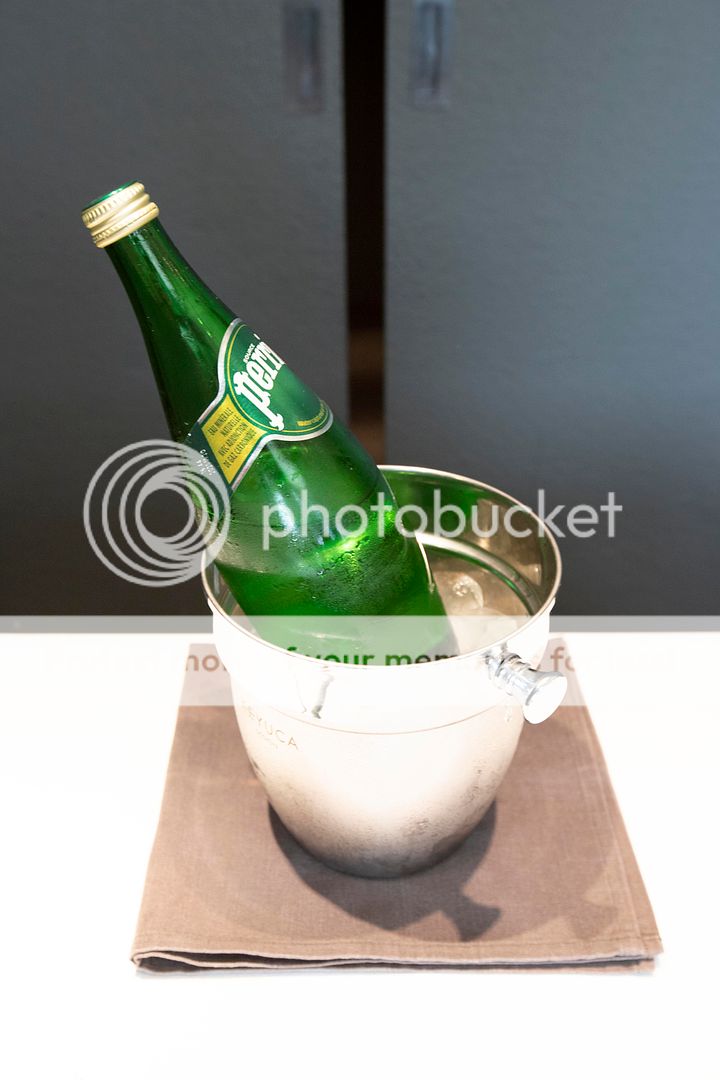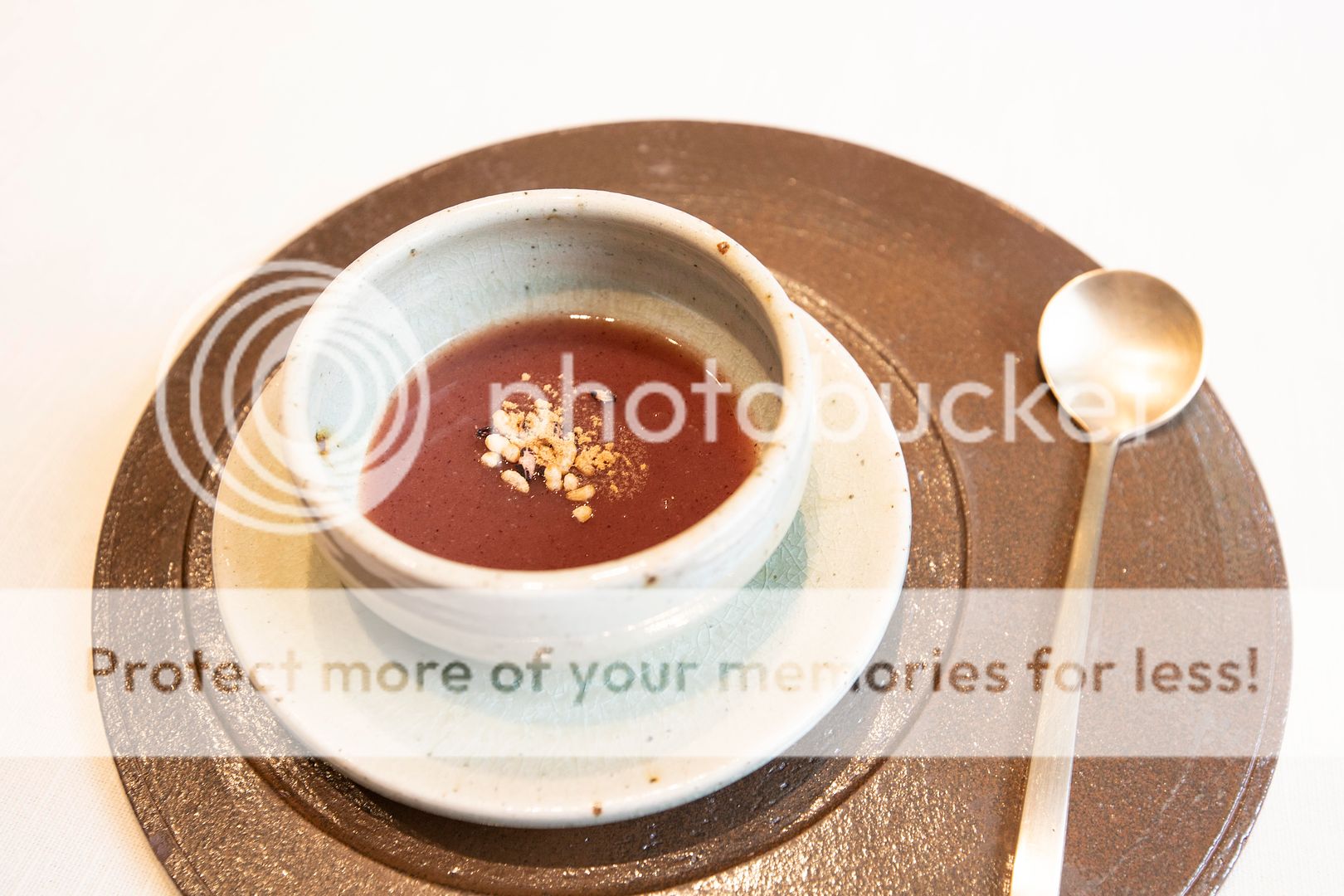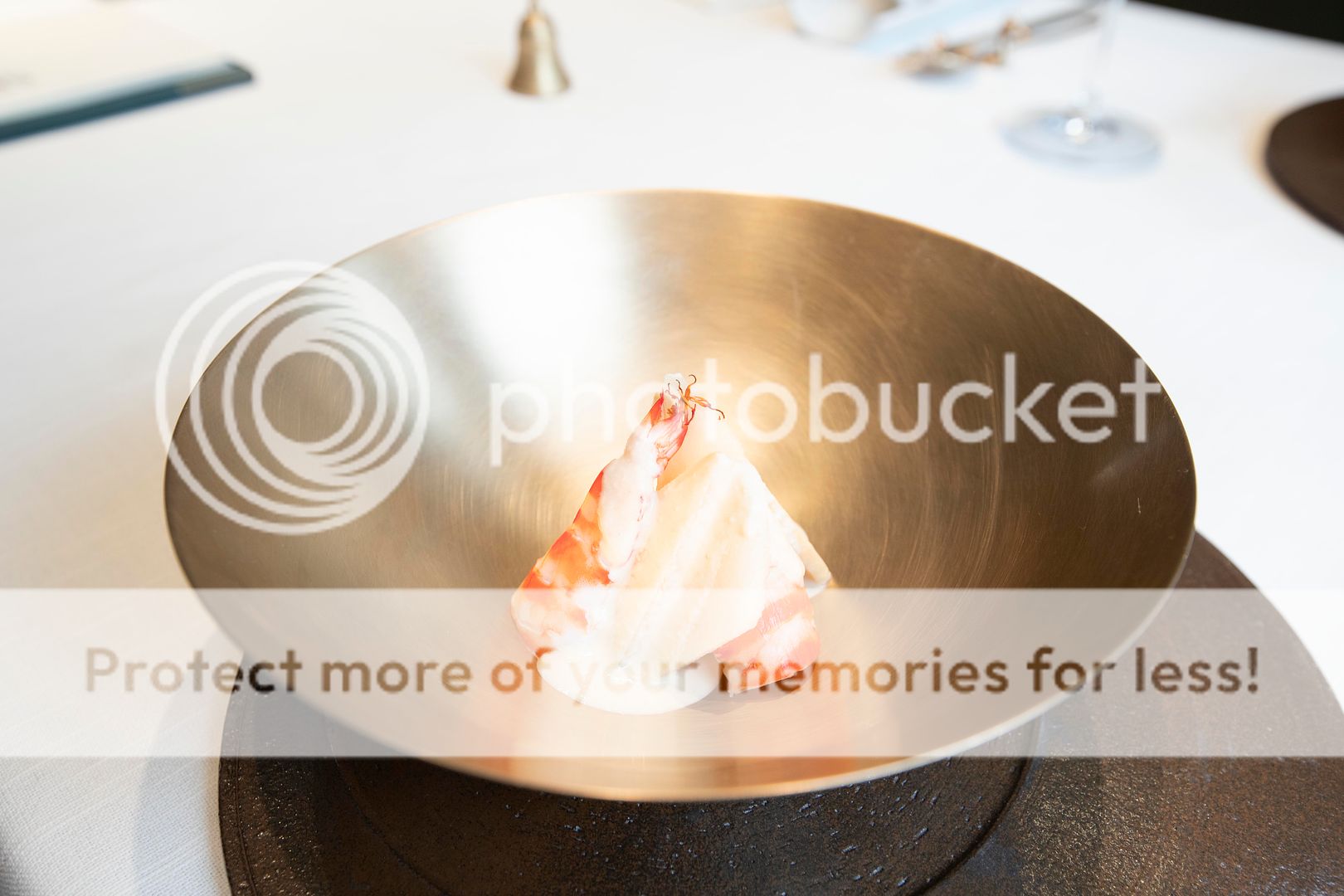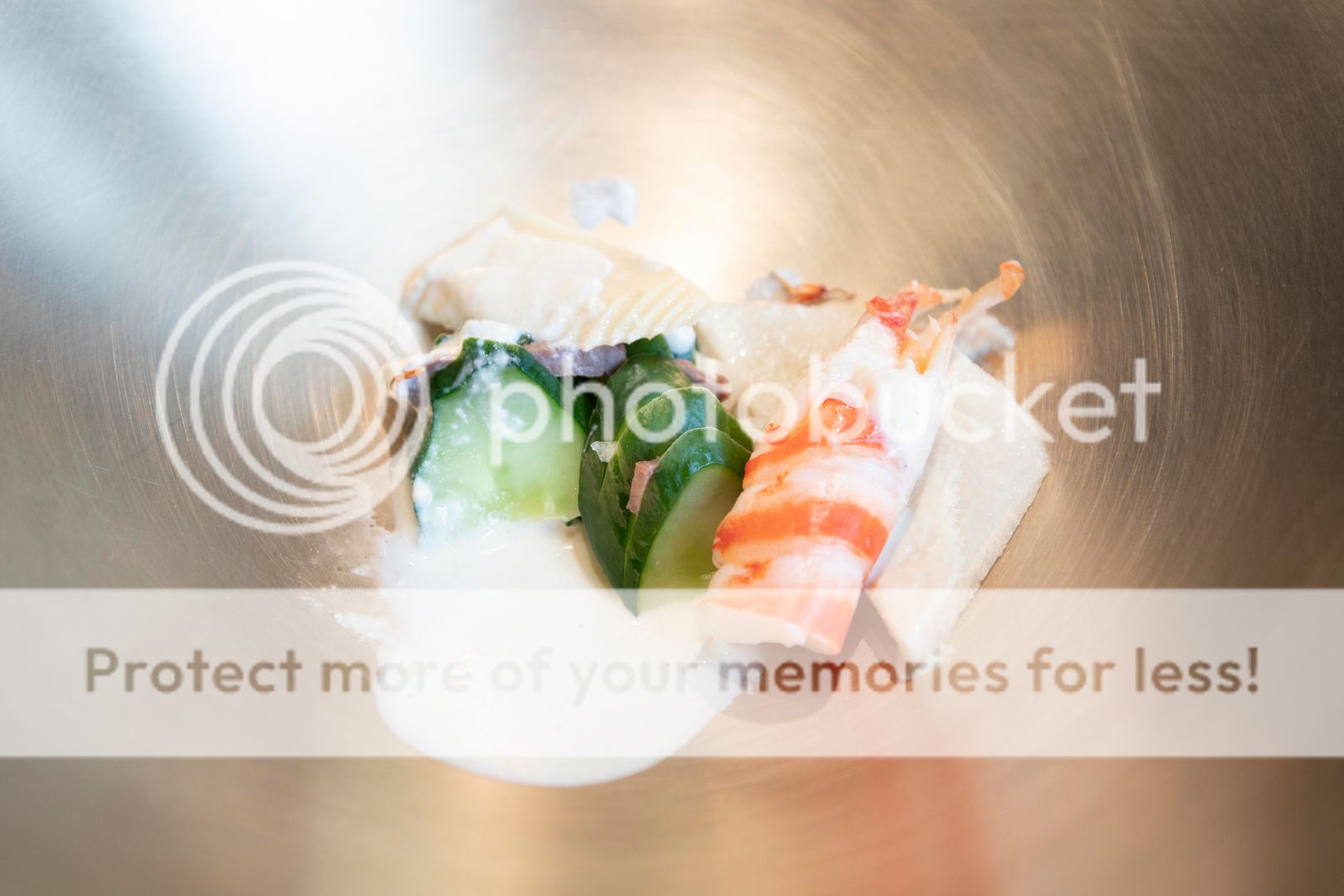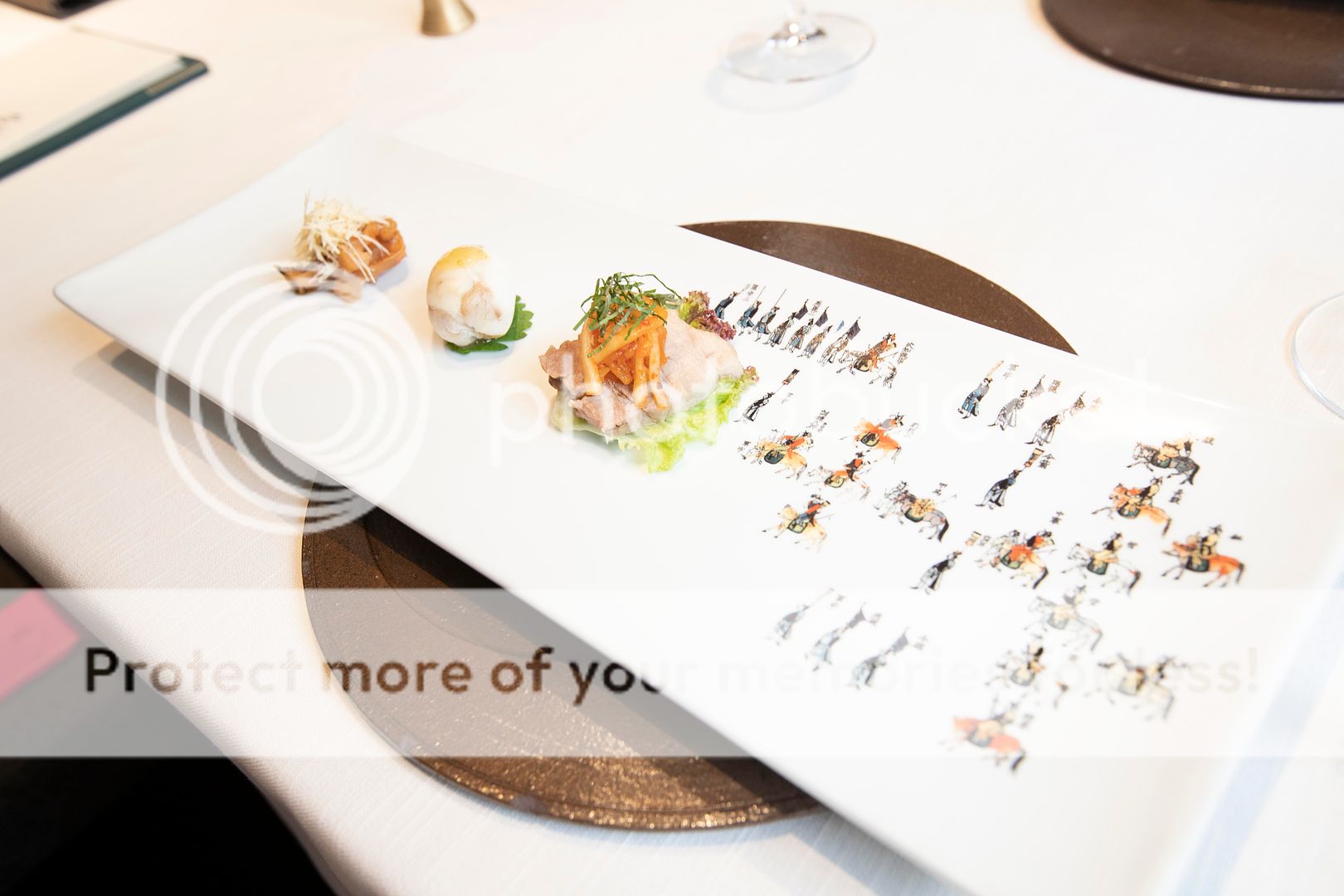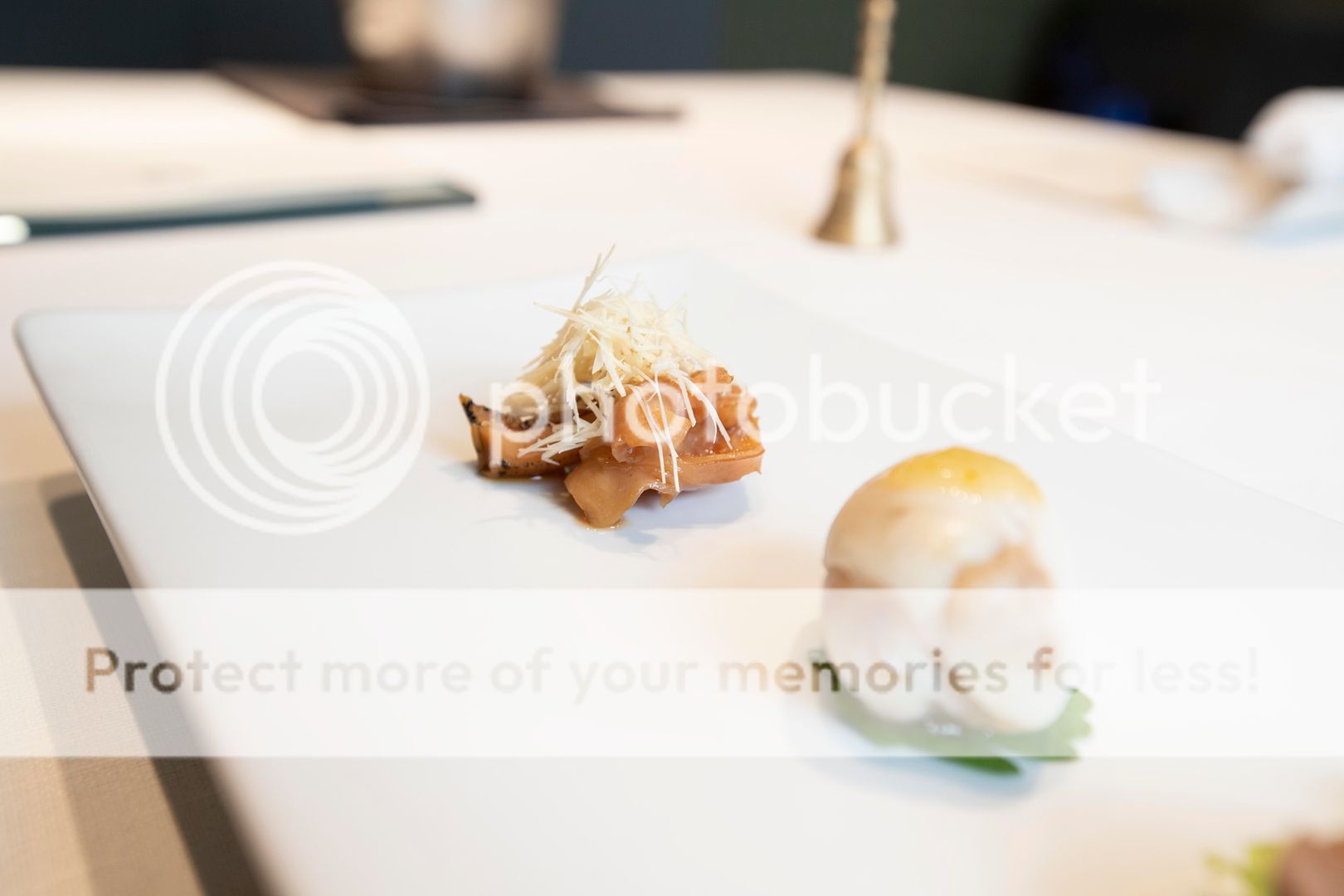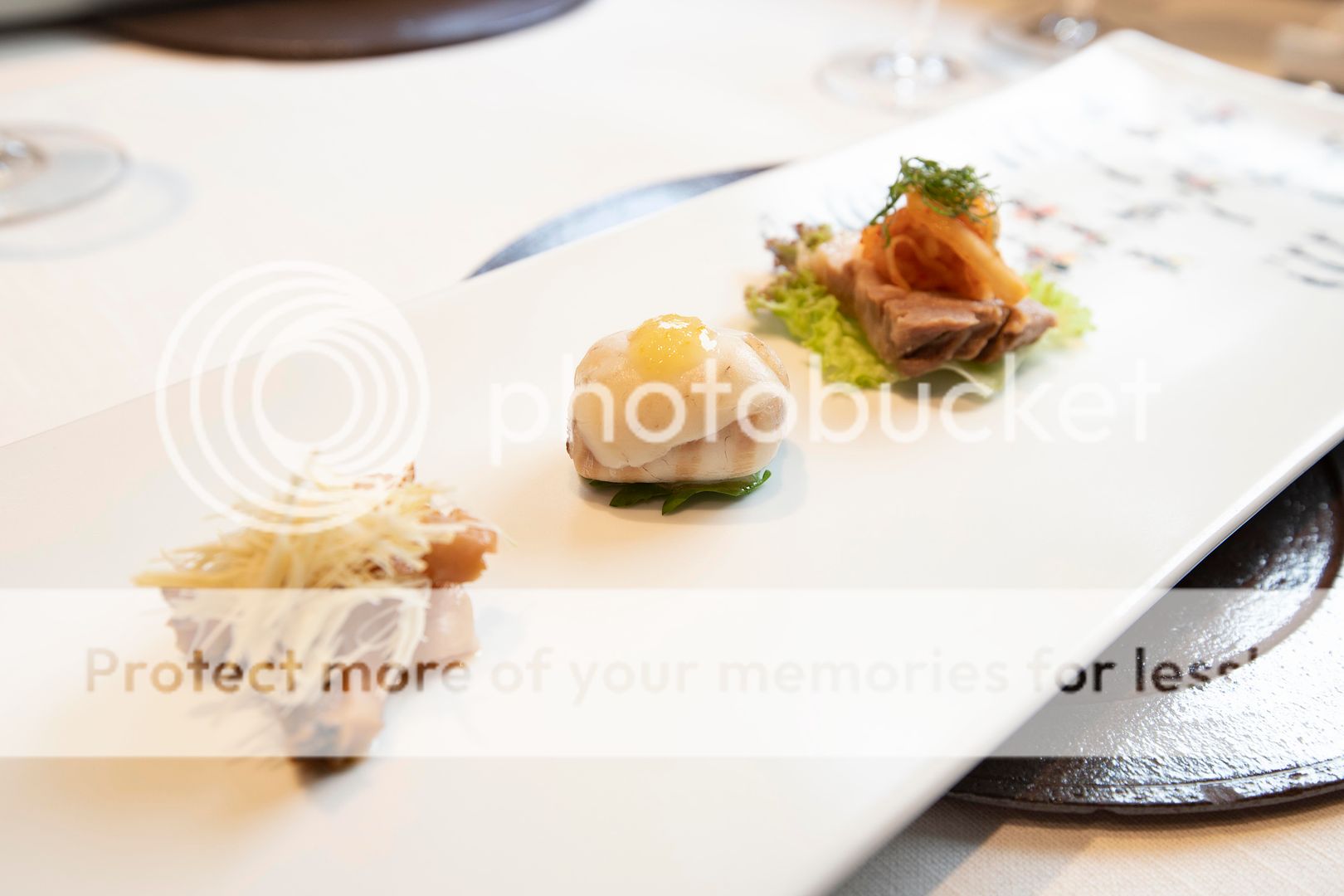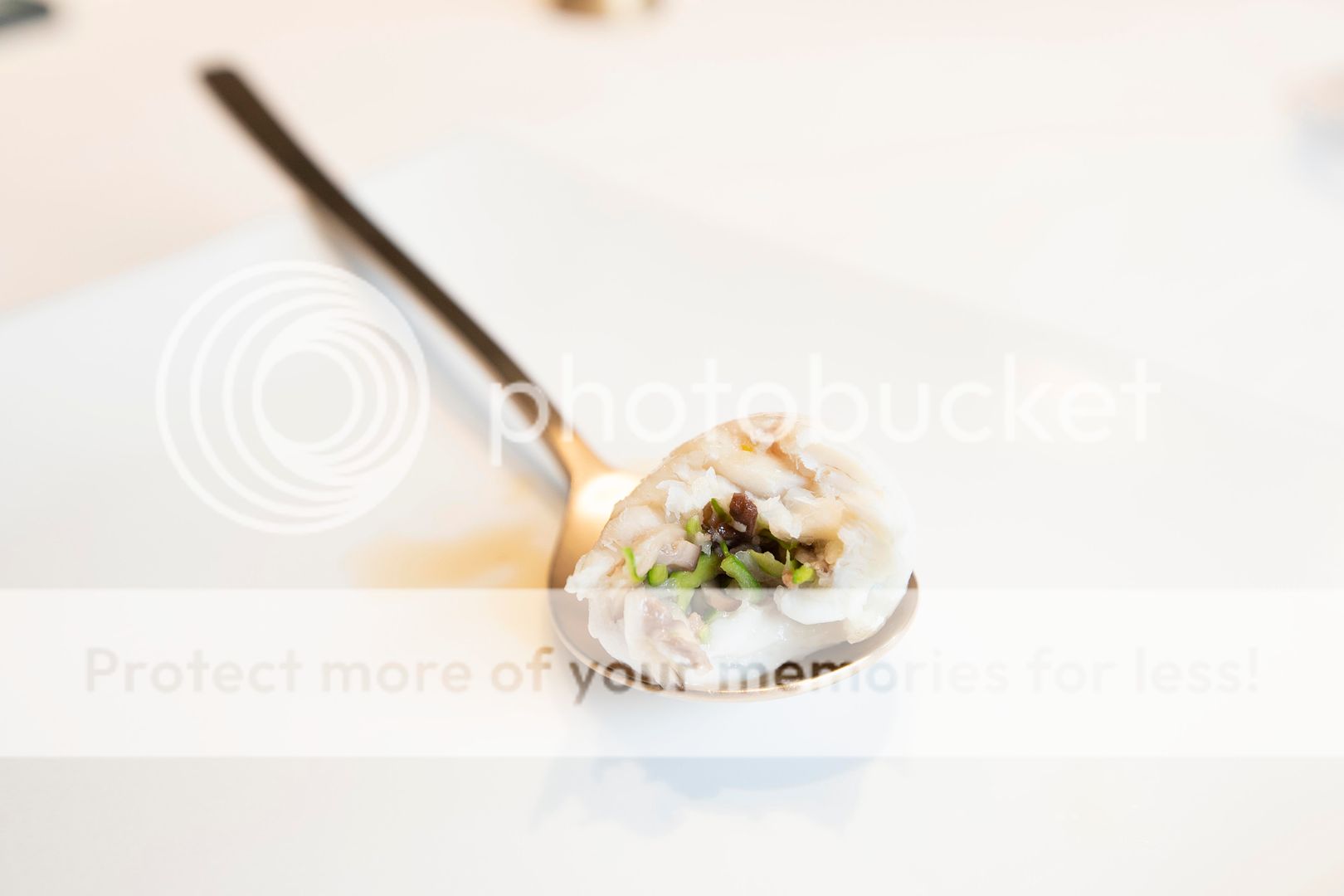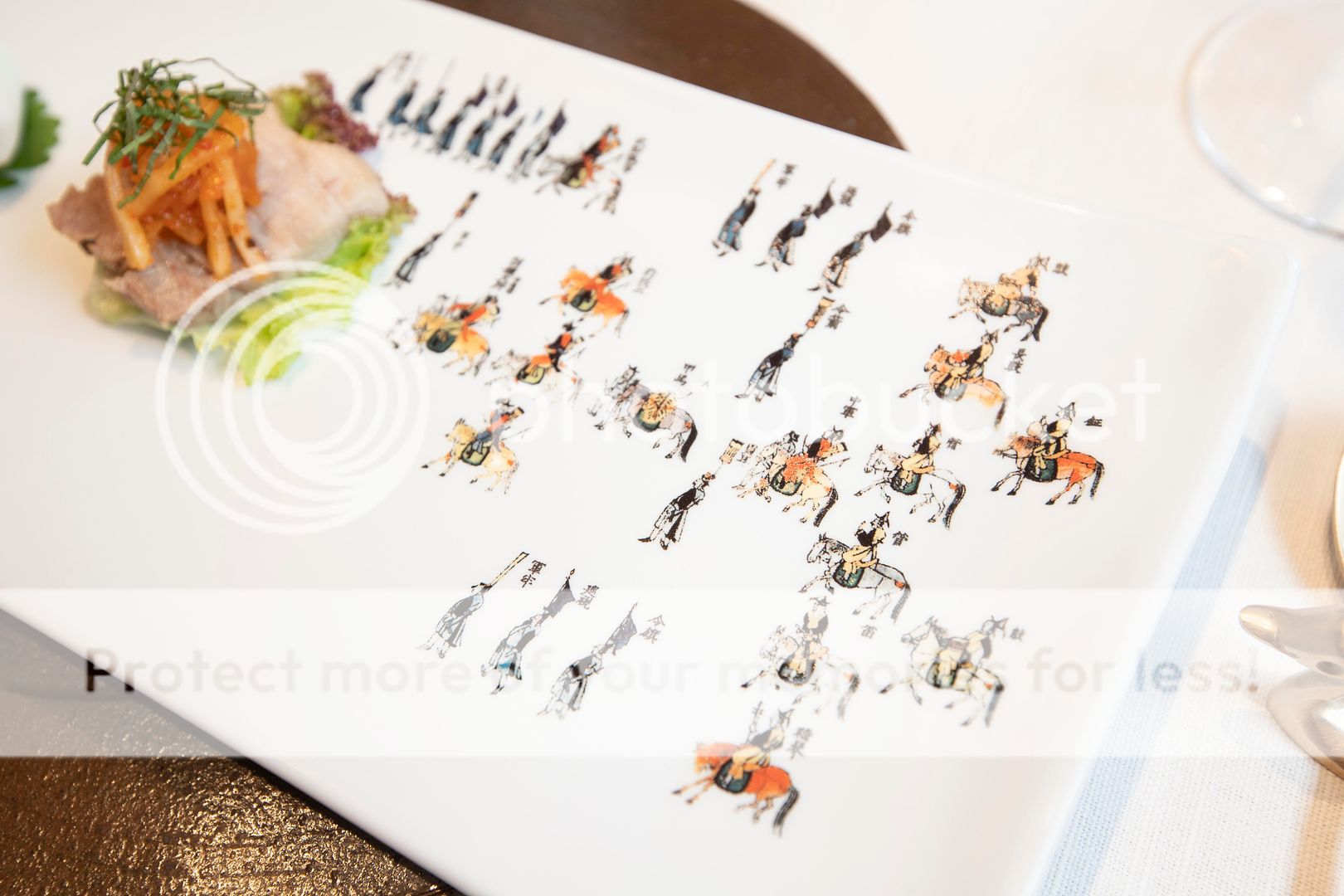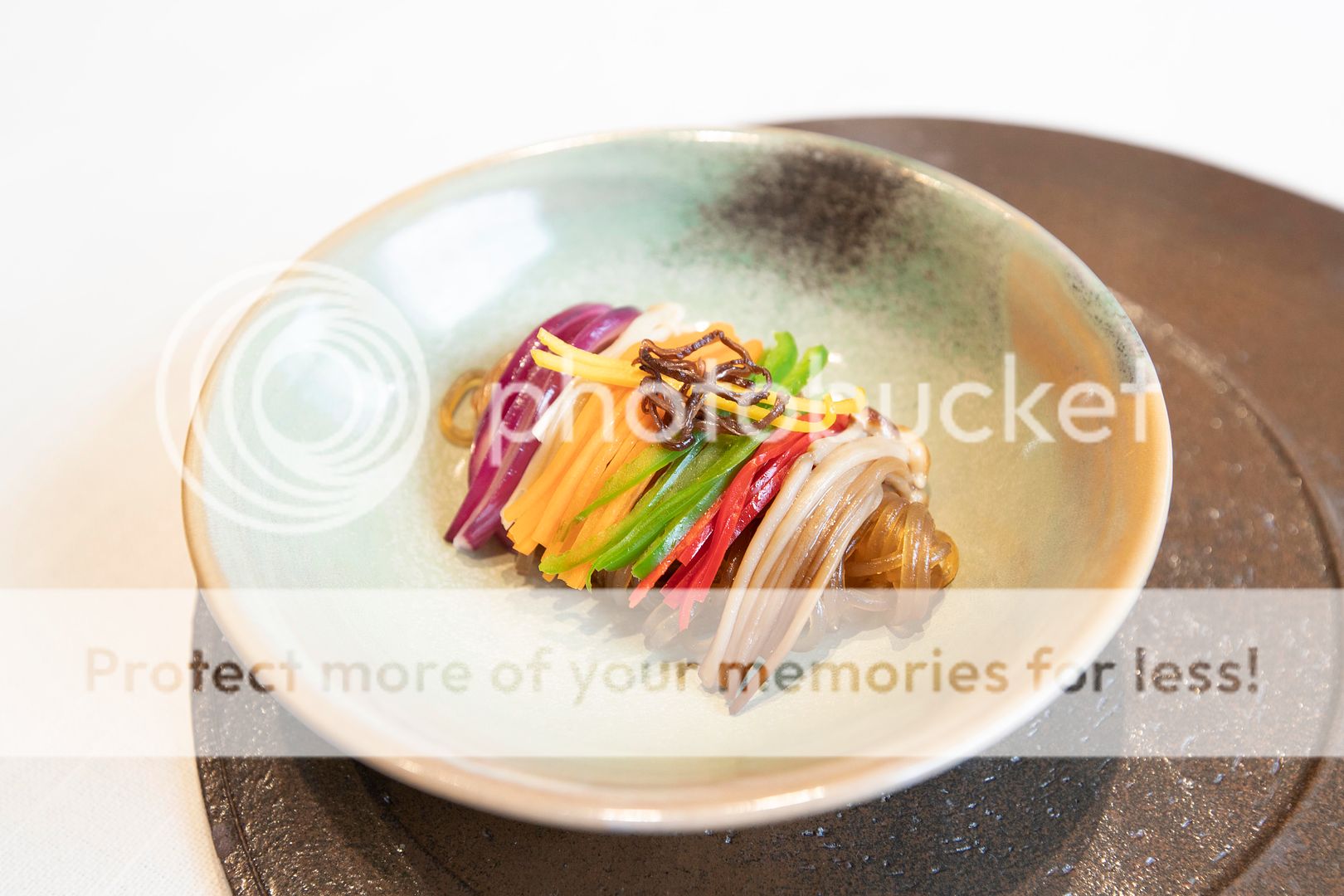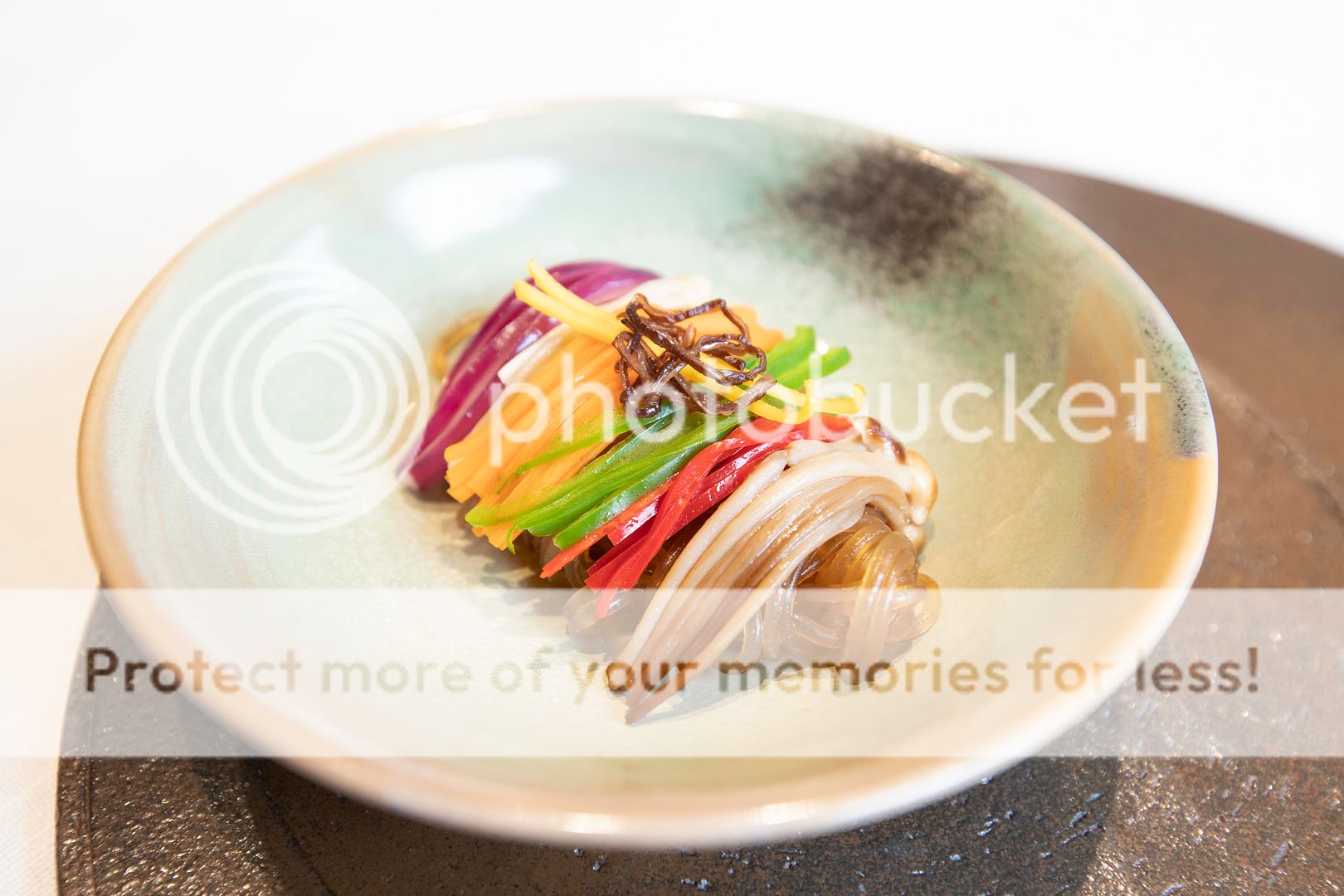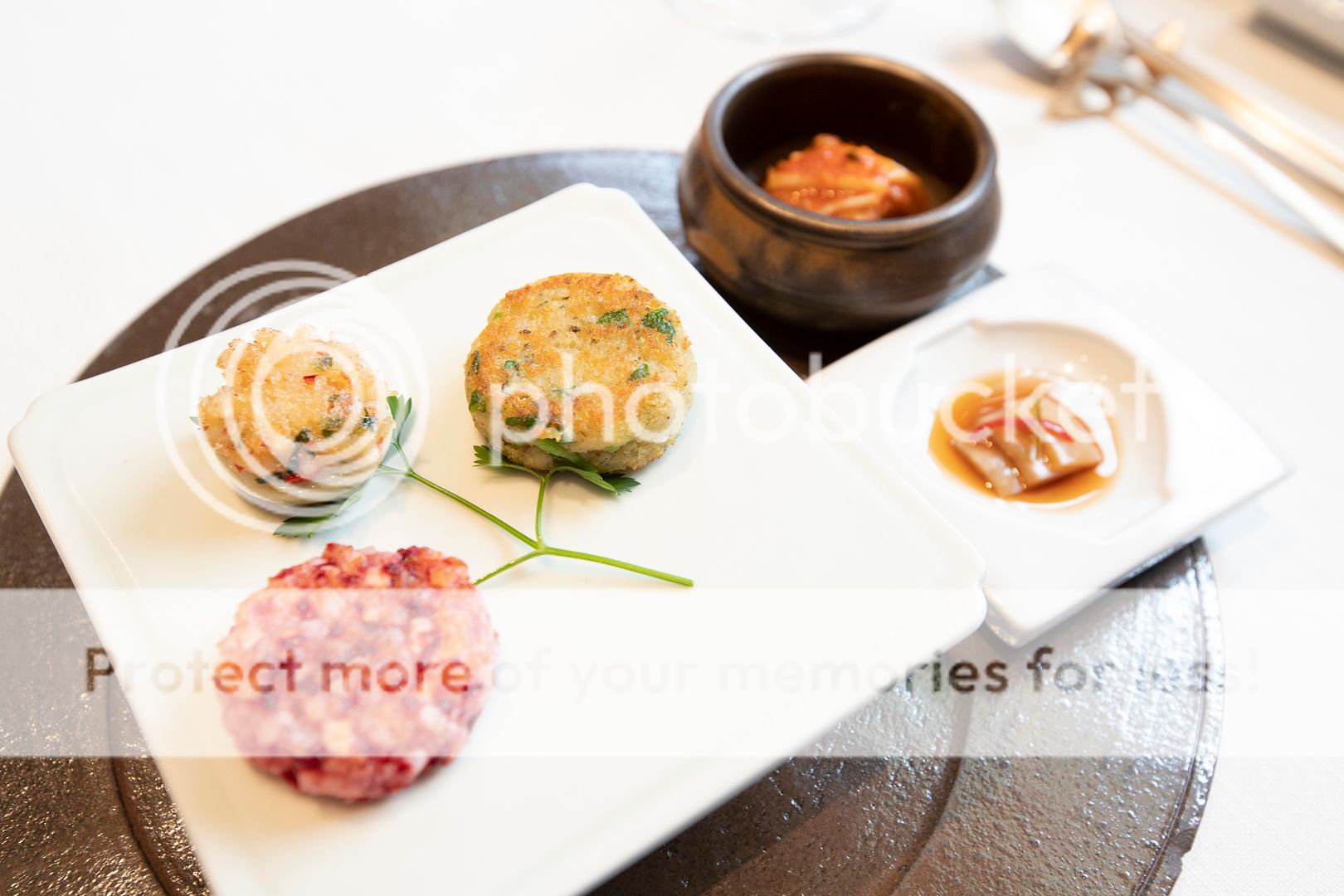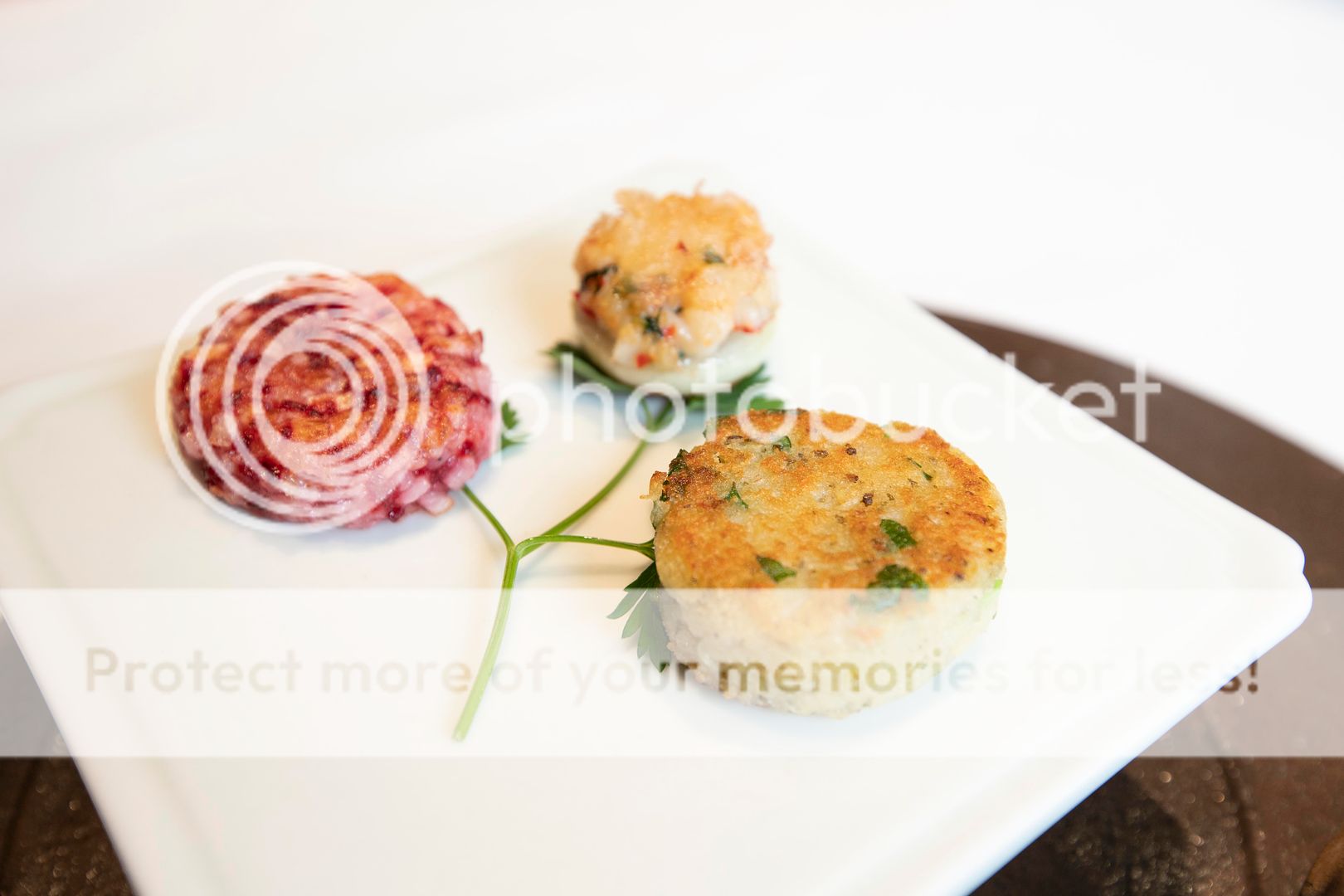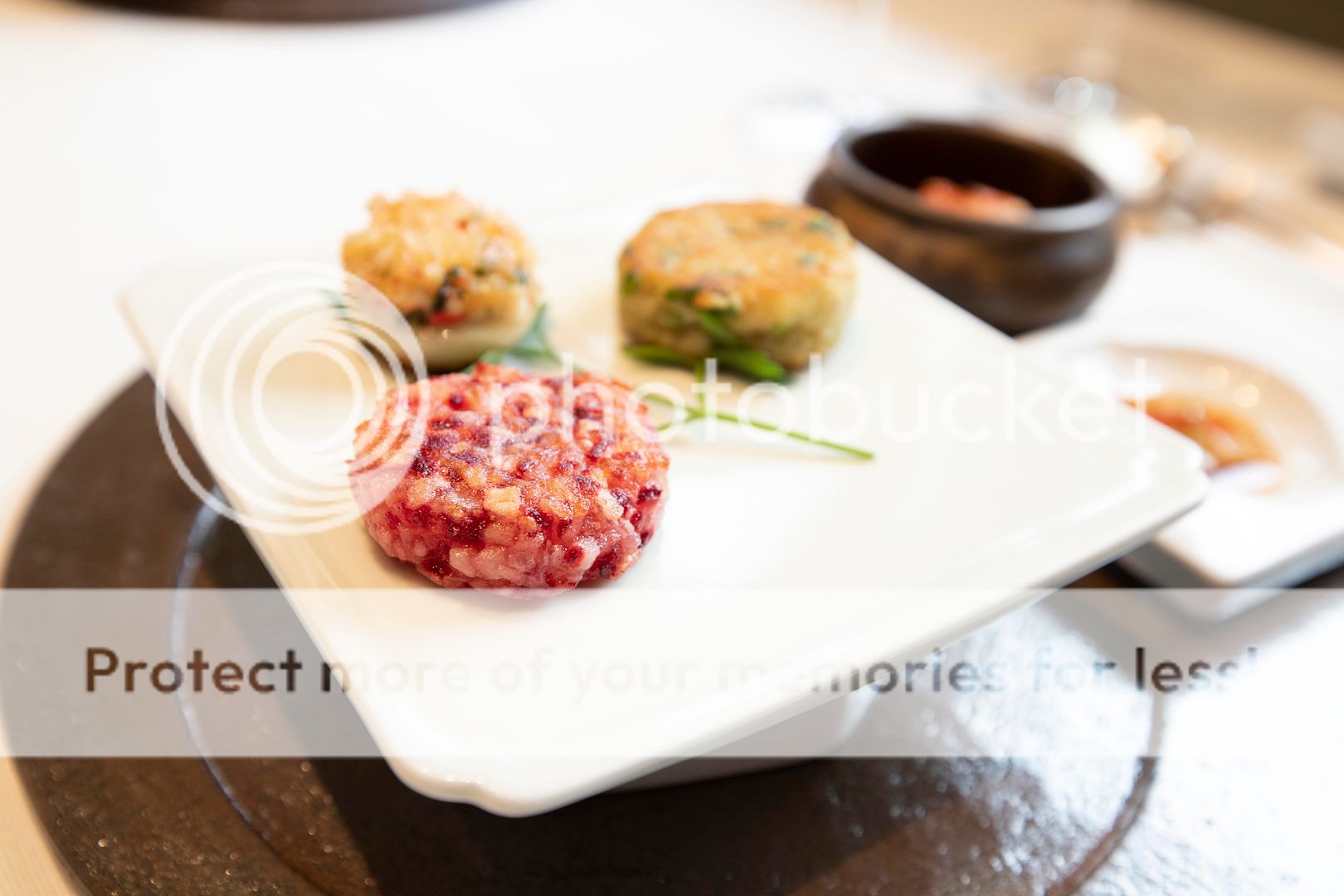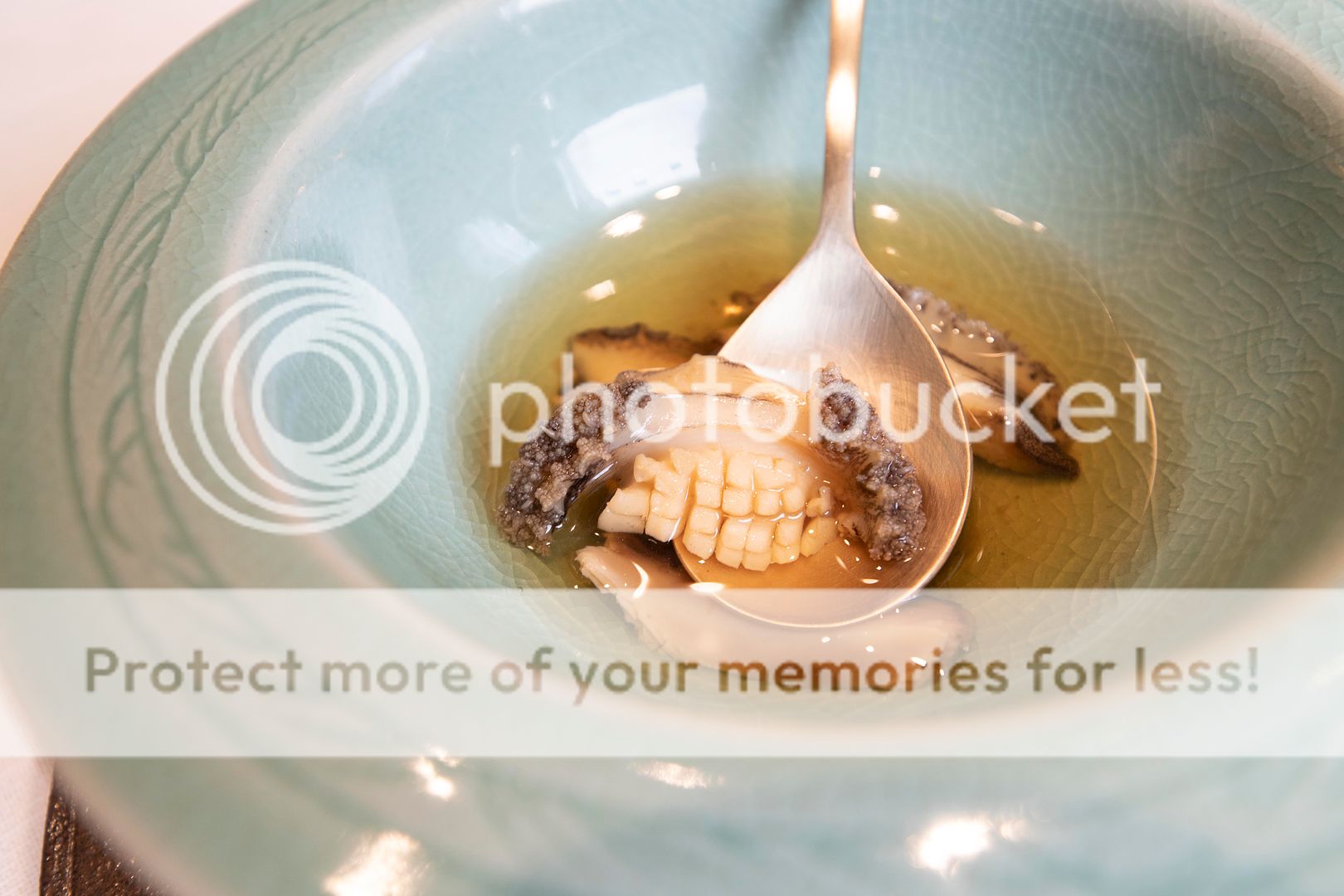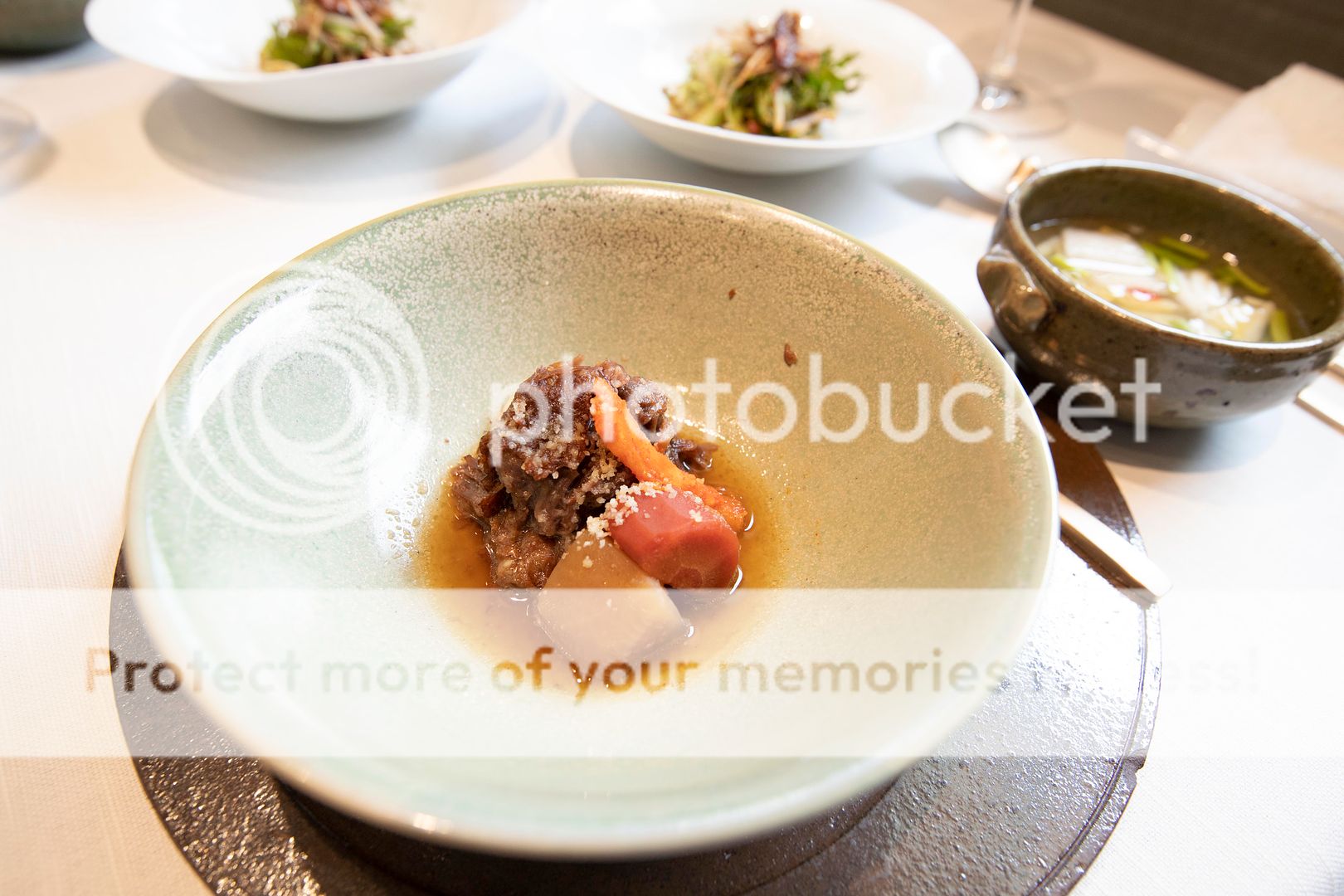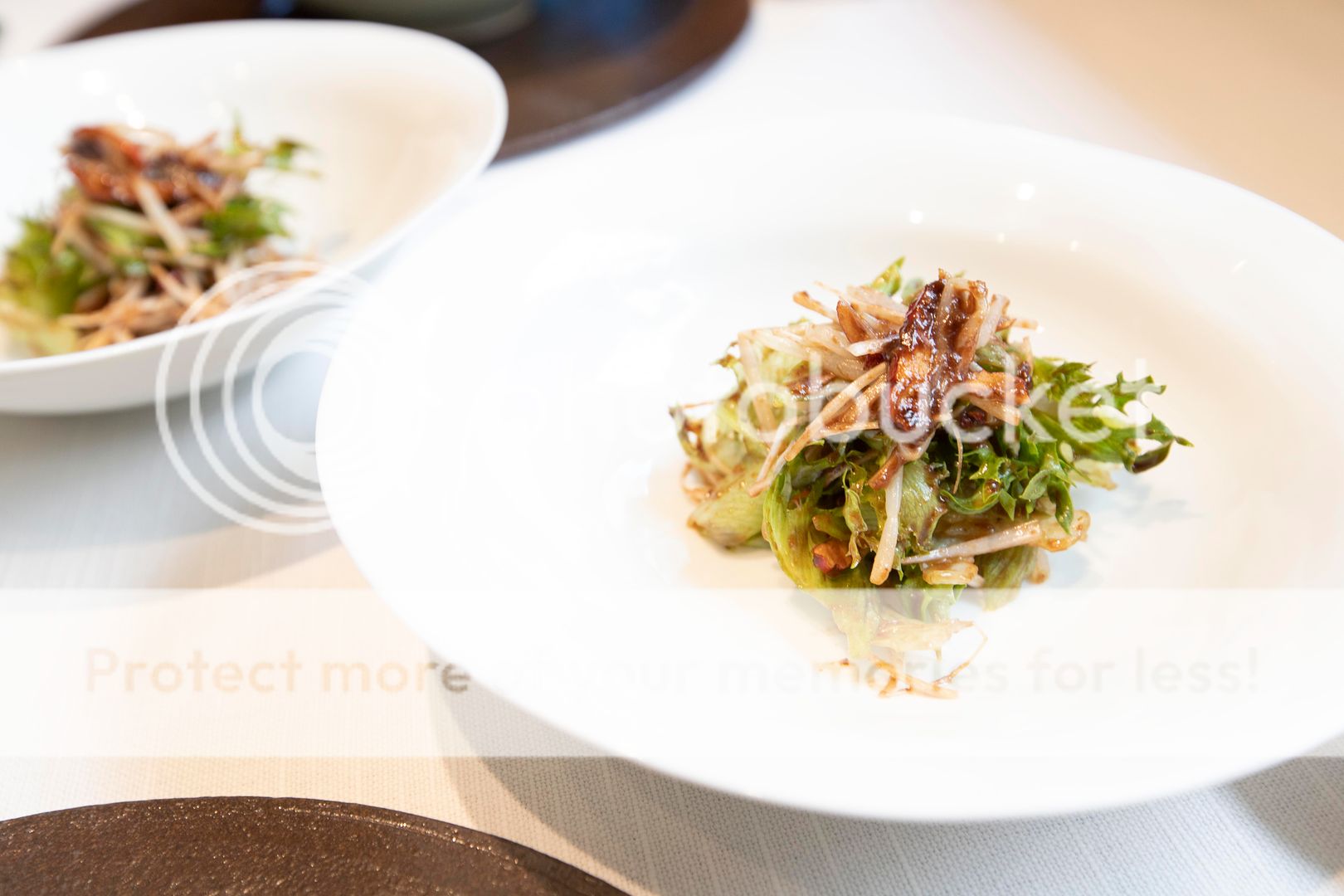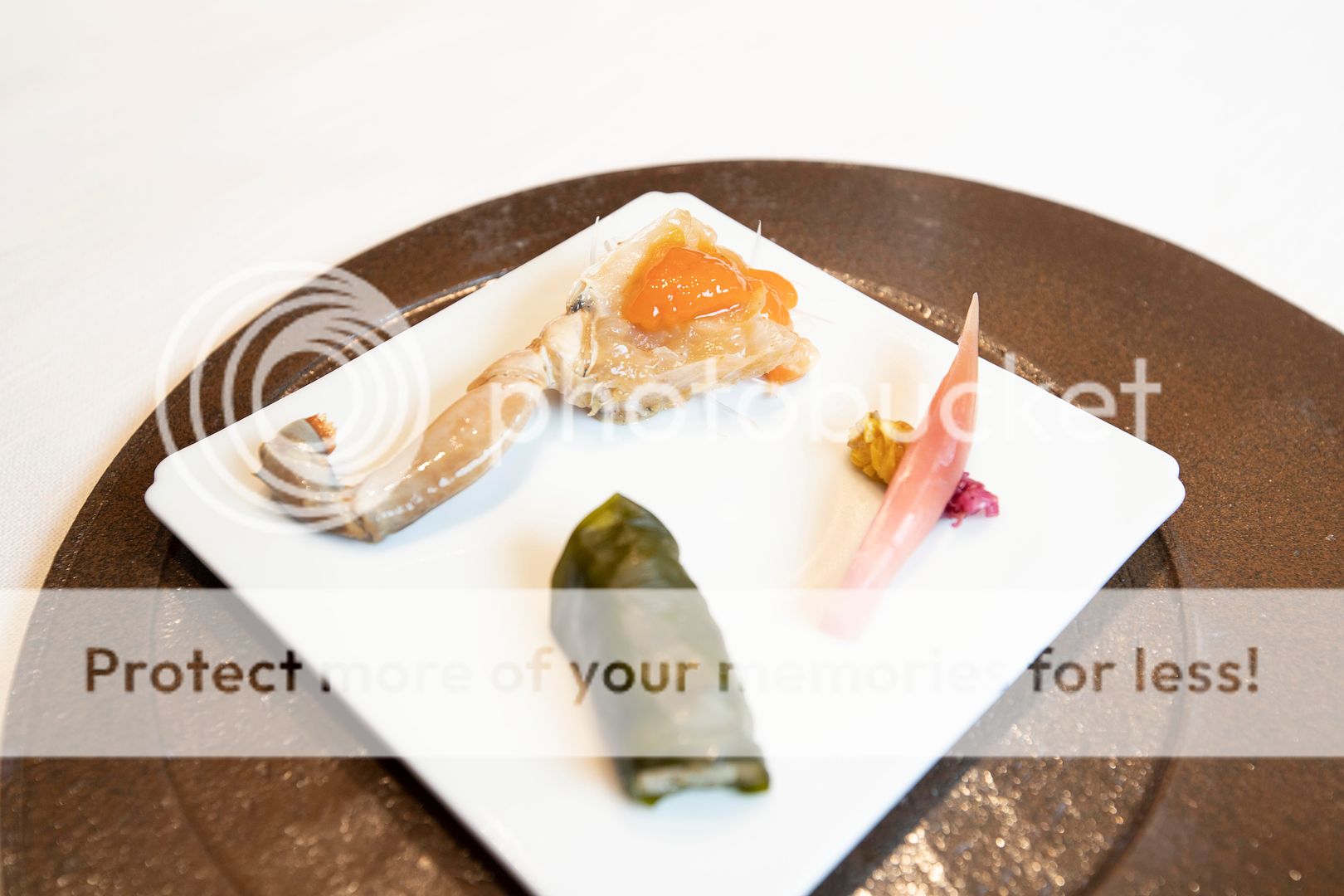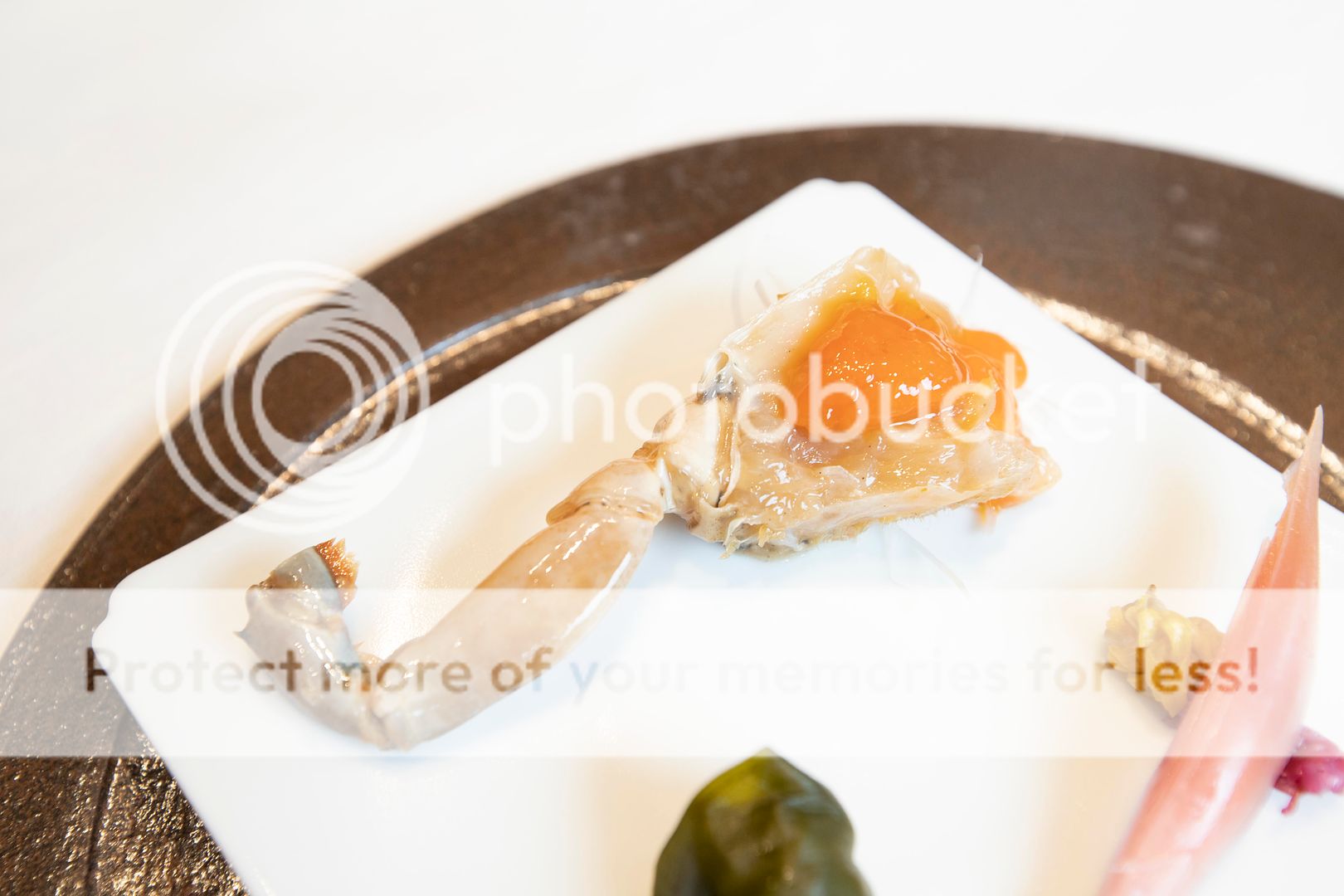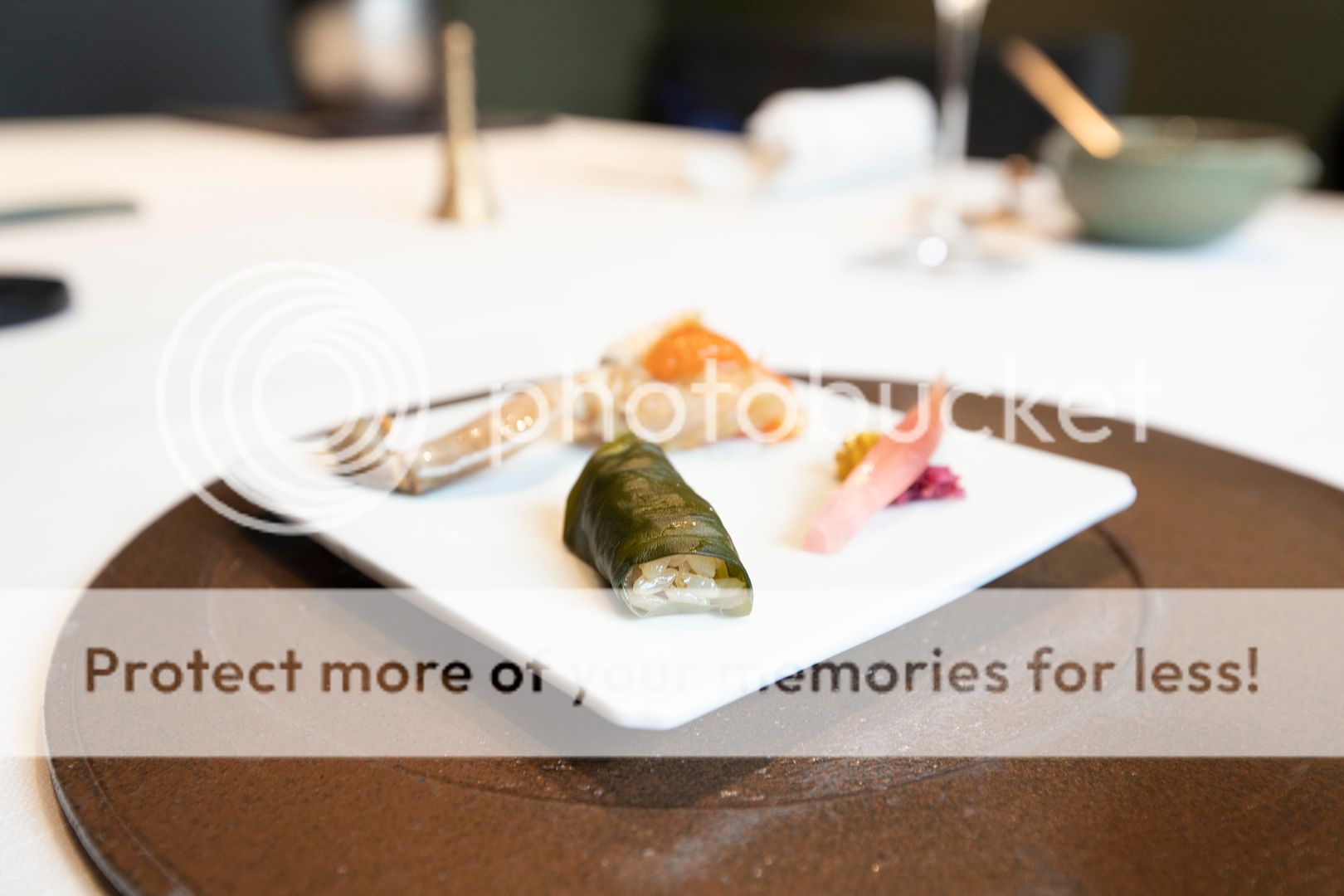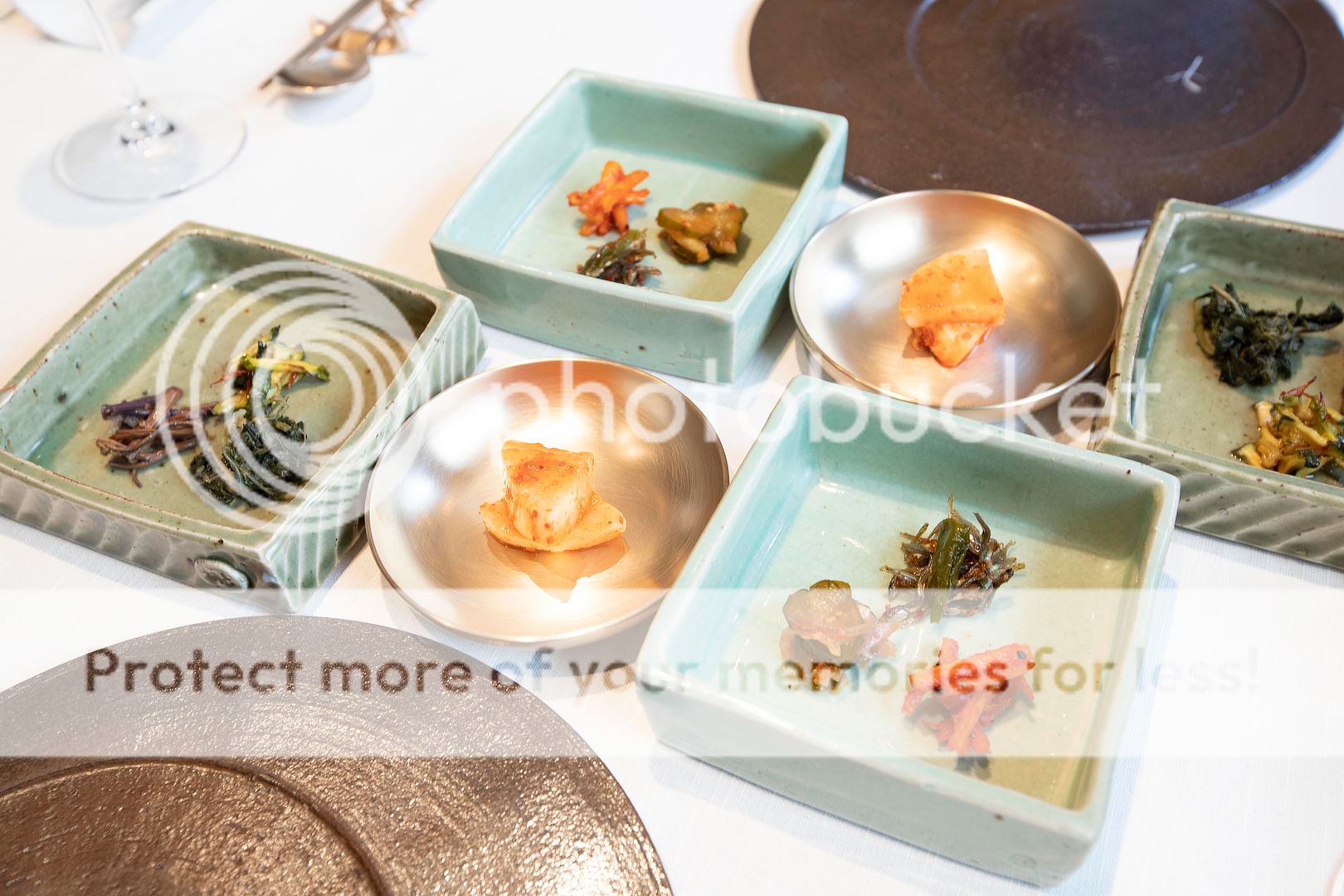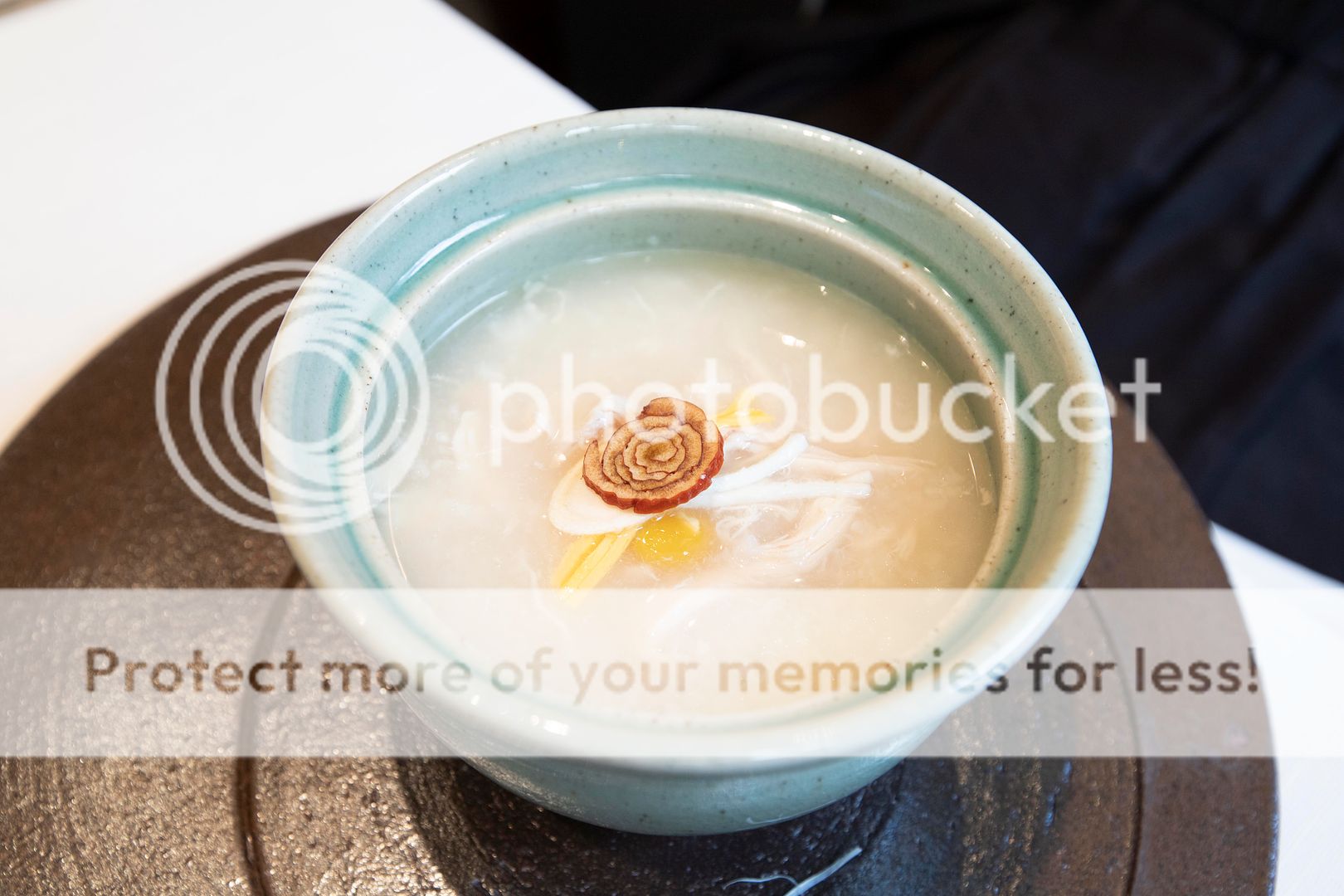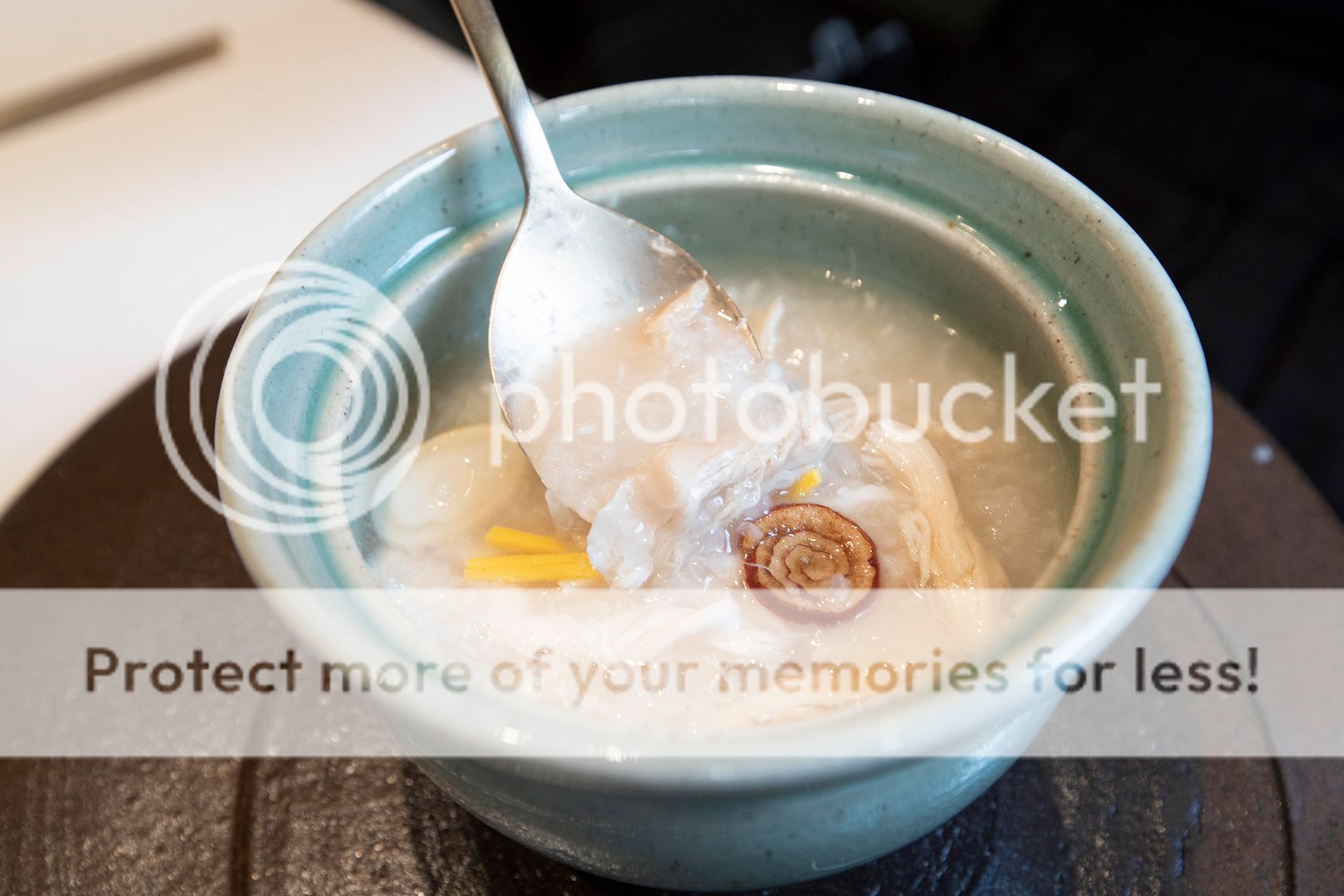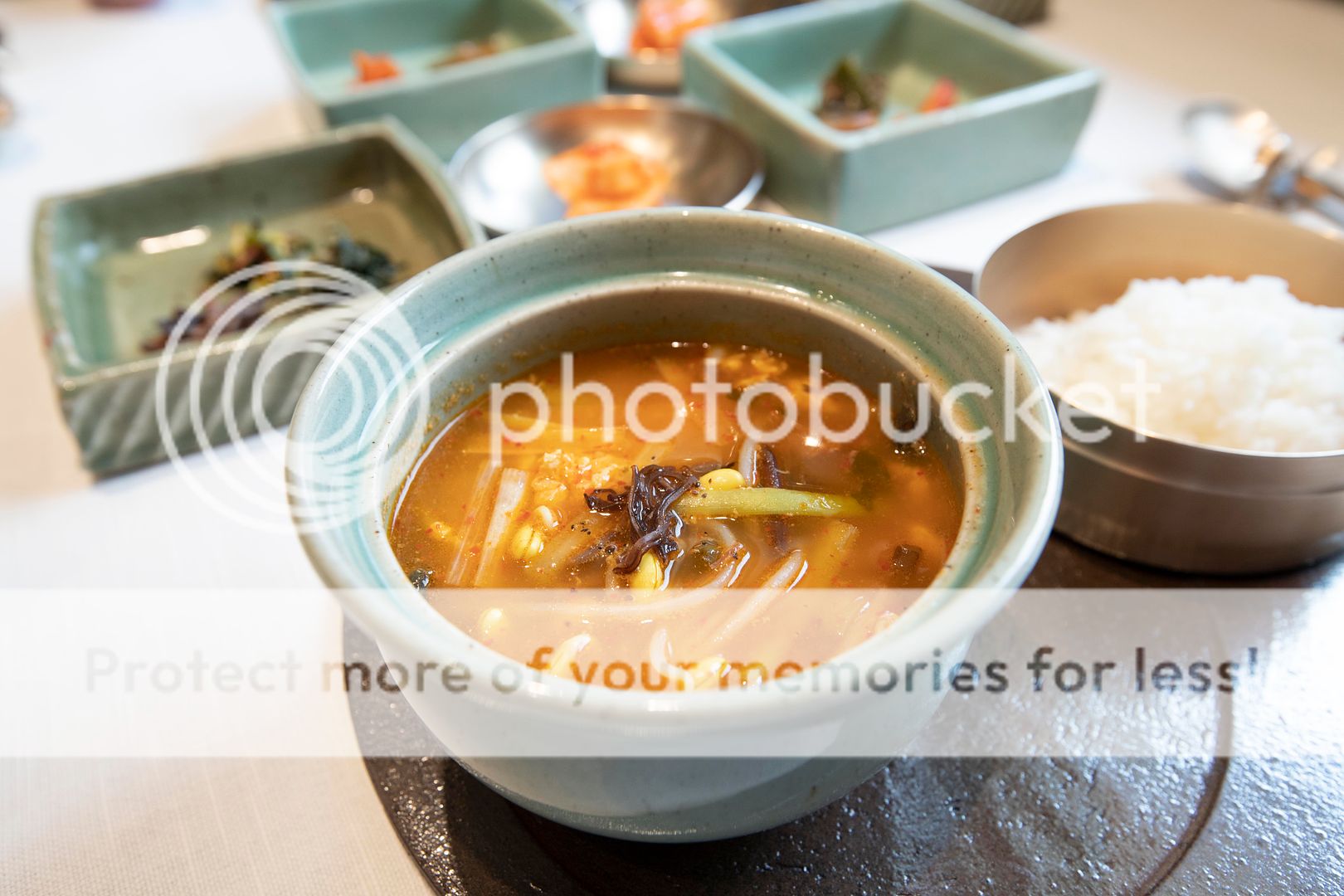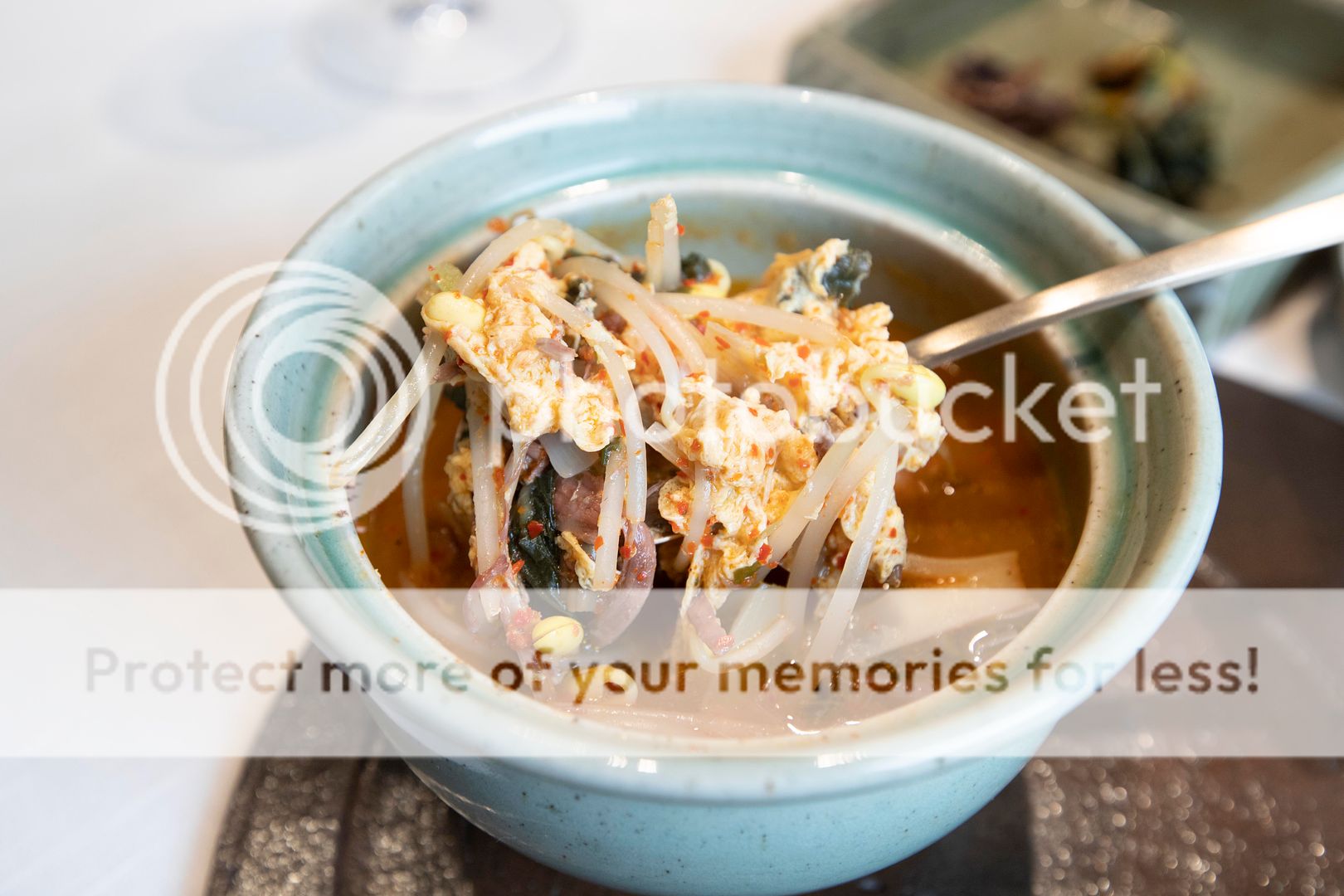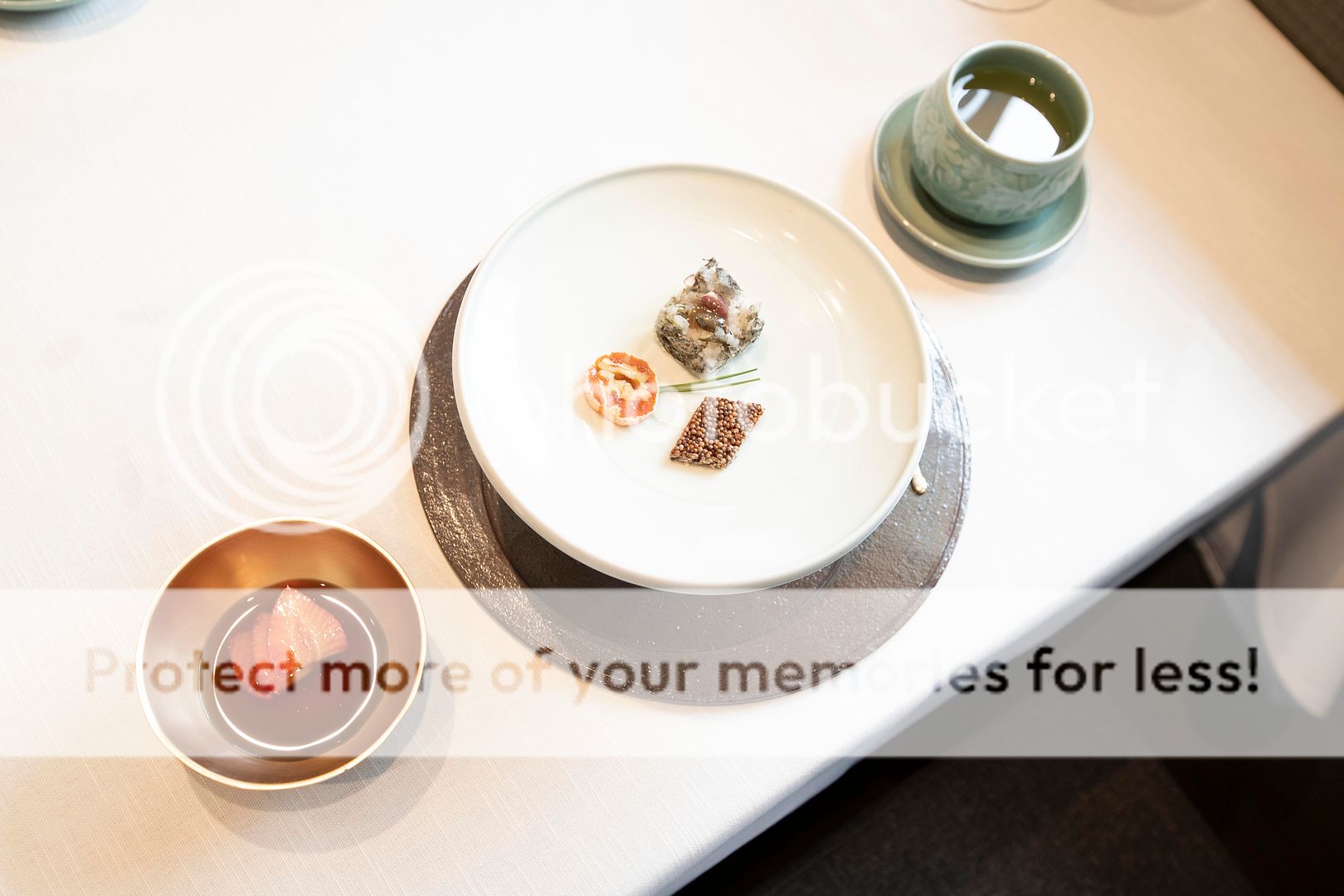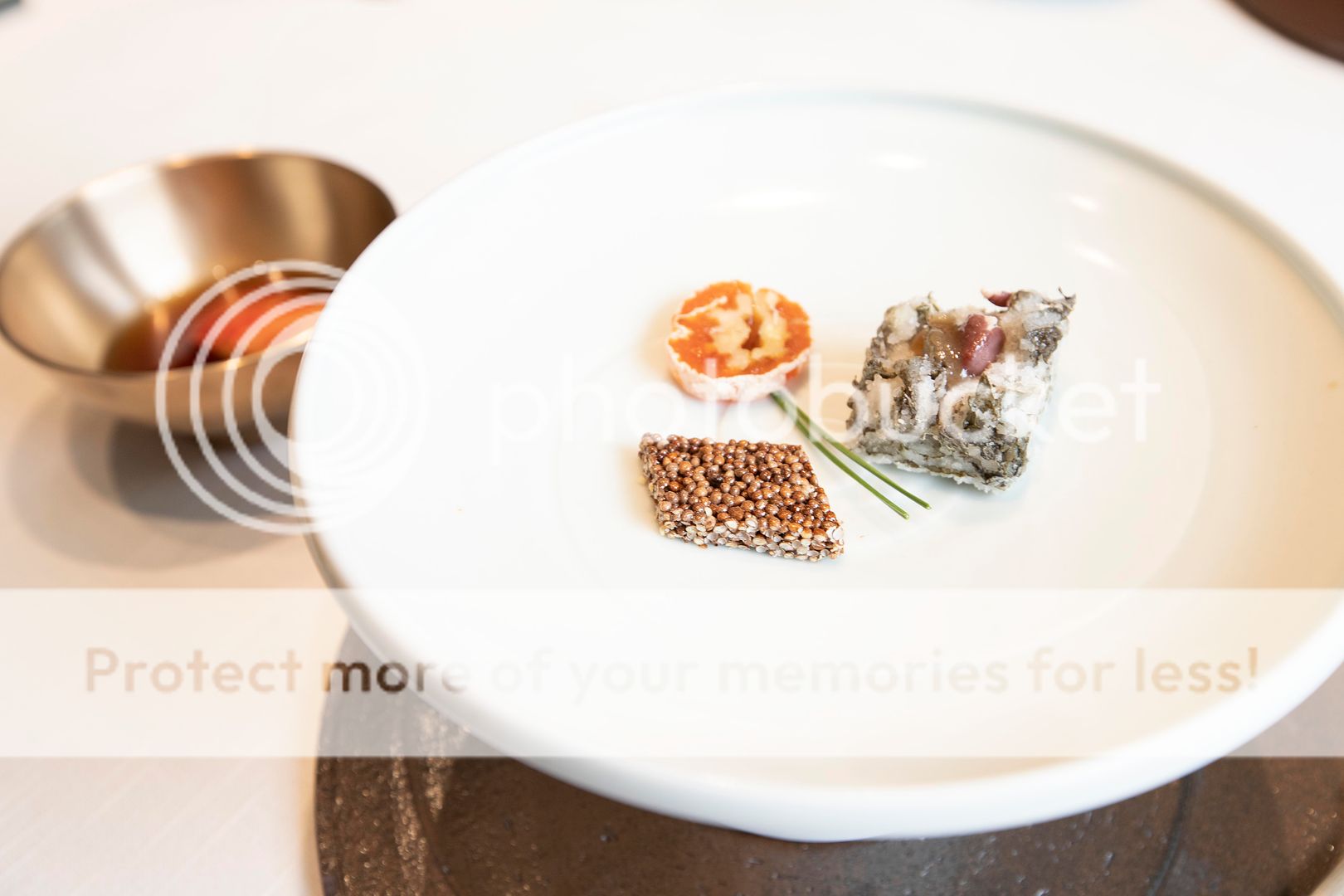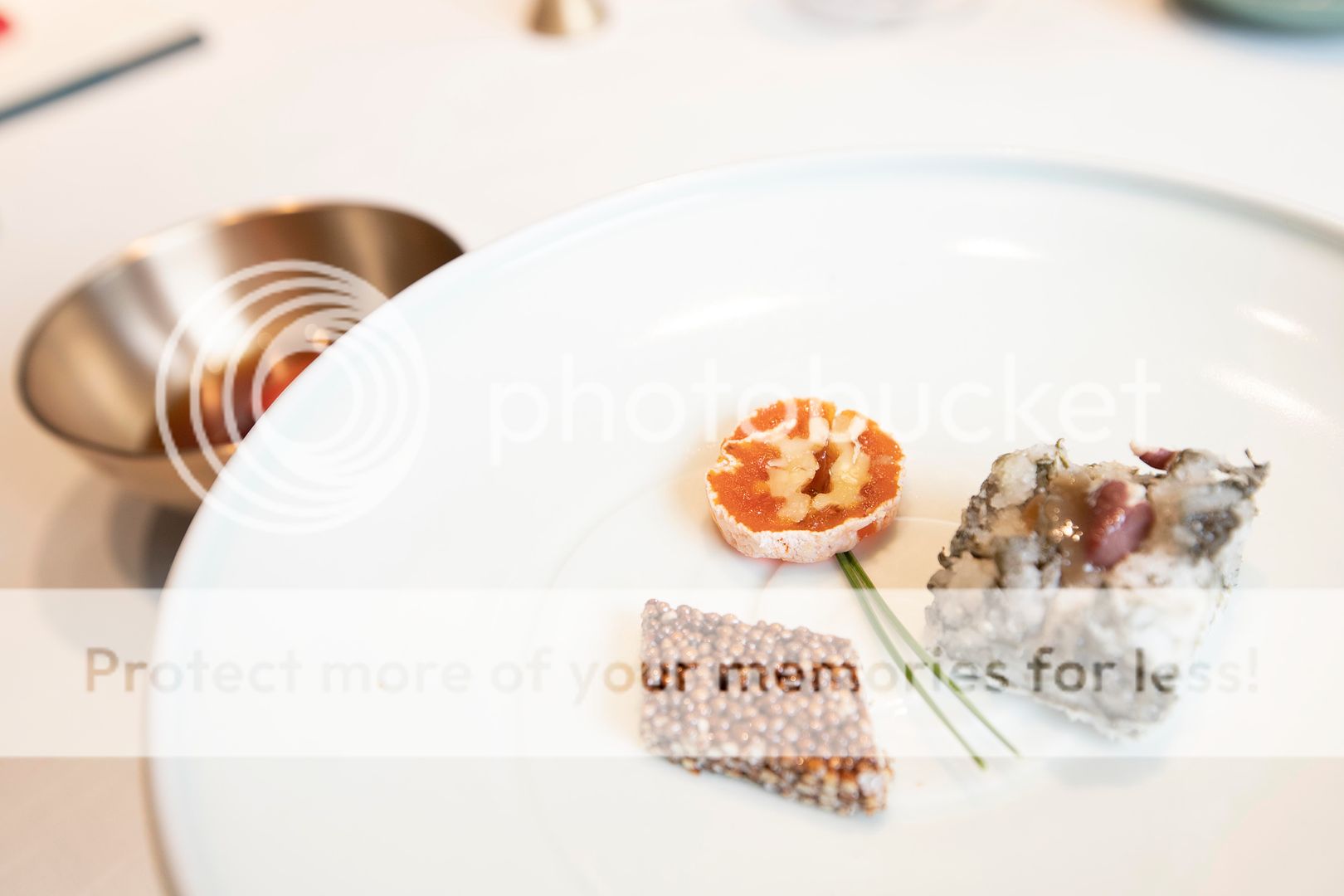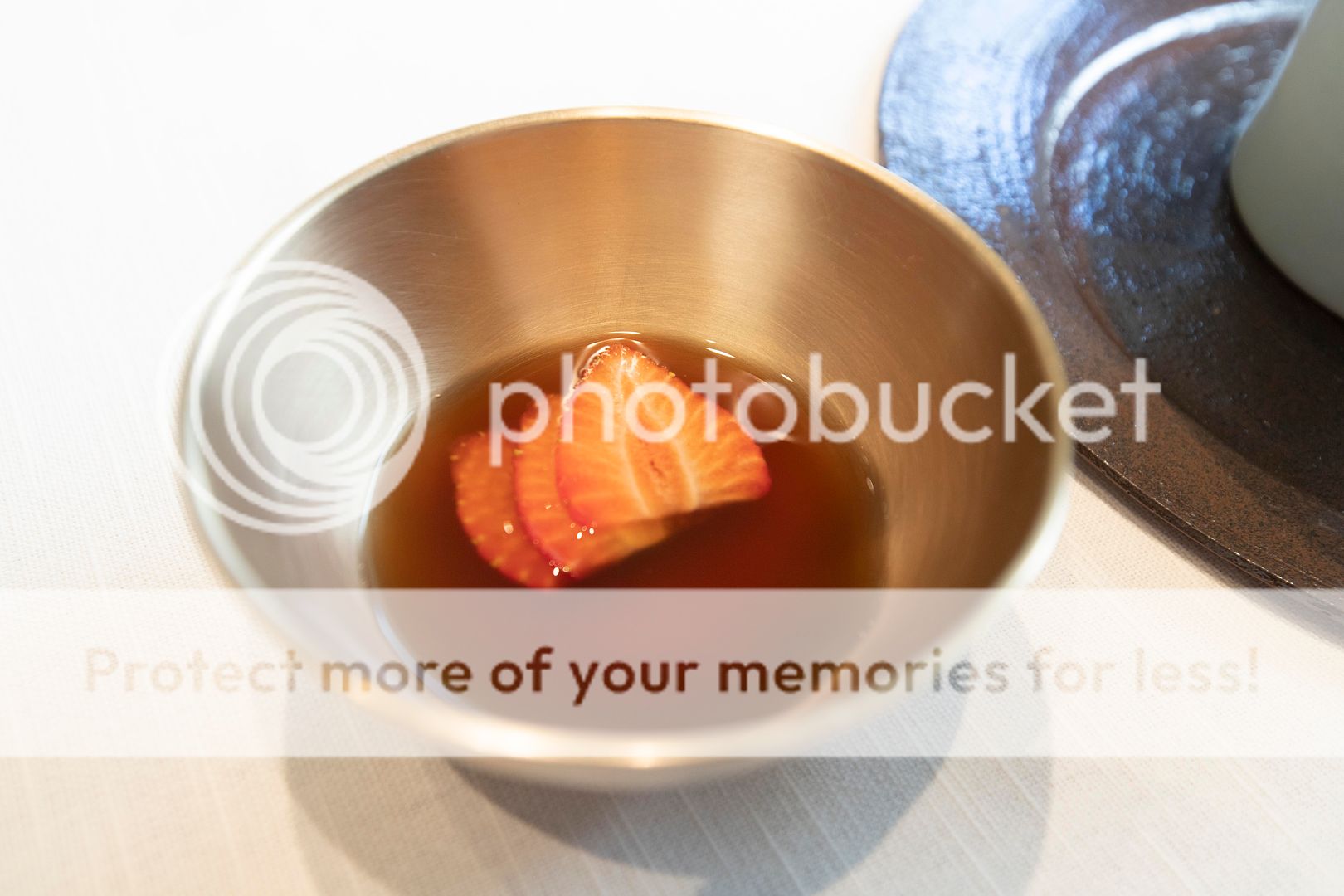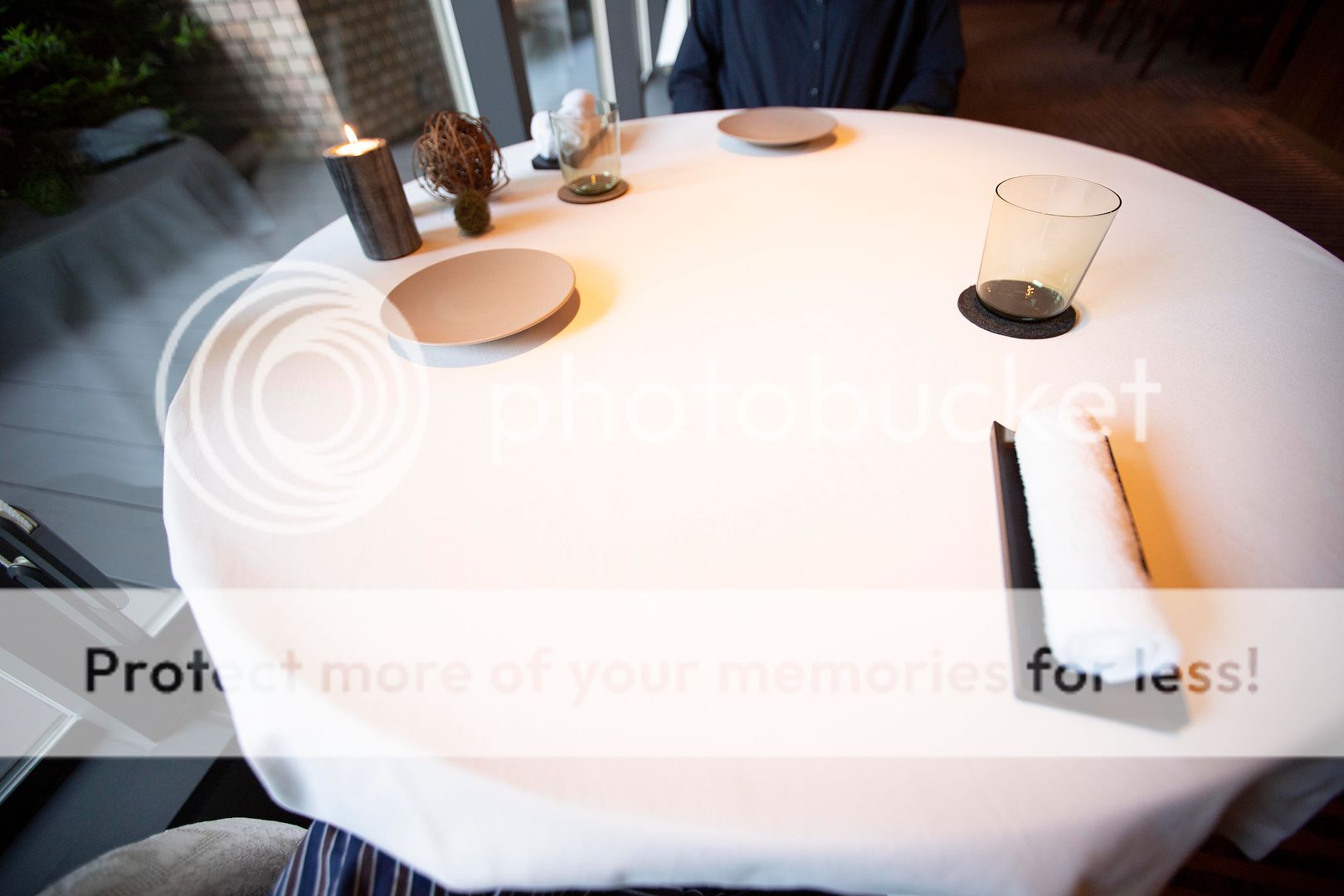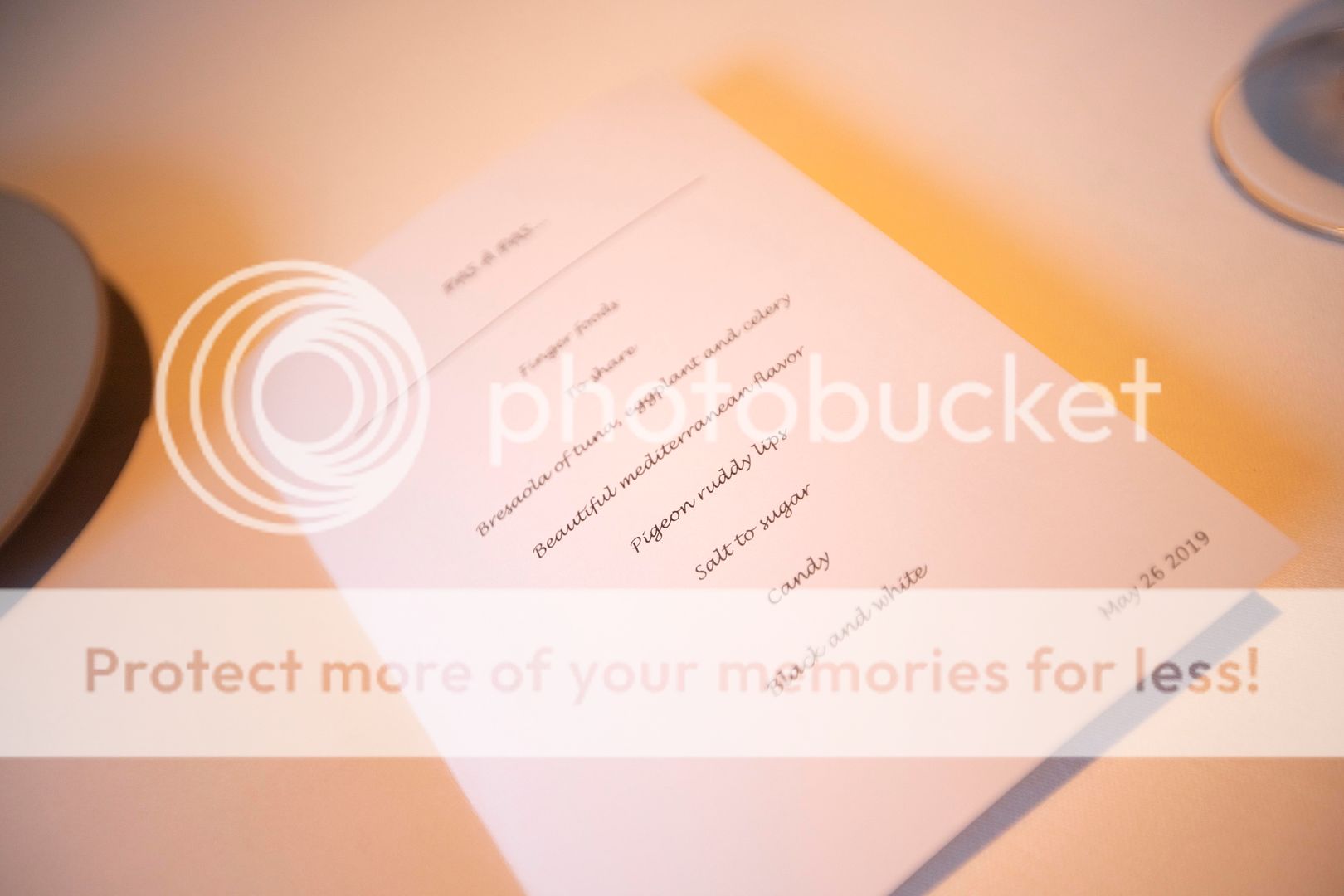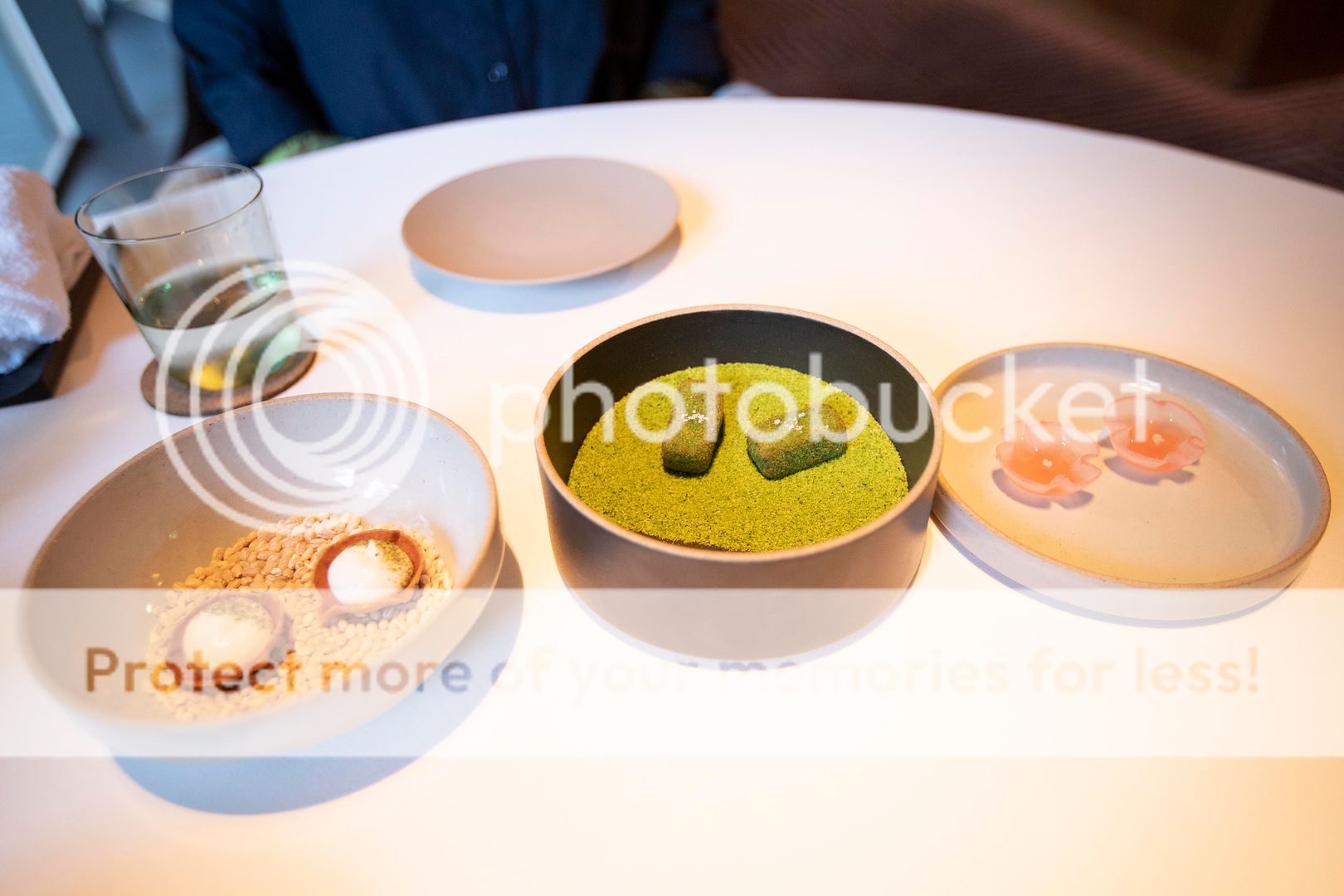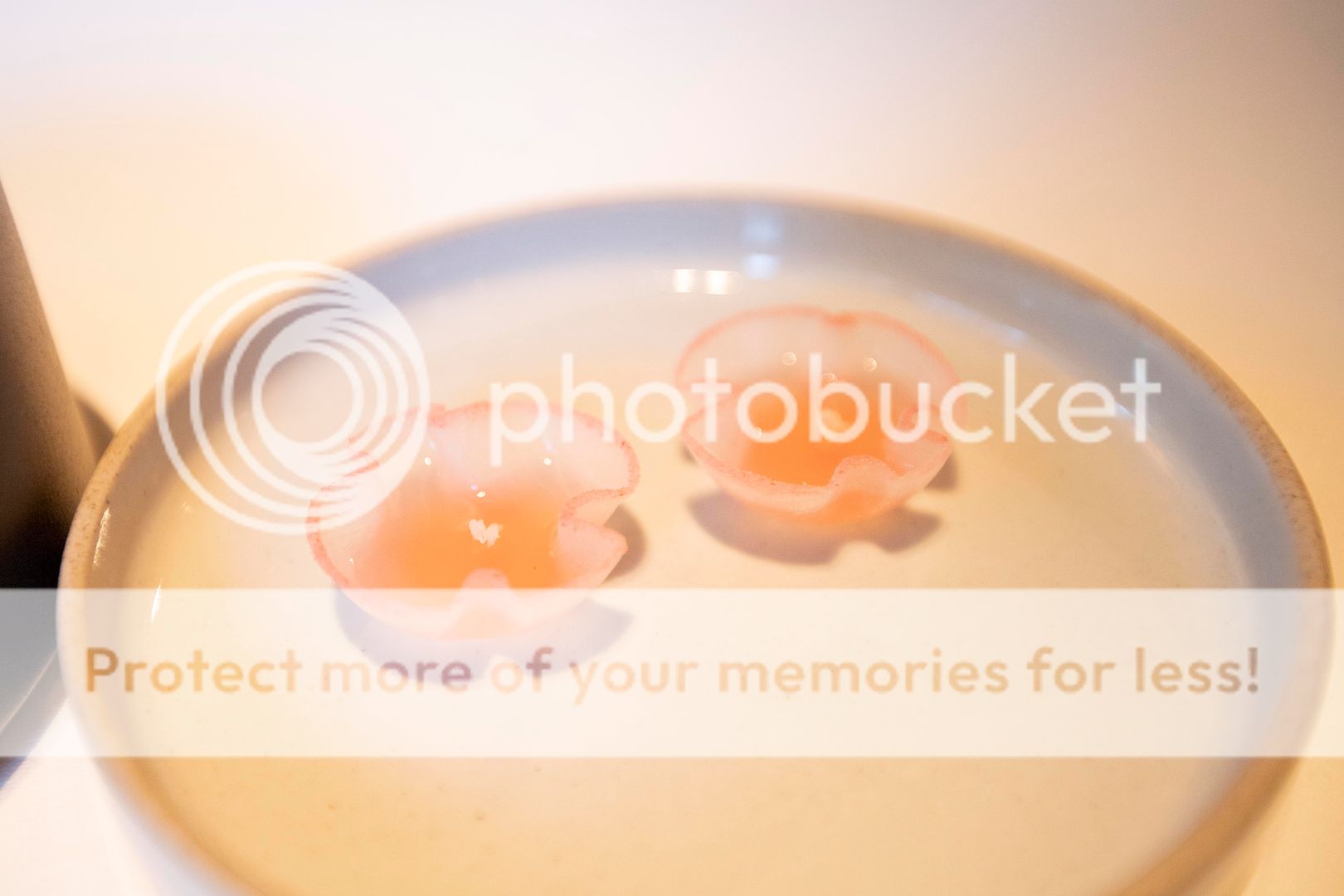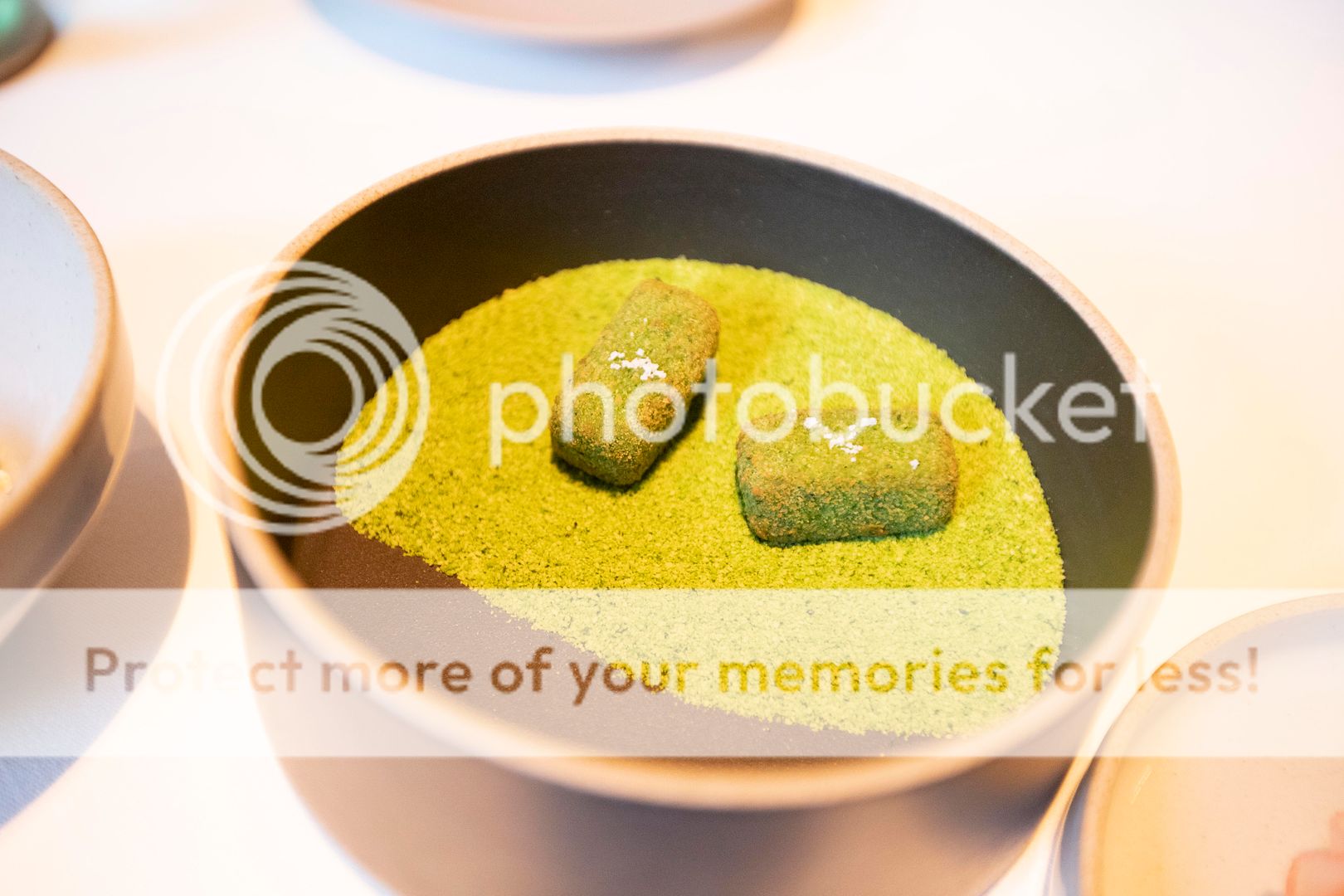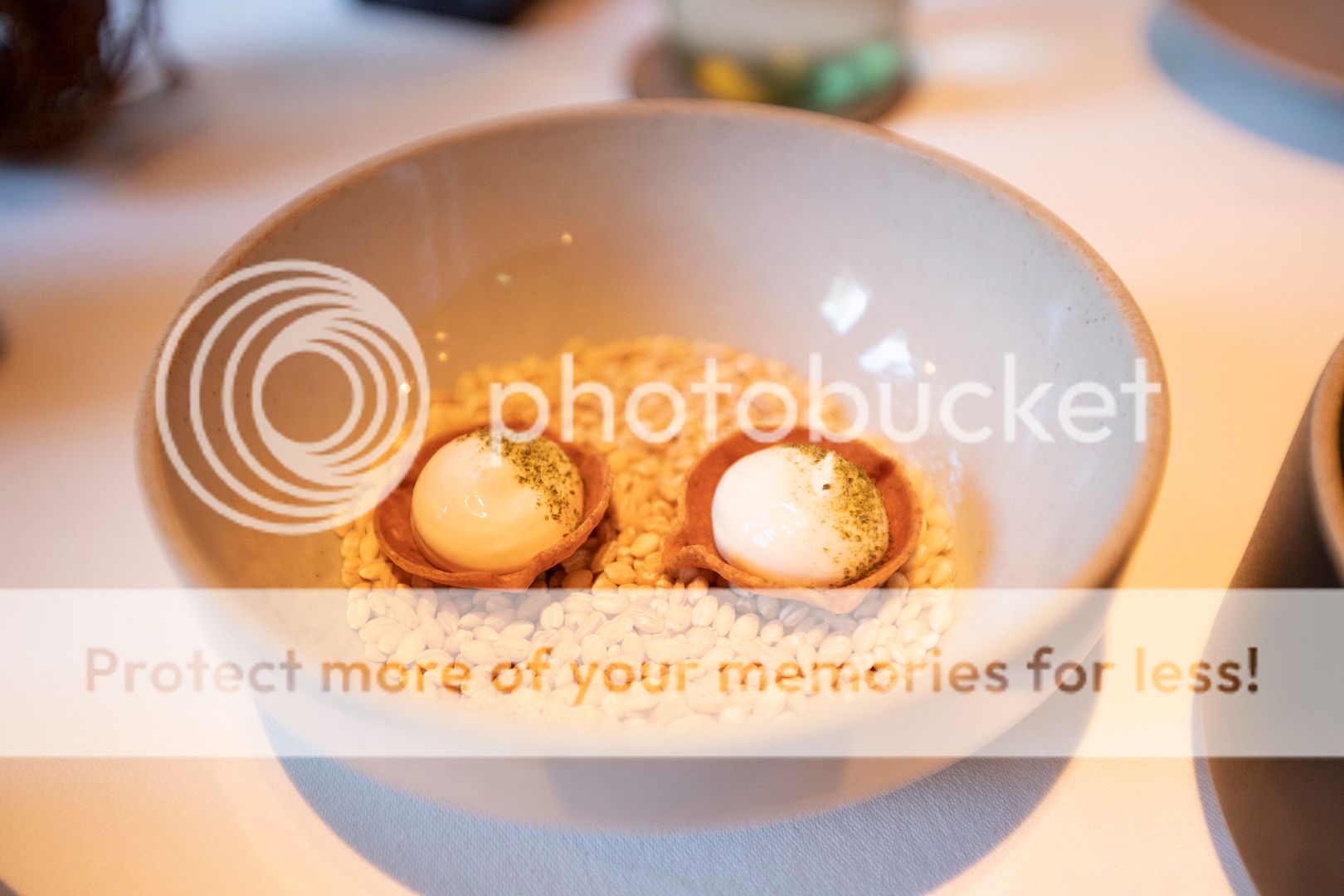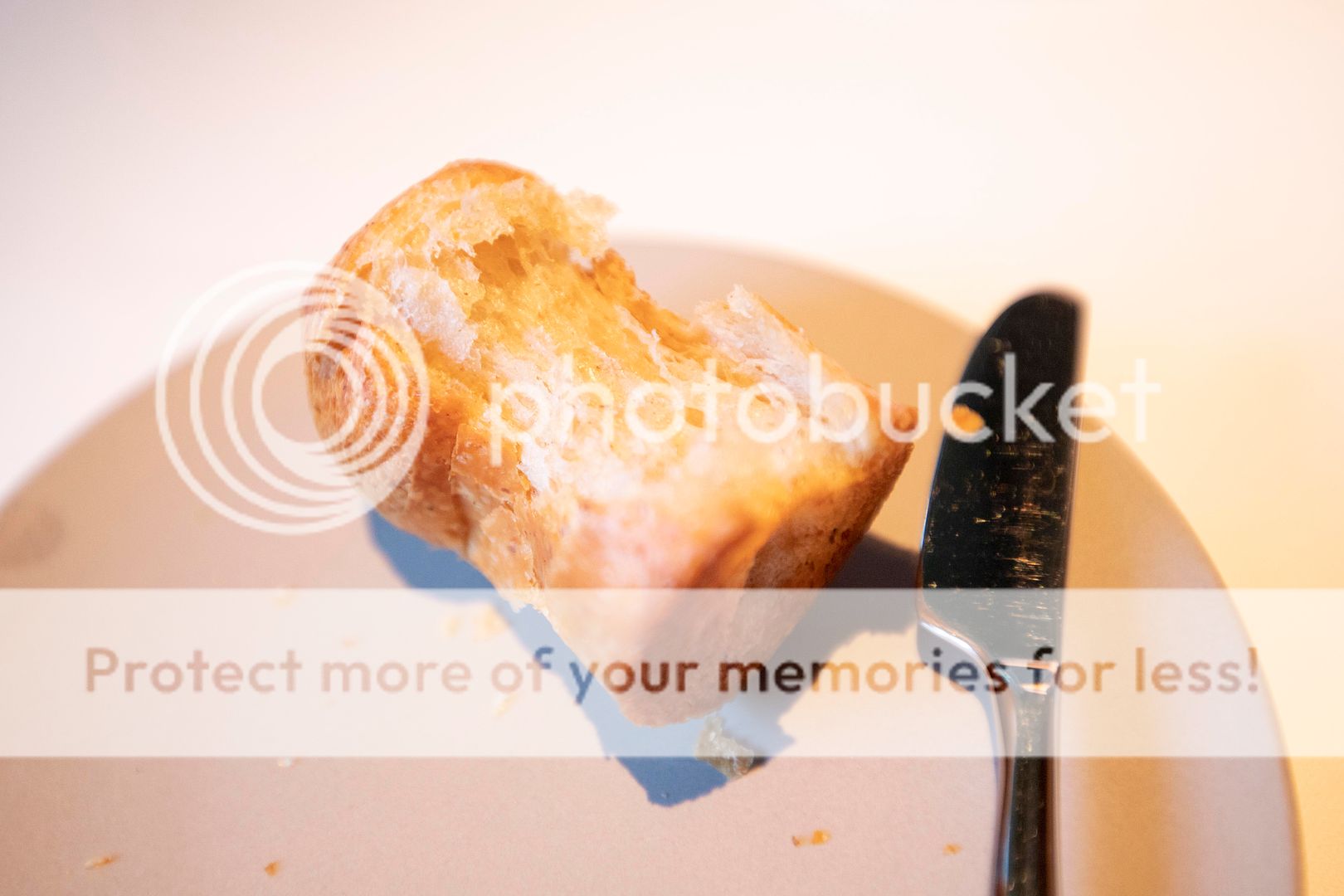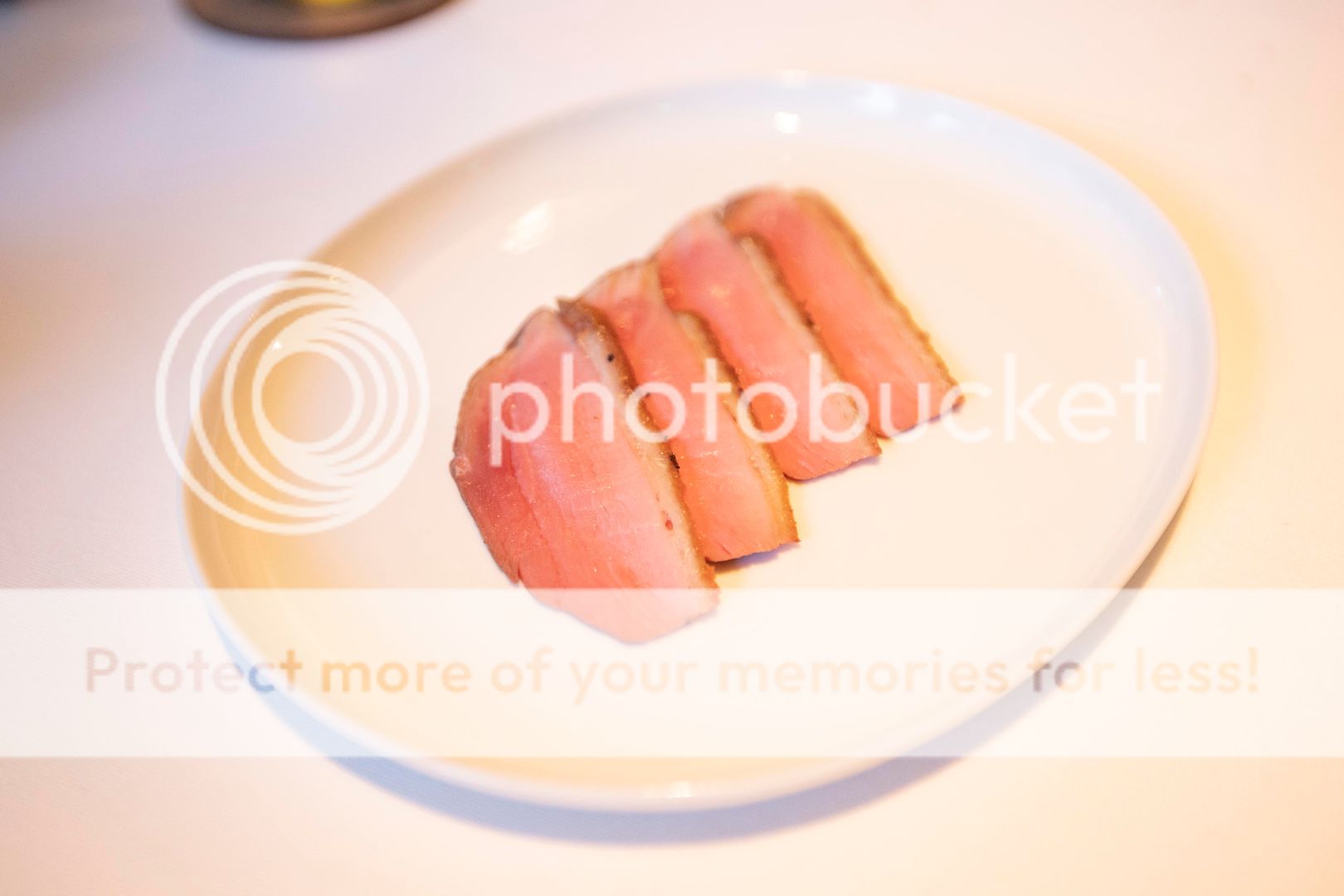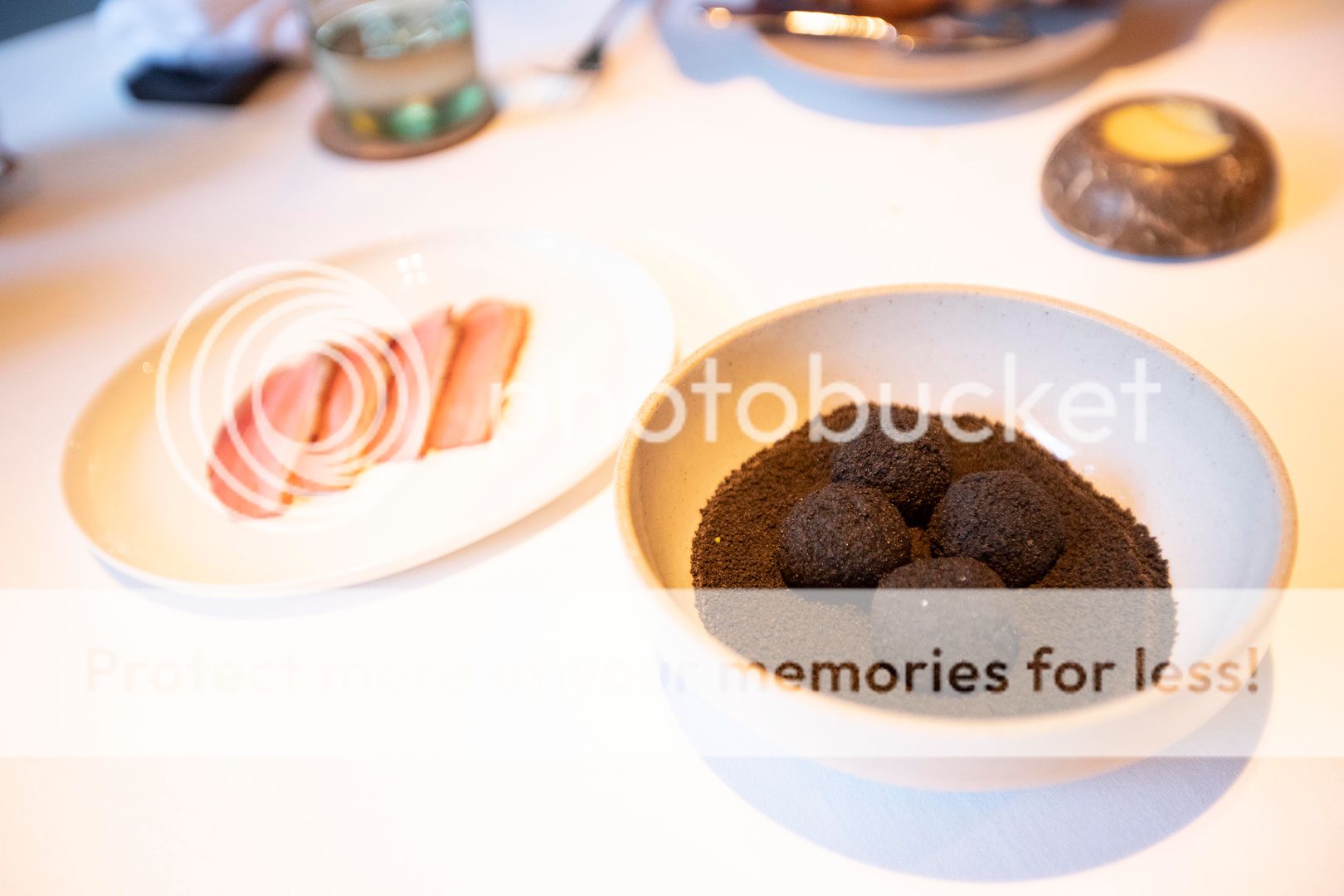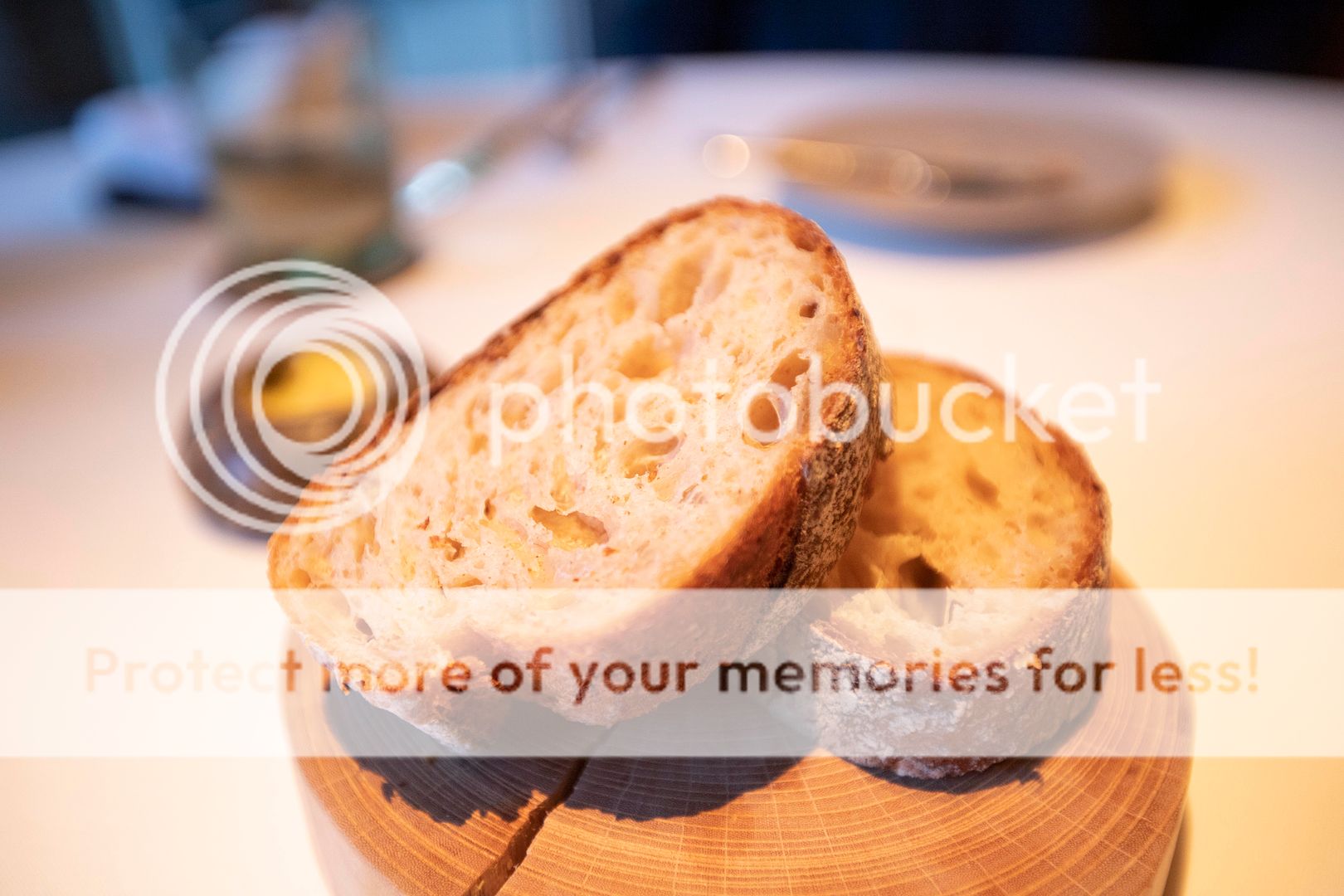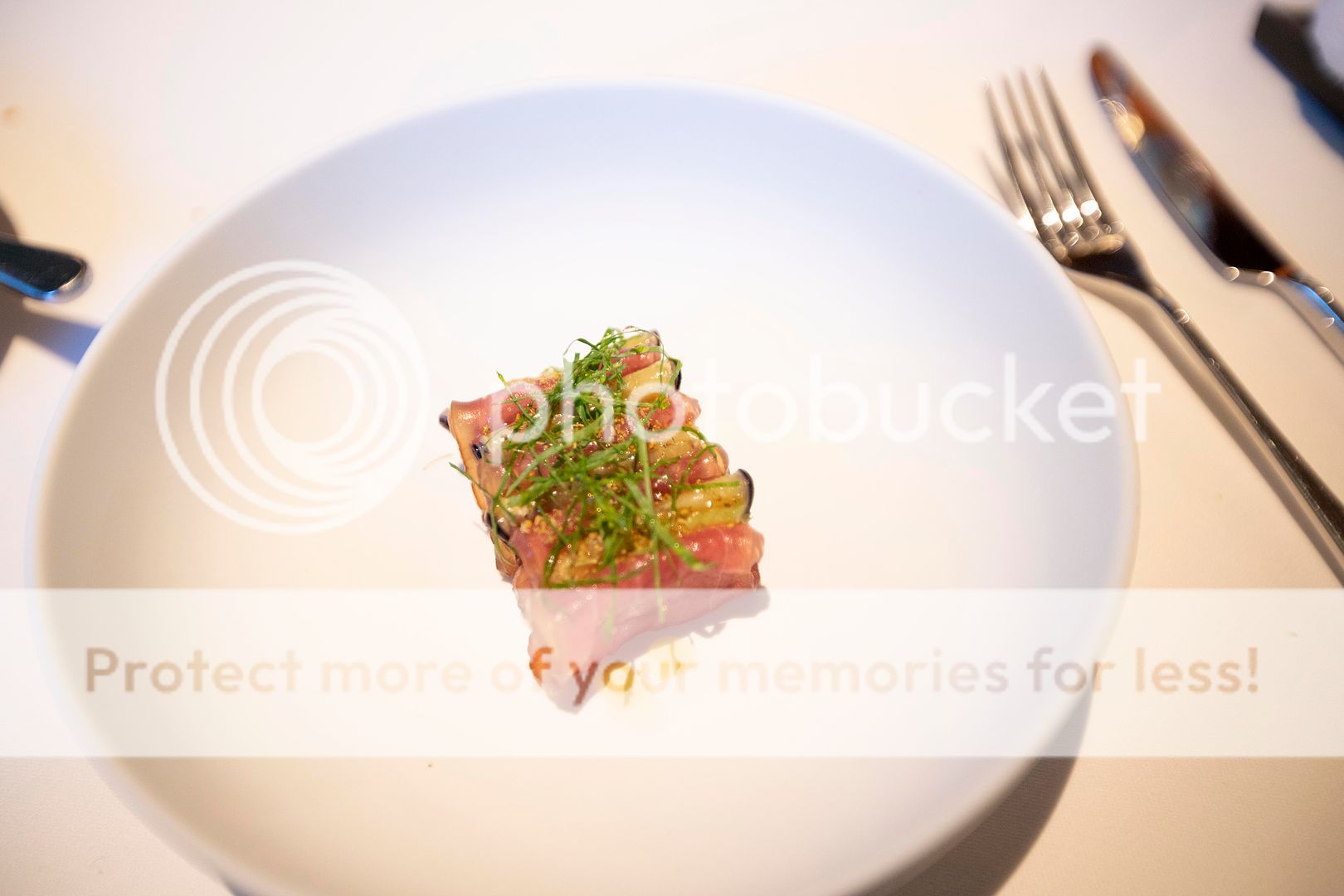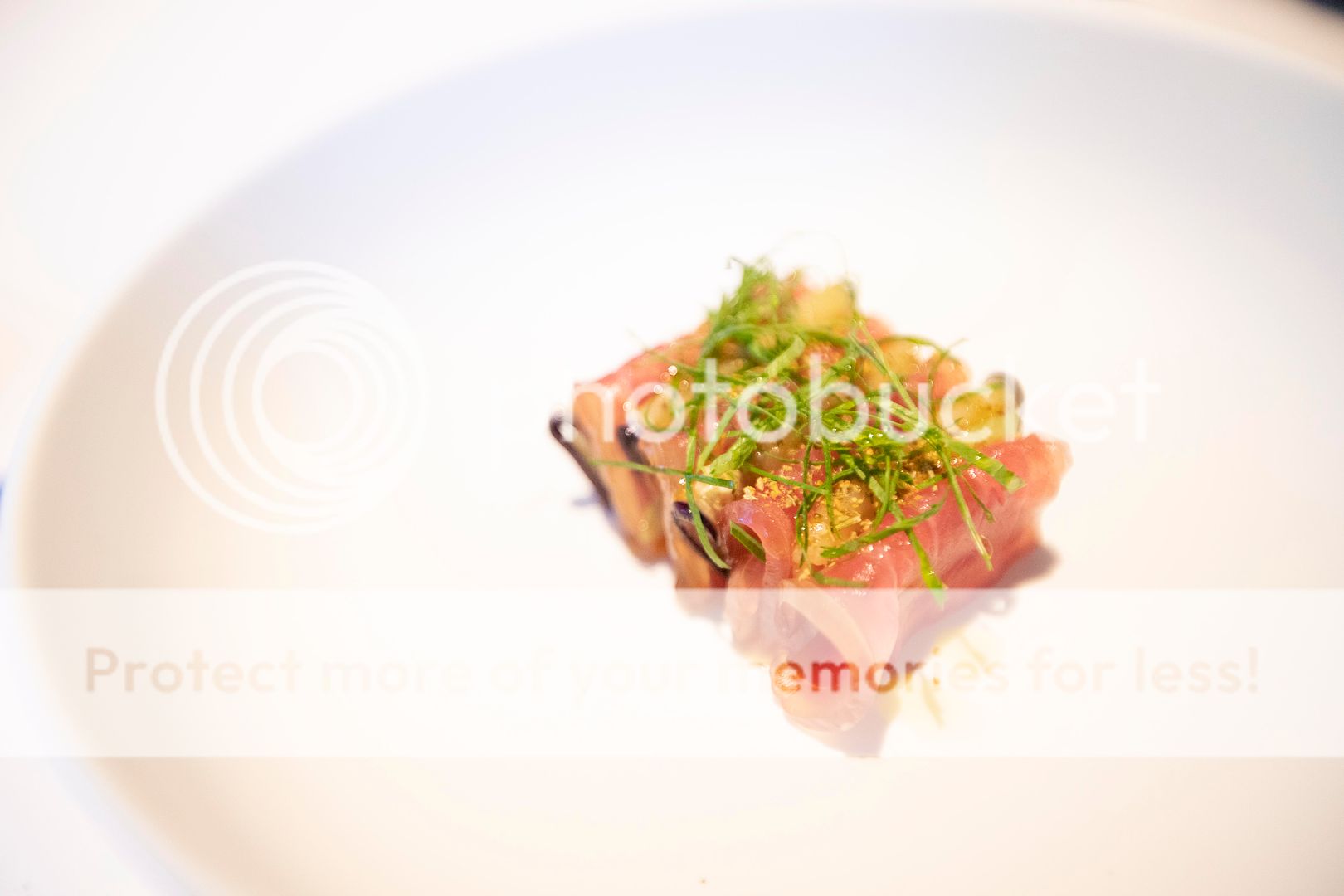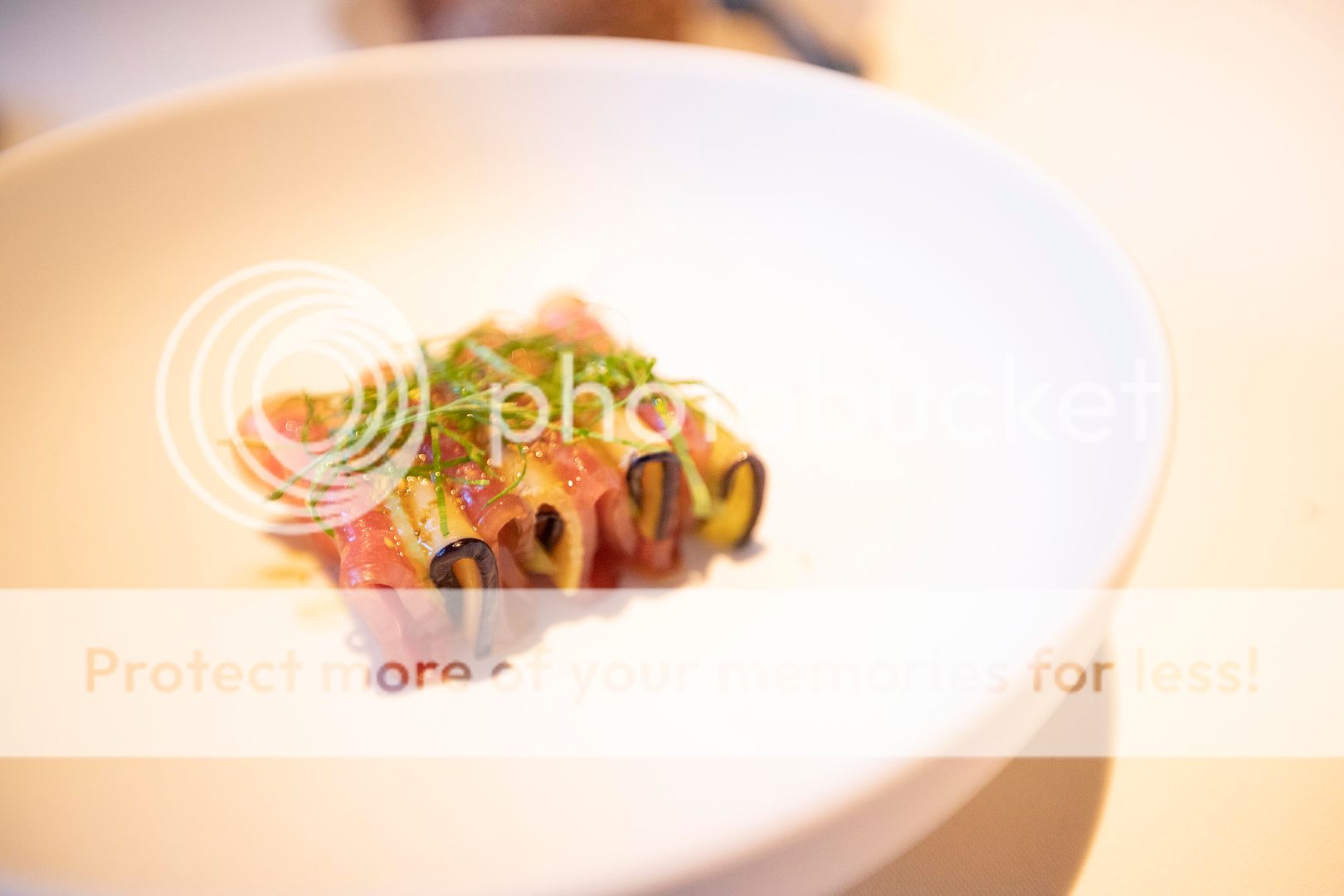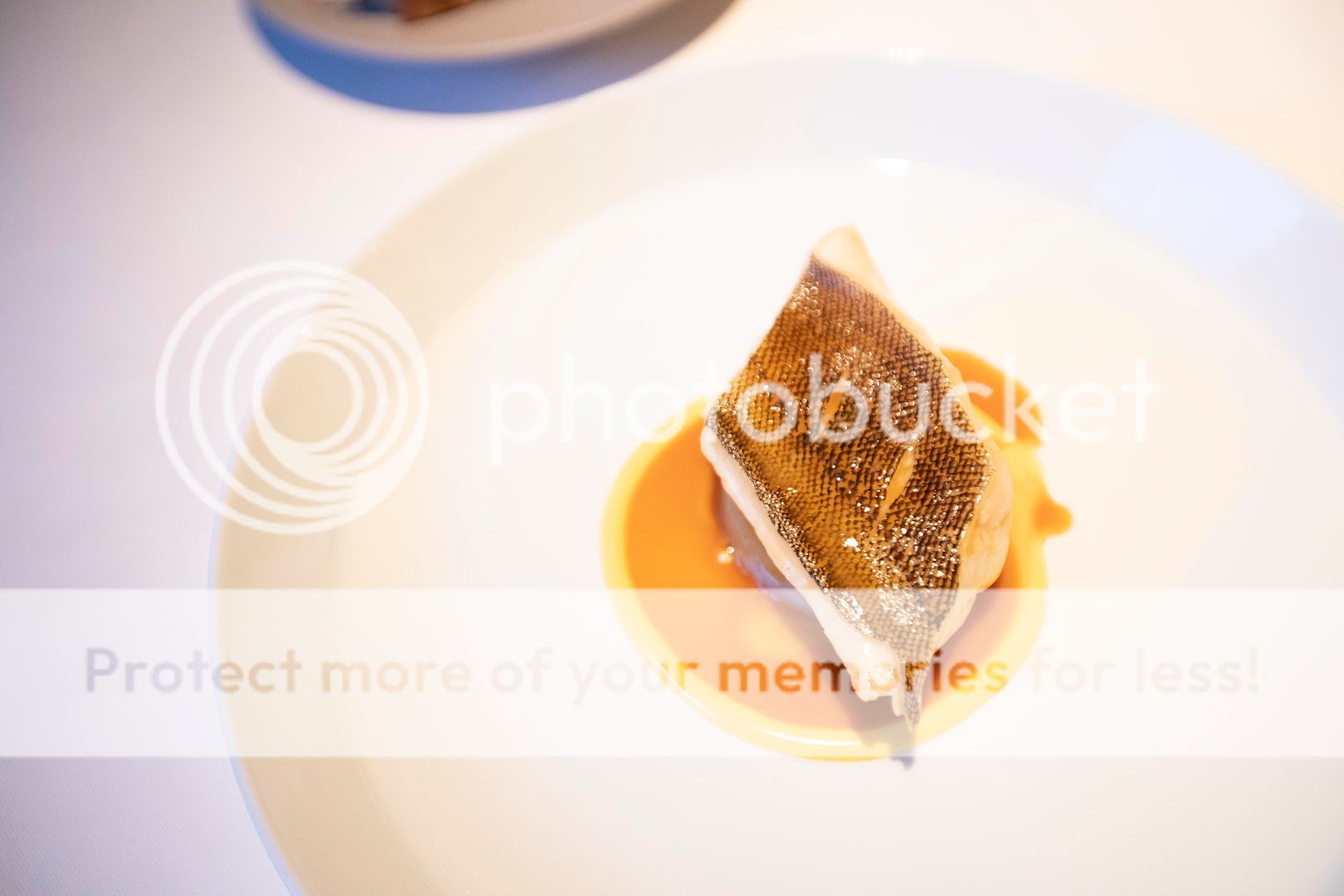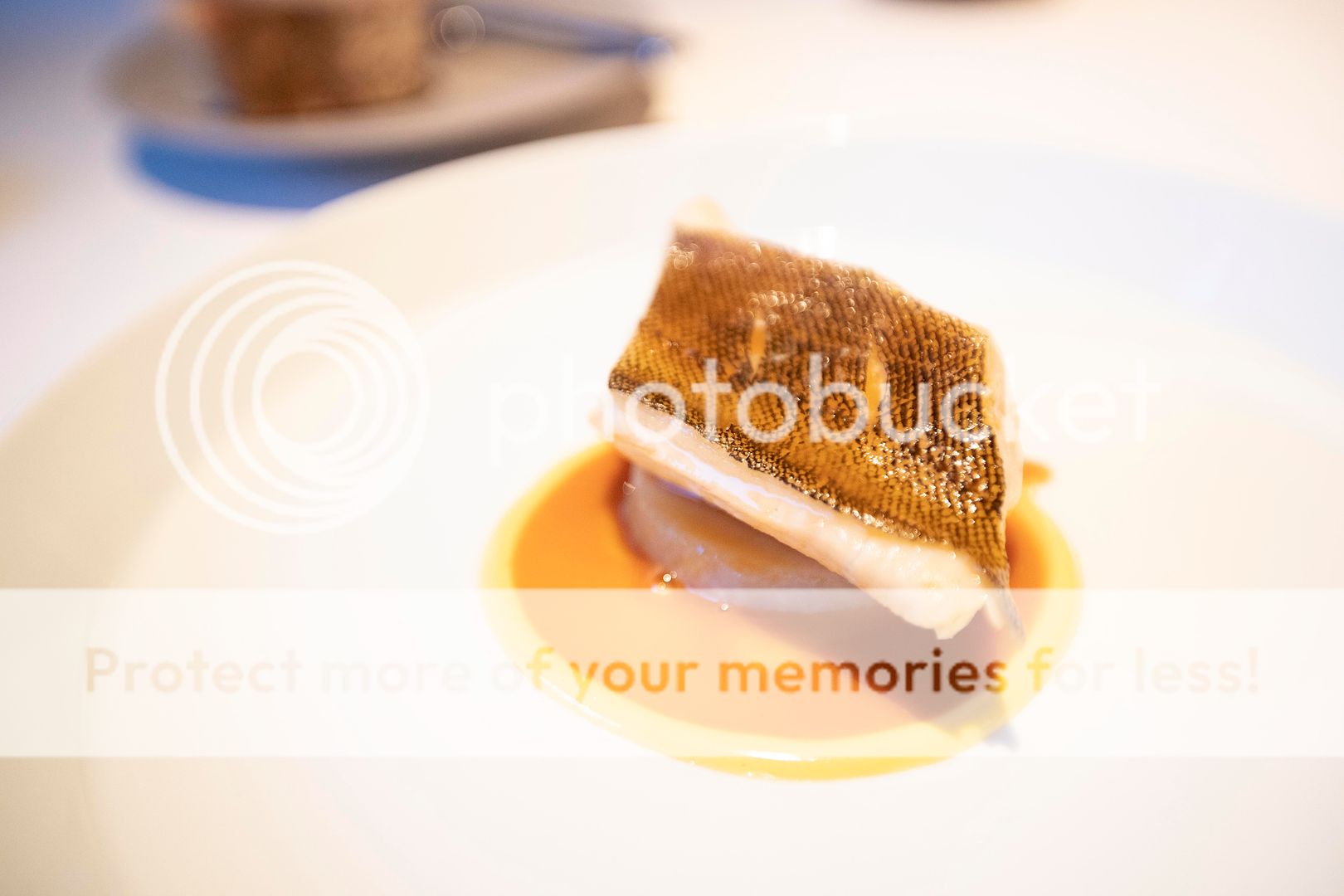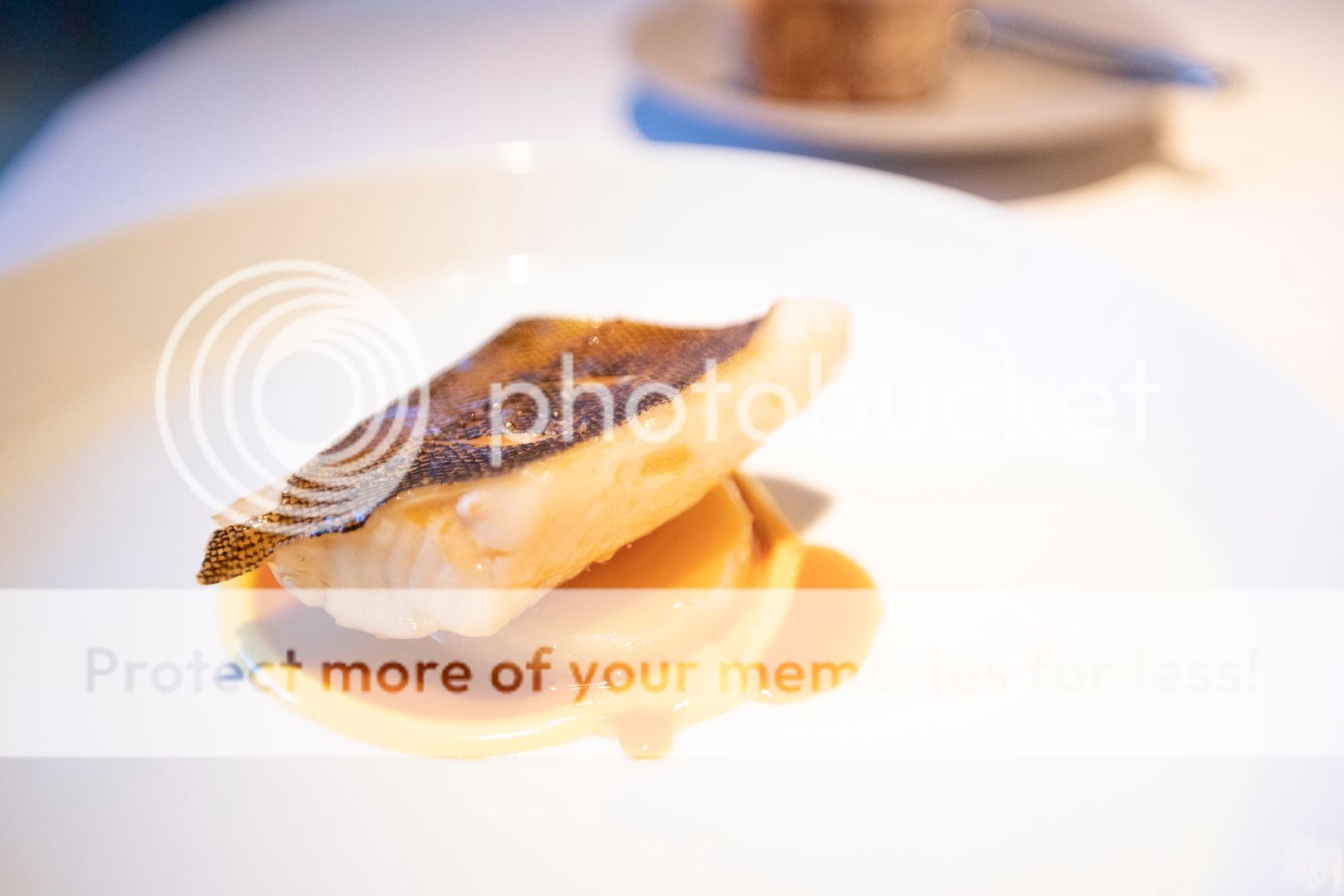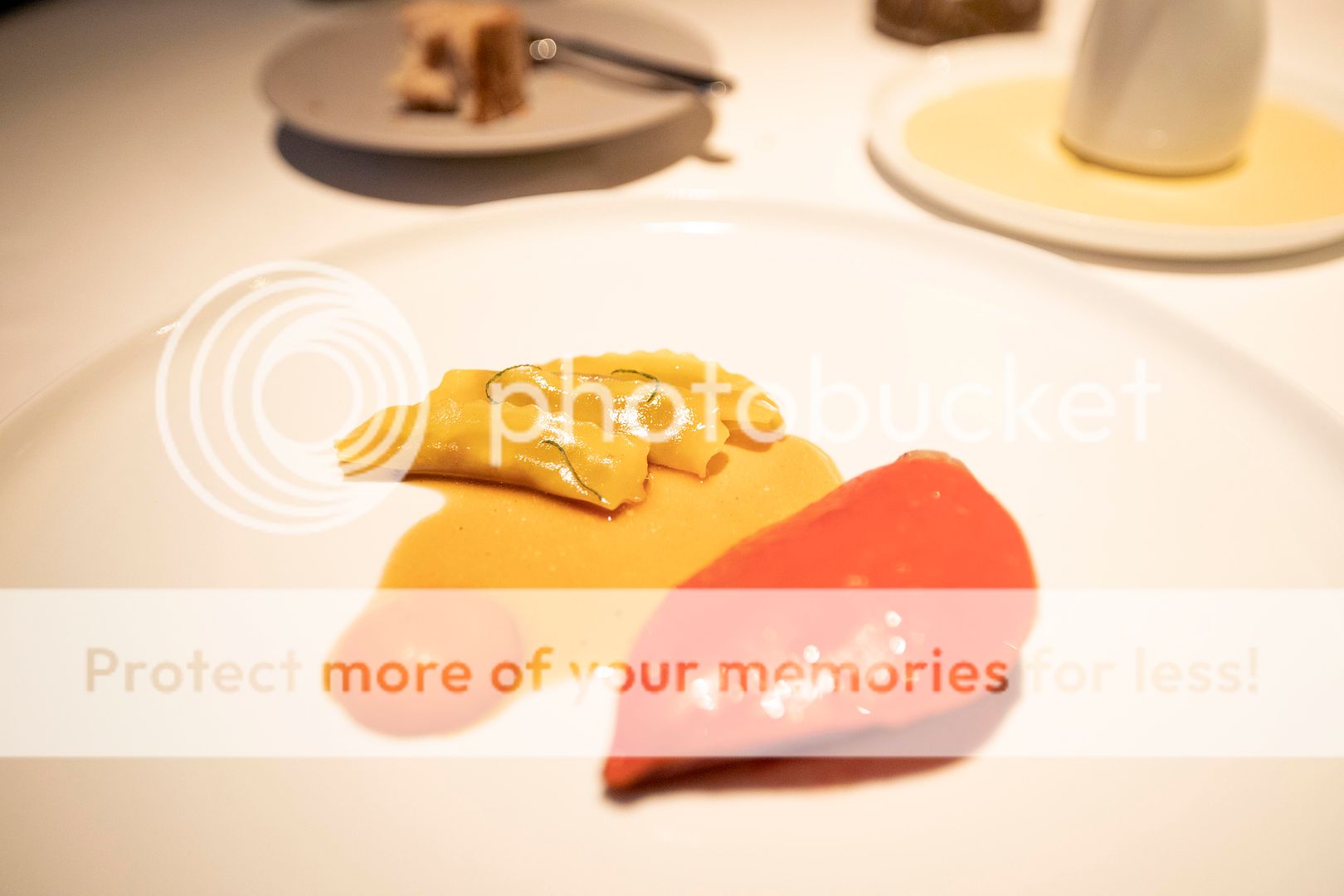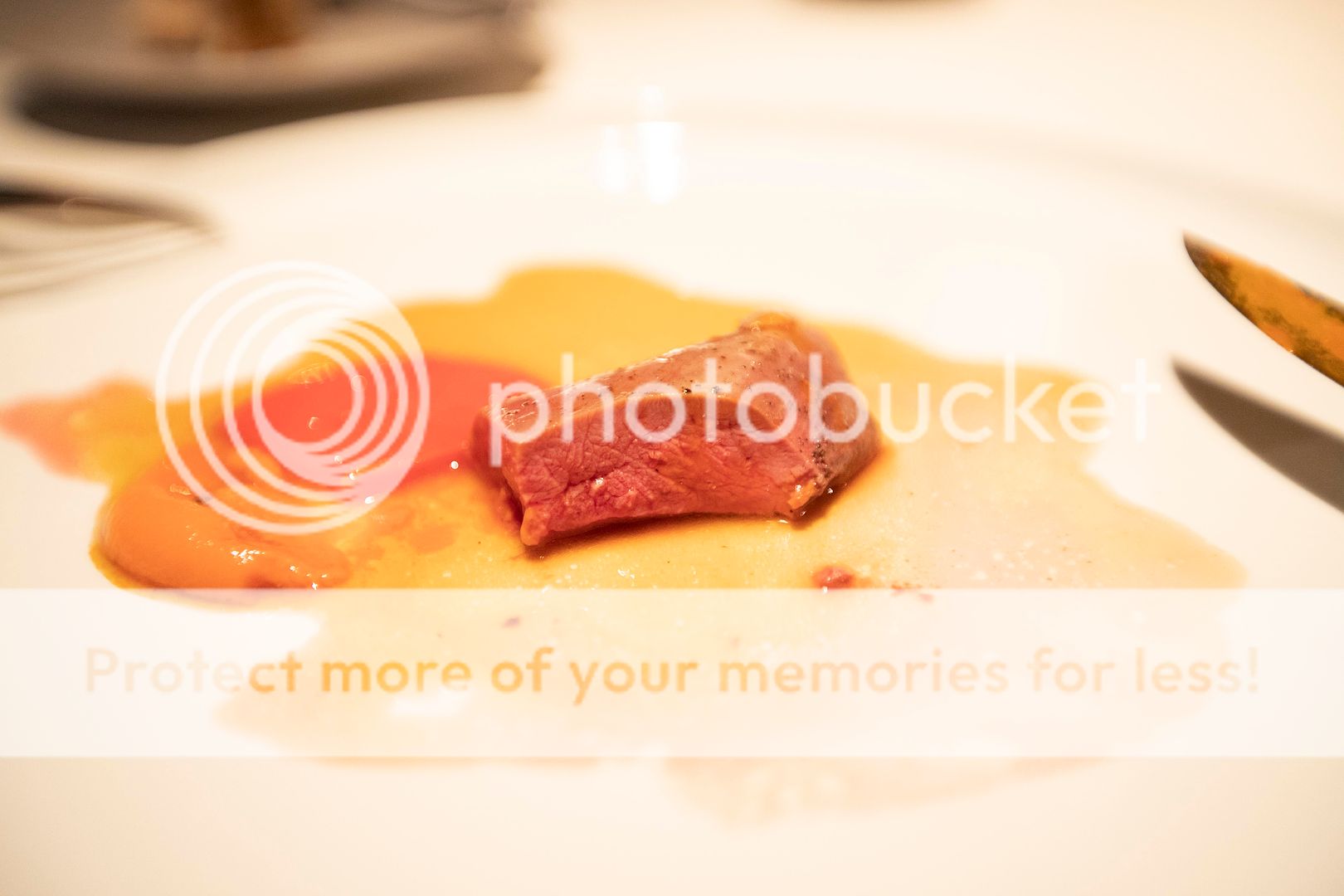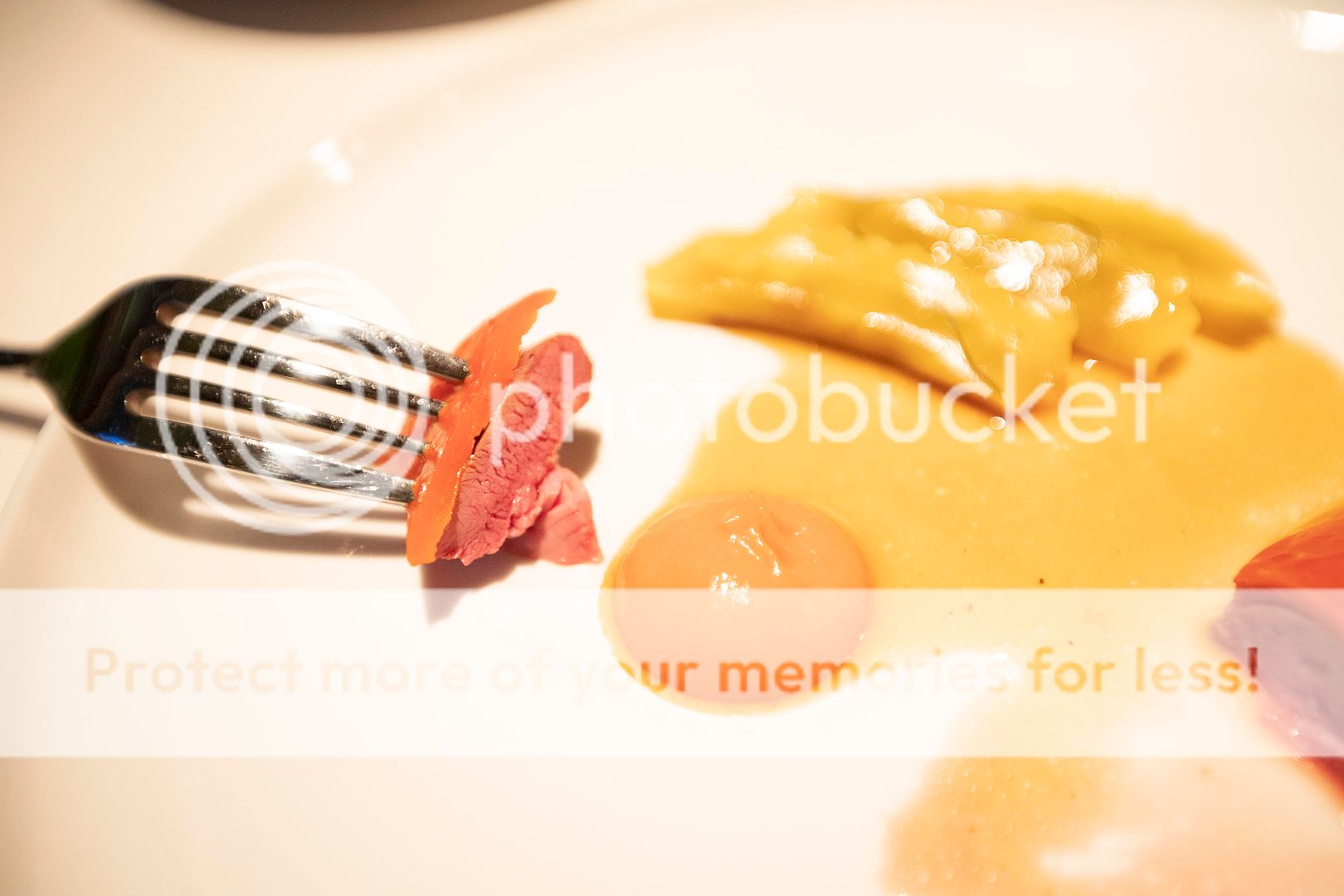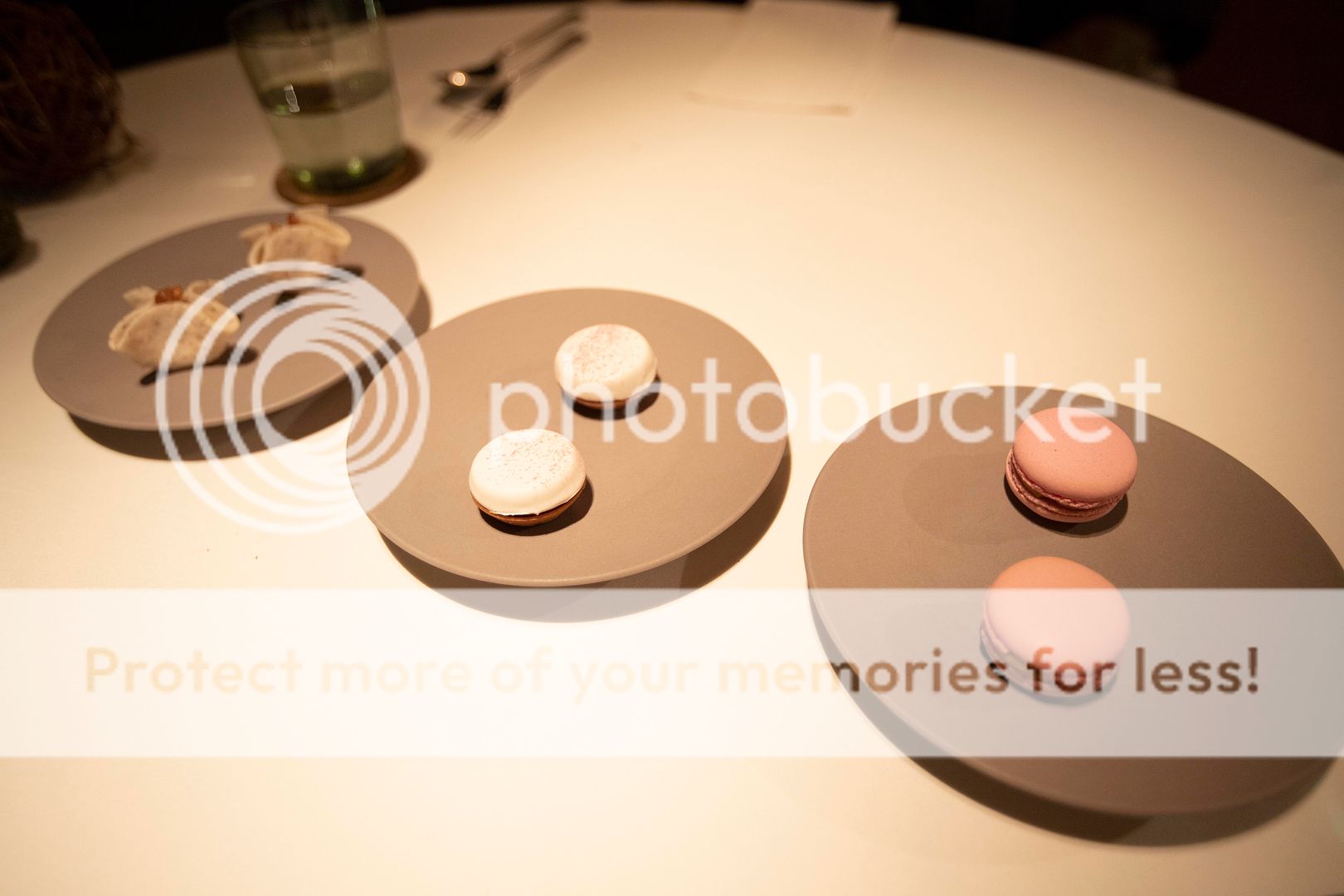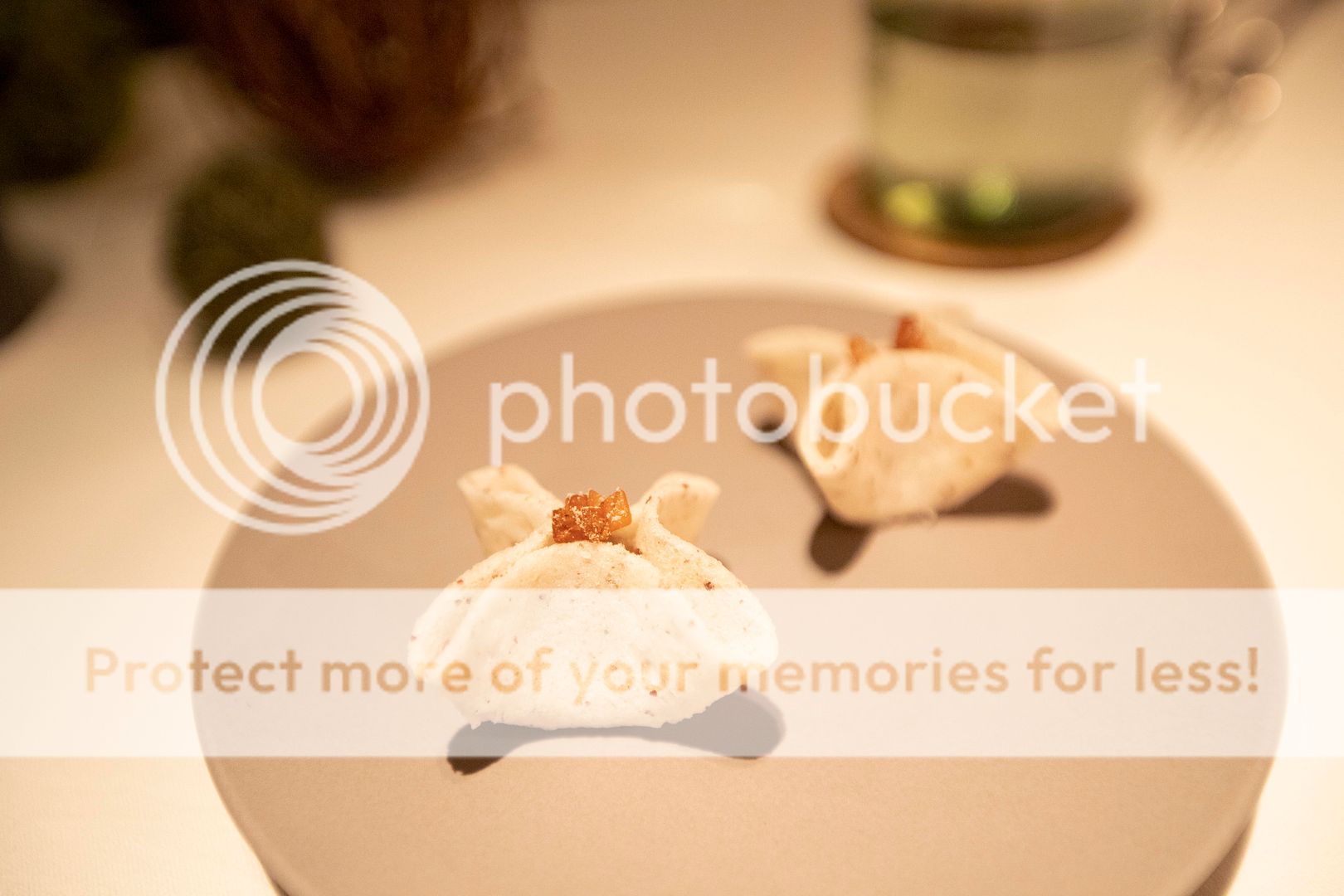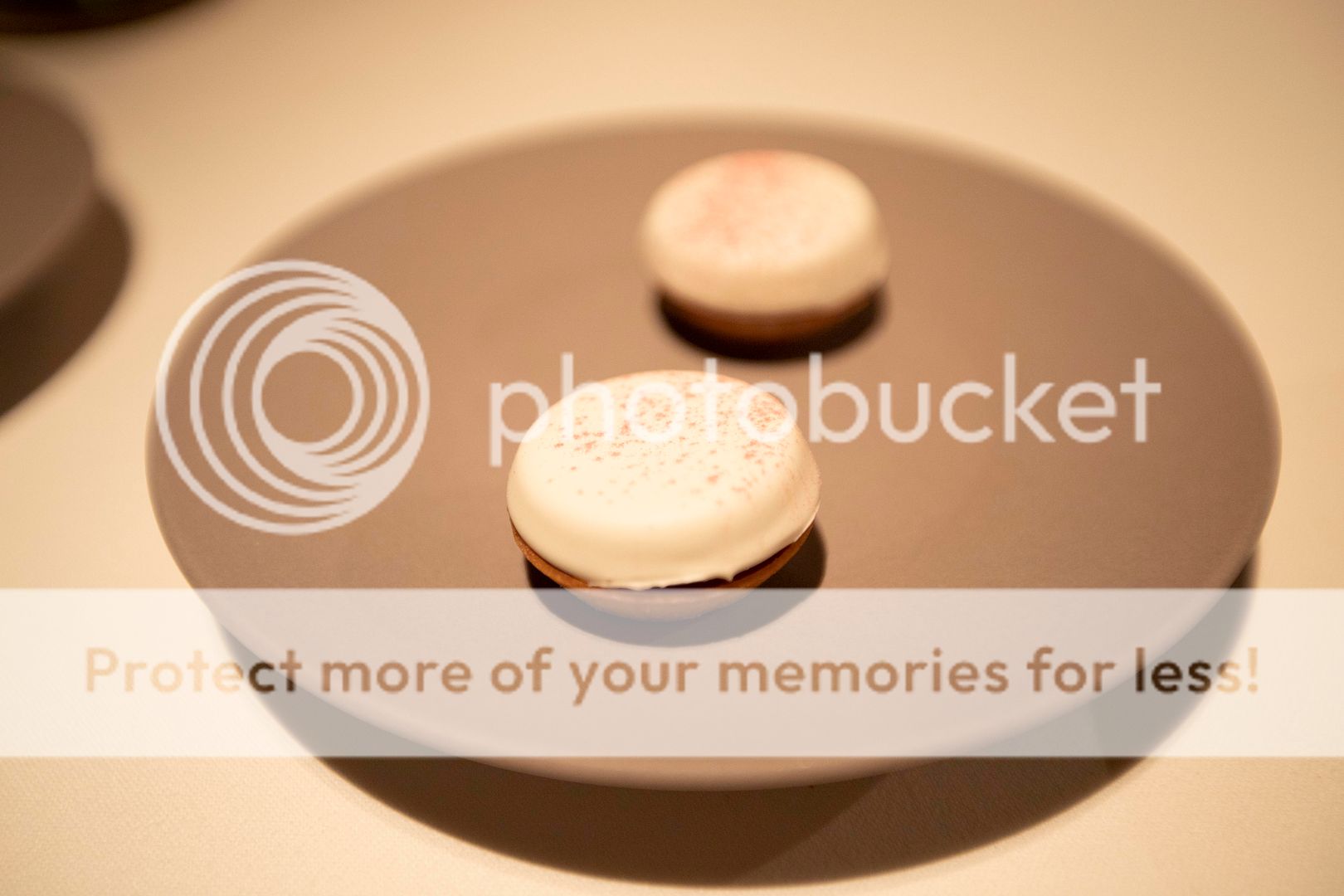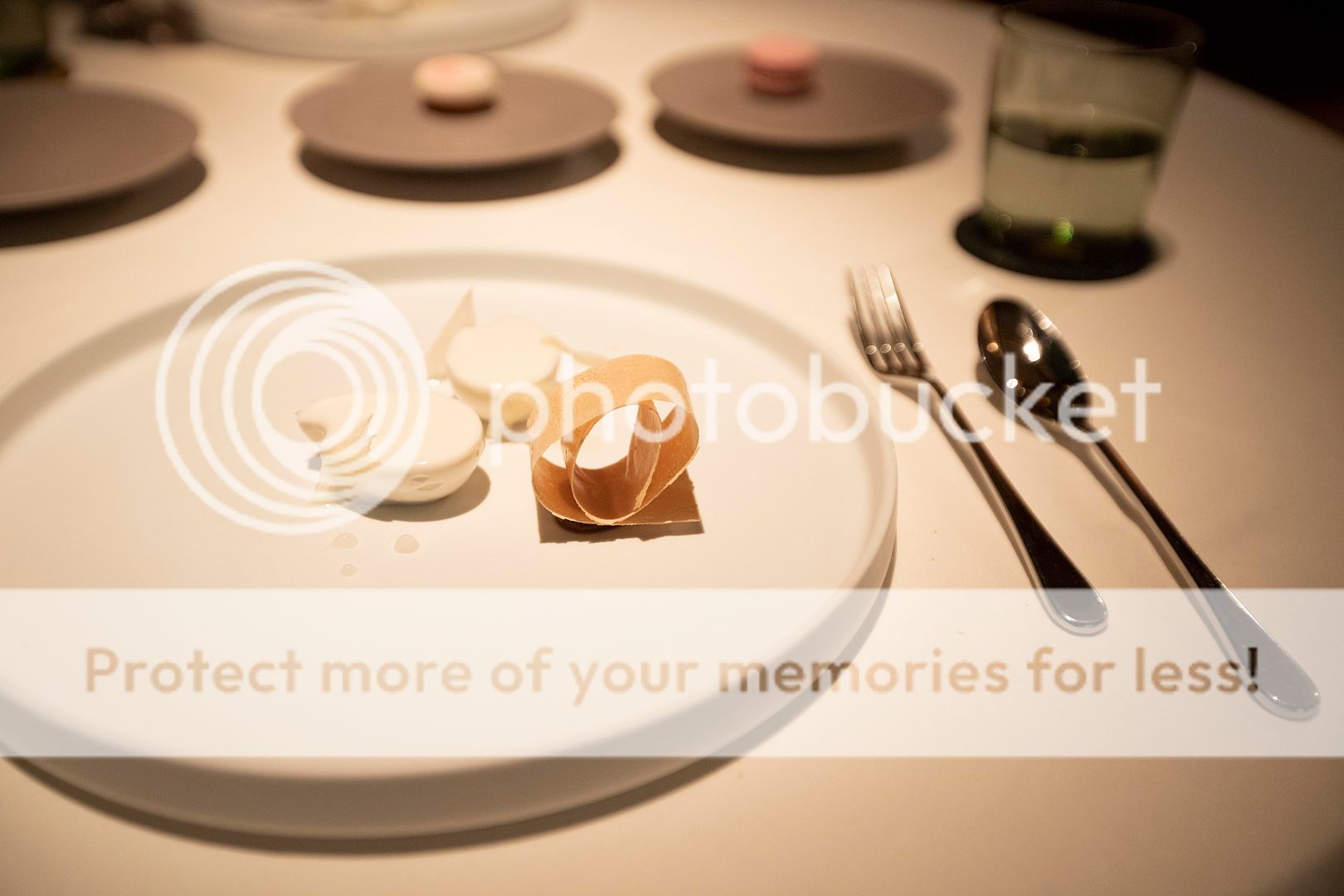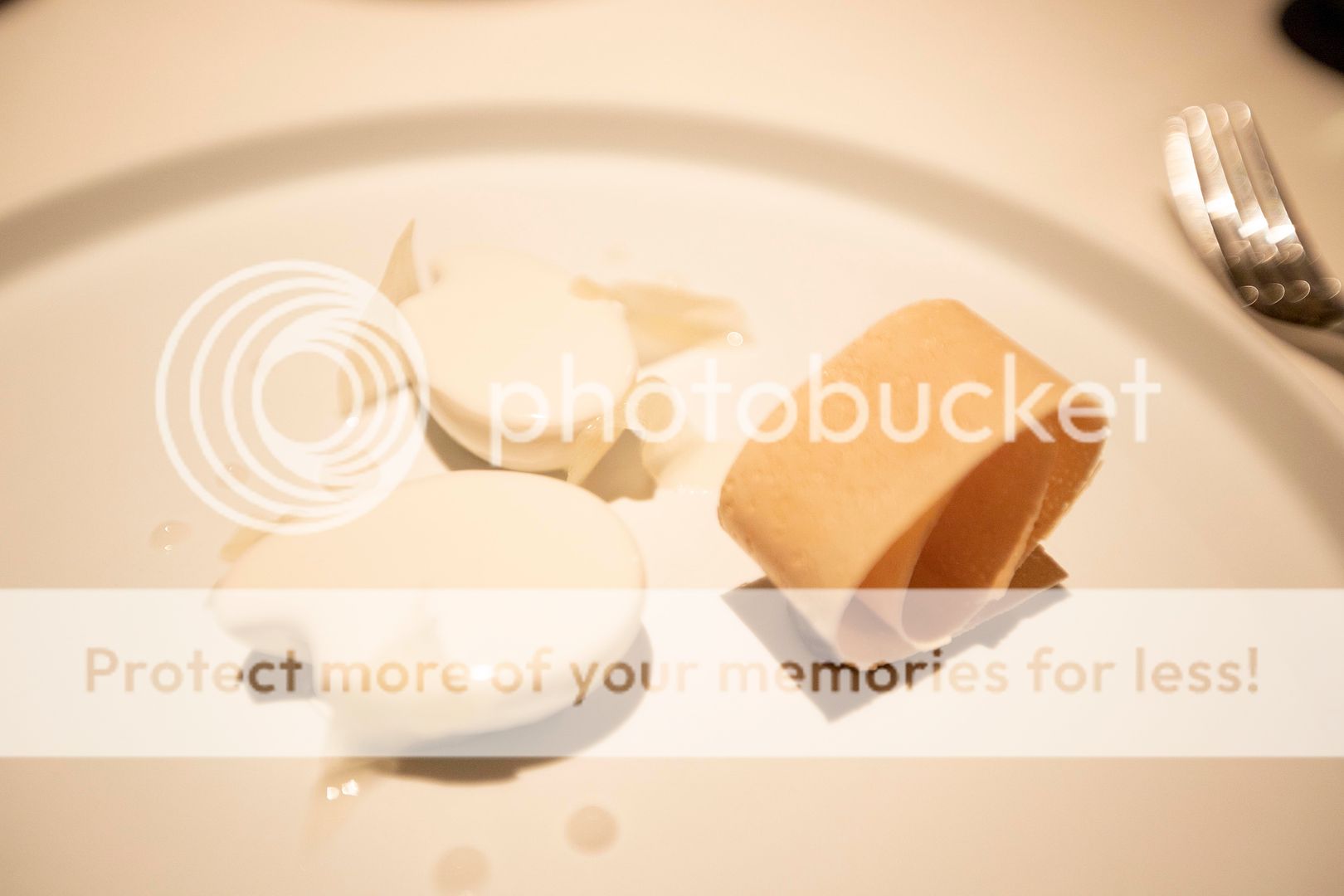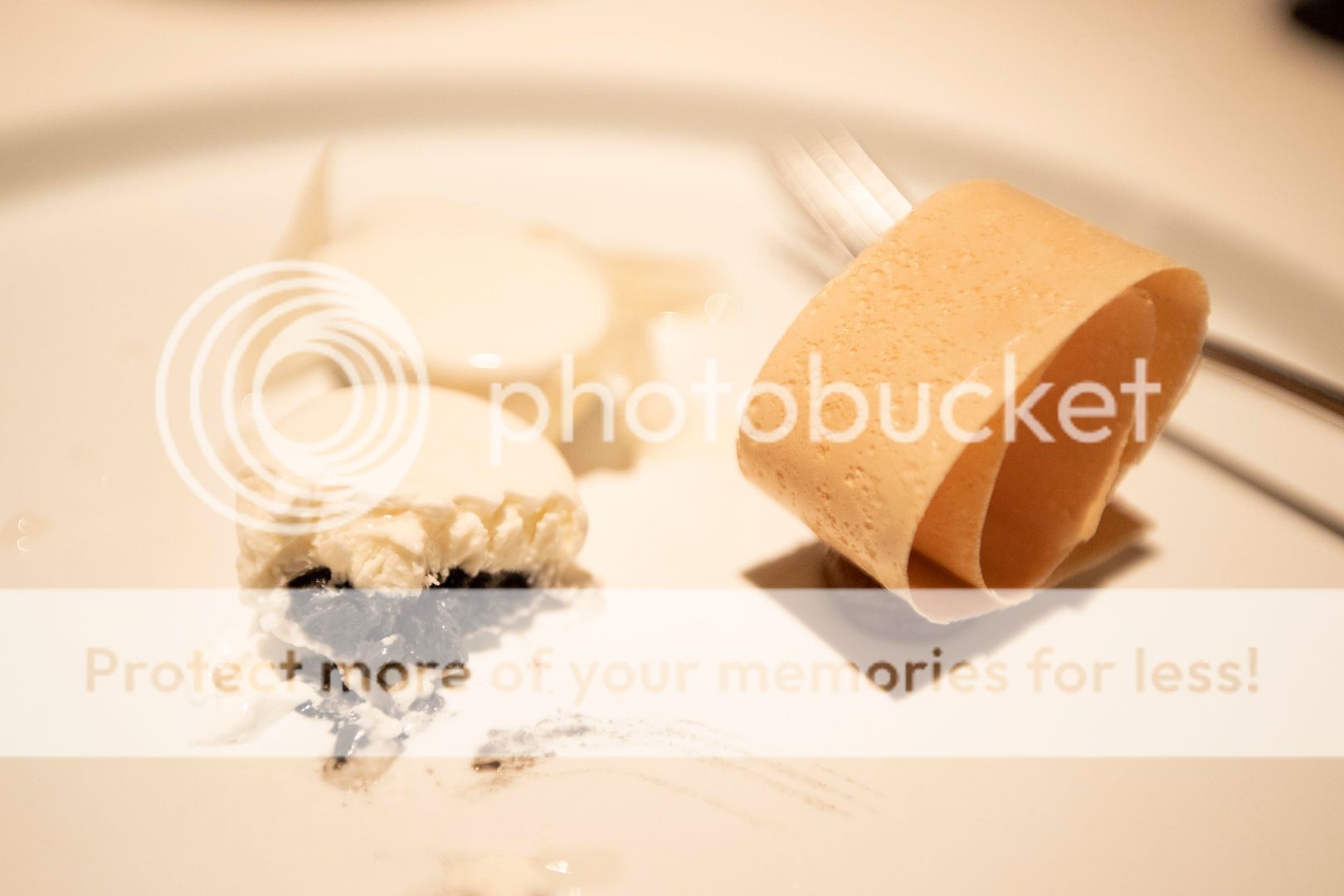It's actually my first time visiting Japan without trying any Japanese fine dining restaurant during the trip. On the night of our arrival, we had French food at Michel Troisgros, then the day after we had Korean lunch here at Yunke.
Well, I did try to book sushi or kaiseki ryori, but either most of the fine dining places in my mind don't open on a Sunday night, or they don't serve lunch during weekdays. Perhaps a little change can be a good thing. So for my second fine dining meal, Korean food it is, but not the regular fiery hot Korean food, this time we aimed for Korean royal court cuisine.
Traditionally prepared for the royalties during the Joseon dynasty. Yunke now only serve set menus. However, back then they actually started out with a la carte options.
Why the change? They found out that customers still prefer to order the dishes they are familiar with, the "common" Korean food such as barbecue pork and spicy beef soup. So in order to get diners to try something new, Yunke decided to go with all set courses. Opening a door of surprises and new experiences by taking the choices out.
The restaurant is located across the street from Courtyard by Marriott Tokyo Ginza Hotel, inside a slim building called Tiara Grace.
All private dining rooms, with a cute little bell on the table, in case you need to call in the waiter/waitress.
We were assigned with oppa waiter, good English too. Throughout the meal, he explained the artworks at Yunke, including the painting on the wall and our tableware. He also brought us into deeper understanding of the dishes presented. It really added quite a few points for Yunke, well, on top of his pleasing appearance and heart-warming service.
Set menu already selected when I made the reservation.
Drink menu -
Yunke has been on the media numerous times. Also the owner Chef Mi-Wol Yoon, is also a Korean traditional food maestro designated by the Korean government. Besides dining at Yunke, cooking classes are also held sometimes, teaching ways of making Korean style pickles and other dishes with health benefits.
But the most important thing first, a glass of Japanese sake to start my meal -
Isojiman, A soul be put in one drop, daiginjo, served in wine glass. What a name.
My mom requested for sparkling water. She said it makes her stomach feel better. Not sure if sparkling water really works that way, but as long as she's happy.
Black rice porridge -
"Black rice porridge with hot wind baked hulled rice."
Oppa waiter explained that serving warm porridge in the beginning is Korean's gentle way to start the meal. The porridge basically signal the stomach that "hey! more food is coming up!"
Kuruma shrimp with pear and pine nut sauce -
"Ground pine nut. Korean pear and mustard mixed with dense chicken stock. Arrange with Japanese kuruma shrimp. Bamboo shoot, pear, and lightly pickled cucumber."
The sauce used here was fermented three days, then seasoned with western mustard to give it a vibrant kick. Overall light tasting but delicate. This cold dish together with the serving bowl used, both helped us shredded all the summer heat behind.
Three kinds of appetizer -
On the left, "whelk boiled in vegetable soup finished with honey and soy sauce" -
Seeing that white slices on top of sweet and savory whelk? Take a guess? It's chestnut! How fun! Never thought chestnut slices can pair so well with Asian flavored whelk. It actually provided a somewhat airy, light touch to this rather heavy whelk, both in taste and texture.
Center one was "flavored beef and vegetables wrapped with sea bream, finished with citron sauce" -
Cross section view -
The one on the right was "medicinal herb boiled pork with pear, walnut, and radish" -
Let's take a closer look at the serving plate -
Specially made for Yunke. Our oppa waiter gave us a lot of information regarding the array of figures on the plate, but pardon me, I remember nothing but Joseon dynasty. It was something about the Joseon dynasty.
Jap-che/japchae -
"Sweet potato starch noodles with soy sauce and separately pan-fried vegetables."
Possibly the most beautiful jap-che I've ever seen. All the vegetables were cooked separately then presented together. Mix first before eating.
Pan-fried Korean delights -
From left to right, beet root/lotus root; onion/scallop/spinach; green peas/tofu/pork.
Not too sure if it applied to all or just one or two of the varieties. The waiter said the food was covered with rice powder, dipped in egg wash, then pan-fried.
The scallop one was mixed with tiny onion cubes, creating a gentle crunch to the bite.
The red colored one had a strong beet root aroma, so I preferred to eat it with Yunke's signature kimchi and pickled onion on the side.
Chef uses Japanese ingredients to make the kimchi, but not for the chili powders. It's not the typical spicy and strong scented kimchi, like the ones sold in Asian grocery stores. But rather refreshing. Almost like eating freshly picked cabbage leaves in a way, it's that clean and crisp. Also very similar to Japanese tsukemono, but lightly covered with Korean seasonings.
As for three little pieces of pickled onion, these were pickled back in January, so about five months old. Sweet to the tongue at first then some herbal note surfaced. Not pungent nor spicy, all that oniony note was already smoothed out during the pickling period. Very delicate.
Double boiled abalone with six kinds of medicinal herbs -
Made like melting chocolate for dessert, the abalone was steam-cooked using a double boiler.
That yellow thing on top, oppa waiter said it was some type of medicinal mushroom.
Water kimchi, fermented for about one month -
More information from oppa waiter, he said that a long long time ago, Korean food wasn't that spicy as we seen today. Chilies were later brought to Korea from Chinese merchants. So the light-tasting water kimchi here not only served as a palate cleansing dish, but also represented the Korean pickles back in the days.
Steamed medicinal herb marinated Japanese beef -
Beef cheek actually, first marinated with pear and soy sauce for one day, then steamed till fork tender.
The salad on the side was paired with black garlic dressing. Not garlicky at all, but came with a deep sweet note, a wee bit like the taste of Chinese sweet flour paste. Pretty comforting.
Soy sauce marinated crab -
Aka the rice thief, or am I the rice thief?
Similar to Shanghai's famous crab dish, which the crab was marinated in alcohol. But Yunke's version was by using soy sauce as the main marinating ingredient.
"Soy sauce was boiled with 12 kinds of herbs and cooled down, then the crab was marinated using this soy sauce for days. Later on taken out the crab and re-boiled the soy sauce again, cooled down, put the crab back, repeated for 10 days."
The end result was gelatin-like crab meat with condensed crab roe/brown meat aroma. All sucked in at once, then you'll quickly reach the garlic noted rice on the side to eat with, and wanted to ask for more. Now I understand why Koreans gave such dish a nickname "the rice thief." It was very addicting, awesome so to speak.
Main dish, samgyetang or yuk-ge jang, we picked one for each. But an array of banchan came first -
Samgyetang, chicken with medicinal herb -
Deboned already, the rice almost like well-cooked risotto, with outer edge melted together with the soup, almost paste-like. So all the flavors intertwined and blended seamlessly together.
Yuk-ge jang, Japanese cow tail soup with Korean spices -
This one was served with white rice on the side, not in the soup. The texture of the beef can be described as "creamy." The fatty part of the beef spread out evenly around the lean meat, creating such buttery sensation.
It was also the spiciest course, but not like the local Korean food kind of spiciness, still pretty mild in comparison.
Dessert -
The one on the right looks crunchy, but in fact the texture was nearly mochi-like, chewy and soft.
The orange one is persimmon, what's in the center was walnut, what an eye-pleasing sweet treat.
The cold soup-looking bowl on the side consisted of strawberry, ginger, and cinnamon. I'm never a big fan of gingery dessert, but it was well balanced with the dense brown sugary aroma. I got my cravings fixed from such sweet treat, but also felt comfort from the ginger and cinnamon, which both warmed up my stomach not by temperature, but with their spicy characteristics.
Yunke might soon be venturing to Shanghai, our oppa waiter said. They have been training new young chefs for years. However, with such mild and health-centered Korean cuisine, I'm not quite sure if the Chinese market is ready for it. Let's wait and see.
Yunke (尹家/윤가) currently holds 2 Michelin star status.
Yunke (尹家/윤가) Ginza
Tokyo Chuo-ku Ginza 7-13-2 Tiara Grace Ginza Tower 2F
+81 3-6264-7873
Official website: https://www.yunke.co.jp/
Opening hours:
Monday through Sunday
Lunch from 12:00 noon ~ 3:00 p.m.
Dinner from 5:00 p.m. ~ 11:00 p.m.
Closed during New Year's holiday season
Extended reading:
Jun 28, 2019
Tokyo Ginza Yunke (尹家/윤가) - I'm the Rice Thief?
Created by
food makes me happy
at
4:41 AM
Category
JP - Korean Restaurants
Jun 21, 2019
Cuisine[S] Michel Troisgros Tokyo - Possibly by Far the Most Amazing Pigeon and Brioche I've Ever Had
Before talking about my wonderful dining experience at Michel Troisgros Tokyo, I need to complain about the photo service used for this blog - Photobucket. It'll work semi-smoothly for few months then boom! Either image not found, album naming issue, or website not loading, these errors can be deadly for blogs. And it keeps happening periodically.
I have never encounter such poor photo hosting site, keep in mind that I use Imgur for work. Perhaps it's time to switch entirely to Imgur, but I feel like being kidnapped with all my past photos stored with Photobucket, damn you.
Anyways, back to happier thought with Michel Troisgros. If, fingers crossed, only if these delicious food images can be shown correctly on my blog.
Well, besides technical issues, coming to Michel Troisgros was also a headache for me and my mom. But that's my fault.
We were "kind of" lost at Shinjuku station, which was only about 10 minutes walking distance to Hyatt Regency, where Michel Troisgros located at. Perhaps overwhelmed by waves of crowds on a late weekend afternoon. At first, I thought walking over to the restaurant should be a piece of cake.
Apparently not. Our reservation time is approaching, forget about walking, the right thing to do is to dump into a cab and quickly rush over. Only if catching a ride is possible during such peak hours.
Fine, metro it is. So we went up and down inside this almost maze-like station. Finally we managed to arrive at the restaurant 10 minutes after our reservation time.
Time to take a breath. Days feel longer in summer, that's a good thing. We still got a moment to enjoy some greens outside the window.
With a drink to cool down of course (do not drink and drive, you know how we got there already).
Finger foods -
From right to left, daikon/rhubarb/ginger; green peas; scallops/nori.
Start from the very left, with a refreshing sourish opening, presented in a sakura-like flower cup made with daikon.
Then moved on to the middle one with creamy filling that bursts out with only a slight pressure -
Lastly stronger tasting tart with scallops, garnished with nori/dried seaweed powder -
Awesome brioche -
I added "awesome" myself, but it was possibly the best brioche I've ever had. Layers upon layers of paper-thin crusts that can be elastic yet filled with dense buttery aroma at the same time. Meanwhile, still maintaining rustic scent from wheat.
The very outer layer was flaky but not easily crumbling apart on the table, these crusty buttery layers were held together by stretchy and gently chewy dough underneath. Imagine what would it taste like with extra spread of French butter. Out of this world.
Duck -
Escargot/squid ink -
Second round of bread -
Earlier brioche was already buttery and awesome on its own. Not saying this one is not as good, but I've managed to use up all the butter here, nothing goes to waste.
Bresaola of tuna, eggplant and celery -
Tender tuna and eggplant, but with the help of that thinly sliced celery hidden in between, which added a clean crunch and a brush of anise-like aroma.
Delicate as it is, some might think it's too light, but for ones who had many simple but carefully crafted food, they'll understand this is the dish that all the ingredients truly shined and fully expressed their own characters. Really enjoyed this one here.
Beautiful Mediterranean flavor (that's what it wrote on the menu) -
Nicely cooked fish with potato on the bottom, paired with bouillon, mainly dominated by saffron.
Fish was plump and juicy, and the sauce tasted almost like crustacean stock, it's that aromatic. Overall pungent and strong, but in a well-rounded way, all the edges have been smoothed out.
Pigeon ruddy lips -
Put the ravioli aside. The main piece of meat laid there like a sound asleep baby, with an orange bell pepper blanket softly covering the pigeon.
Also served with bell pepper sauce on the side.
The texture of the pigeon was so fascinating. It's like liver being sifted numerous times then reconstructed. Yet it's not dry at all, more so tender and juicy. The flavor somewhat like condensed dark meat, with a hint of sweetness in the end.
It was so great, I even ate half of my mom's share. She couldn't finish all the food anyway.
Pre-dessert -
Almond ice cream, coconut, pineapple jelly, and fresh thinly sliced pineapple. That touch of acidity washed away any lingering taste from previous savory courses. But, I still want to hang on that pigeon dish a little bit longer, it was too great to let go.
Small desserts -
From left to right, hazelnut/shiitake; raspberry/white chocolate; lychee macaron.
The incorporation of shiitake was a fun twist. Paired with hazelnut, both added a non-intruding earthy tone to a rather sweet and savory type of dessert.
Then move on to the center raspberry and white chocolate mini tart.
Followed by the sweetest and most aromatic lychee macaron.
Black and white -
While in Japan, these dishes also got some inspiration by local ingredients. Black sesame represents black and rice echoes the white element.
The most interesting twist was the use of ginger slices. Not overly spicy but rather provided another layer of refreshing scent to end the entire course. It also highlighted the sweet taste, which wasn't that obvious in this mild dessert.
Then we ended our meal with Shizuoka black tea and minty herbal tea. It's already late after all, tried to avoid strong caffeine -
Overall the courses were delicate. Not the heavy type that gives you a punch, but the aroma and fine technique lingered even longer, in one's heart and mind too.
Cuisine[s] Michel Troisgros Japan/Tokyo currently holds 2 Michelin star status.
Cuisine[s] Michel Troisgros Japan/Tokyo
Hyatt Regency Tokyo 1st floor 2-7-2 Nishi-Shinjuku,
Shinjuku-ku, Tokyo, Japan 160-0023
+81 03 3348 1234
Official website: http://www.troisgros.jp/en/cmt/
Hyatt Regency website: Hyatt Regency
Opening hours:
Lunch from 12:00 noon ~ 1:30 p.m.
Dinner from 6:00 p.m. ~ 8:00 p.m.
Close on Tuesdays and Wednesdays except national holidays
Extended reading:
I have never encounter such poor photo hosting site, keep in mind that I use Imgur for work. Perhaps it's time to switch entirely to Imgur, but I feel like being kidnapped with all my past photos stored with Photobucket, damn you.
Anyways, back to happier thought with Michel Troisgros. If, fingers crossed, only if these delicious food images can be shown correctly on my blog.
Well, besides technical issues, coming to Michel Troisgros was also a headache for me and my mom. But that's my fault.
We were "kind of" lost at Shinjuku station, which was only about 10 minutes walking distance to Hyatt Regency, where Michel Troisgros located at. Perhaps overwhelmed by waves of crowds on a late weekend afternoon. At first, I thought walking over to the restaurant should be a piece of cake.
Apparently not. Our reservation time is approaching, forget about walking, the right thing to do is to dump into a cab and quickly rush over. Only if catching a ride is possible during such peak hours.
Fine, metro it is. So we went up and down inside this almost maze-like station. Finally we managed to arrive at the restaurant 10 minutes after our reservation time.
Time to take a breath. Days feel longer in summer, that's a good thing. We still got a moment to enjoy some greens outside the window.
With a drink to cool down of course (do not drink and drive, you know how we got there already).
Finger foods -
From right to left, daikon/rhubarb/ginger; green peas; scallops/nori.
Start from the very left, with a refreshing sourish opening, presented in a sakura-like flower cup made with daikon.
Then moved on to the middle one with creamy filling that bursts out with only a slight pressure -
Lastly stronger tasting tart with scallops, garnished with nori/dried seaweed powder -
Awesome brioche -
I added "awesome" myself, but it was possibly the best brioche I've ever had. Layers upon layers of paper-thin crusts that can be elastic yet filled with dense buttery aroma at the same time. Meanwhile, still maintaining rustic scent from wheat.
The very outer layer was flaky but not easily crumbling apart on the table, these crusty buttery layers were held together by stretchy and gently chewy dough underneath. Imagine what would it taste like with extra spread of French butter. Out of this world.
Duck -
Escargot/squid ink -
Second round of bread -
Earlier brioche was already buttery and awesome on its own. Not saying this one is not as good, but I've managed to use up all the butter here, nothing goes to waste.
Bresaola of tuna, eggplant and celery -
Tender tuna and eggplant, but with the help of that thinly sliced celery hidden in between, which added a clean crunch and a brush of anise-like aroma.
Delicate as it is, some might think it's too light, but for ones who had many simple but carefully crafted food, they'll understand this is the dish that all the ingredients truly shined and fully expressed their own characters. Really enjoyed this one here.
Beautiful Mediterranean flavor (that's what it wrote on the menu) -
Nicely cooked fish with potato on the bottom, paired with bouillon, mainly dominated by saffron.
Fish was plump and juicy, and the sauce tasted almost like crustacean stock, it's that aromatic. Overall pungent and strong, but in a well-rounded way, all the edges have been smoothed out.
Pigeon ruddy lips -
Put the ravioli aside. The main piece of meat laid there like a sound asleep baby, with an orange bell pepper blanket softly covering the pigeon.
Also served with bell pepper sauce on the side.
The texture of the pigeon was so fascinating. It's like liver being sifted numerous times then reconstructed. Yet it's not dry at all, more so tender and juicy. The flavor somewhat like condensed dark meat, with a hint of sweetness in the end.
It was so great, I even ate half of my mom's share. She couldn't finish all the food anyway.
Pre-dessert -
Almond ice cream, coconut, pineapple jelly, and fresh thinly sliced pineapple. That touch of acidity washed away any lingering taste from previous savory courses. But, I still want to hang on that pigeon dish a little bit longer, it was too great to let go.
Small desserts -
From left to right, hazelnut/shiitake; raspberry/white chocolate; lychee macaron.
The incorporation of shiitake was a fun twist. Paired with hazelnut, both added a non-intruding earthy tone to a rather sweet and savory type of dessert.
Then move on to the center raspberry and white chocolate mini tart.
Followed by the sweetest and most aromatic lychee macaron.
Black and white -
While in Japan, these dishes also got some inspiration by local ingredients. Black sesame represents black and rice echoes the white element.
The most interesting twist was the use of ginger slices. Not overly spicy but rather provided another layer of refreshing scent to end the entire course. It also highlighted the sweet taste, which wasn't that obvious in this mild dessert.
Then we ended our meal with Shizuoka black tea and minty herbal tea. It's already late after all, tried to avoid strong caffeine -
Overall the courses were delicate. Not the heavy type that gives you a punch, but the aroma and fine technique lingered even longer, in one's heart and mind too.
Cuisine[s] Michel Troisgros Japan/Tokyo currently holds 2 Michelin star status.
Cuisine[s] Michel Troisgros Japan/Tokyo
Hyatt Regency Tokyo 1st floor 2-7-2 Nishi-Shinjuku,
Shinjuku-ku, Tokyo, Japan 160-0023
+81 03 3348 1234
Official website: http://www.troisgros.jp/en/cmt/
Hyatt Regency website: Hyatt Regency
Opening hours:
Lunch from 12:00 noon ~ 1:30 p.m.
Dinner from 6:00 p.m. ~ 8:00 p.m.
Close on Tuesdays and Wednesdays except national holidays
Extended reading:
Created by
food makes me happy
at
8:51 PM
Category
JP - French Restaurants
Subscribe to:
Posts (Atom)

